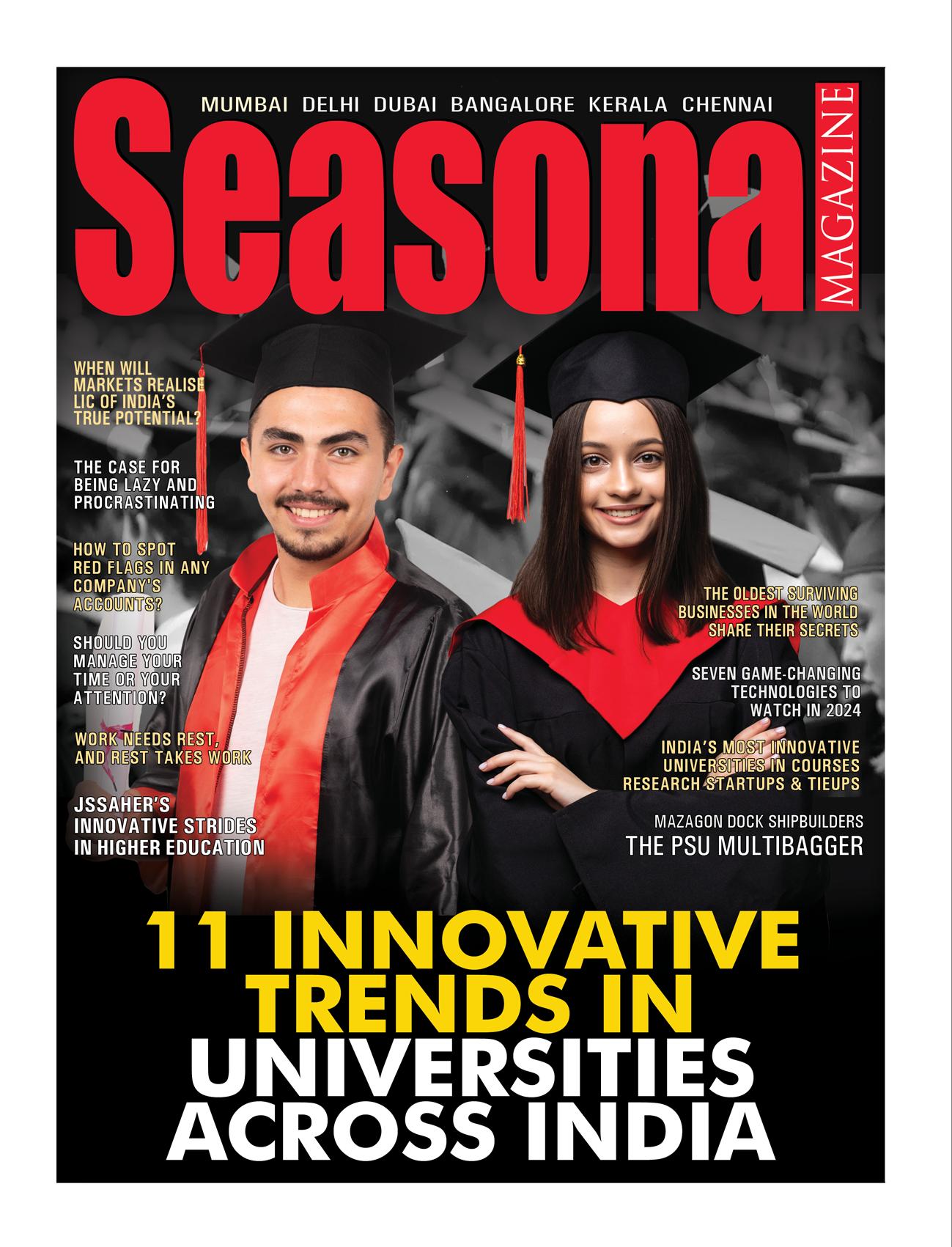
Bahrain BD 1.50 Kuwait KD 1.50 Oman OR 1.50, Saudi Arabia SR 12.00 UAE DH 10.00 UK £ 3.00, US $ 3.00 VOLUME 22 ISSUE 3 MARCH 2024 22 YEARS Rs. 50


www.seasonalmagazine.com
EDITORIAL
Managing Editor
Jason D Pavorattikaran
Editor
John Antony
Director (Finance)
Ceena
Associate Editor
Carl Jaison
Senior Editorial Coordinator
Jacob Deva
Senior Correspondent
Bina Menon
Creative Visualizer
Bijohns Varghese
Photographer
Anish Aloysious Office Assistant
Alby CG
Correspondents
Bombay: Rashmi Prakash
Delhi: Anurag Dixit Director (Technical)
John Antony
Publisher
Jason D Pavorattikaran
Editorial & Business Office
Cochin: 36/1924 E, Kaloor-Kadavanthra Road, Near IGNOU, Kaloor, Cochin-17.
Ph:0484- 2345876, 2534377, 2340080
Mob. 09947141362
Delhi: H.No: P-108, Uppal Southend, Sector 48, Sohna Road, Gurgaon, Haryana – 122018
Ph: 9891771857|099471 41362
Mumbai: 202, Woodland Heights Building, St. Martins Road, Bandra West, Mumbai400 050 Mob: 919947141362
Bangalore: House No: 493, Block 3 3rd Main, HBR Layout, Bangalore-4209731984836, Email:skmagazine@gmail.com
www.seasonalmagazine.com
UK Office: “CRONAN”, Boundaries Road Feltham, Middlesex, UK TW13 5DR Ph: 020 8890 0045, Mob: 00447947181950
Email: petecarlsons@gmail.com
Reg No: KERENG/2002/6803
Printed & Published by Jaison D on behalf of PeteCarlson Solutions Pvt. Ltd. at Cochin. Printed at Rathna Offset Printers, Chennai-14. All Rights Reserved by PeteCarlson Solutions Pvt. Ltd. No part of this publication may be reproduced by any means, including electronic, without the prior written permission of the publisher.


WHILE MARKETS SOAR, A PIECE OF MUNGER’S WISDOM THAT HAS BEATEN THE MARKET FOR 45 YEARS!
Finally it happened. Jerome Powell backed off from destroying the American economy and the world economy further by not only pausing from an interest hike yet again, but by hinting that 2024 might witness up to three rate cuts.
It was the perfect excuse that the Indian markets needed to move even further up. Our nation already had structural strengths due to the ongoing economic reforms and infra push, plus the booming mutual fund inflows, and this move by the US Fed is surely a long-term positive.
Did someone mention long-term just now? Yes, and it was intentional, as there is now a chorus that the market will only go up and up. A little more conscientious souls are saying that only the large-caps may move up now, and not the mid or small caps, which are way too heated up already.
But this too has become a chorus now, and everytime such a chorus is emerging, beware, a correction might just be around the corner. A 10-15% correction is a healthy norm in a bull market, but it can catch most traders and investors on the wrong foot, as this time around it may involve Nifty diving down by over 3000 points and Sensex by over 10k.
In Warren Buffet’s words, yes, it is a time to be fearful. As the Oracle of Omaha said in near perfect words - “To be fearful when others are greedy and to be greedy only when others are fearful.” But such a dip too is sure to be bought in rapidly, giving you a fruitful opportunity to be greedy.
So, this kind of rapid buys against sharp falls is what the long-term qualifier is all about. And not that the markets will go only up and up. Of course, long-term has much more positive implications in the capital markets. Charlie Munger who passed away on November 28 was one of the best practitioners of it.
It is said that many of the quotes and wisdom that people attribute to Warren Buffett were actually from his long-term business partner Munger. One such quote where Munger likely had a great role was this - “Our favorite holding period is forever.” Such was his conviction about a unique advantage that only comes from the long-term holding of stocks - the power of compounding.
Compounding is no rocket science. At its heart, it is only middle school arithmetic. But 99% of investors in stocks and mutual funds do not get to reap its benefits. In fact, Munger excelled in it precisely because it was only basic math. Despite his towering intellectual capabilities - lawyer, architect, analyst, investment strategist, business head & thinker - he was careful to choose only simple generalized knowledge from the various domains.
Munger had a well-known disdain for specialists and their too specialized knowledge. His argument was that specialists tend to focus too much on their specialized knowledge, while ignoring what a multidisciplinary approach could have easily solved, by bringing together basic knowledge from all connected domains.
Anyway, compounding was one such basic skill that Buffett and Munger excelled

Subscriptions Available on iPhone/iPad & Android All health related articles are for first information purposes only. Always consult your doctor before taking any decison affecting your health.
Seasonal MAGAZINE
MEMBER
MAGAZINE
SEASONAL


in, that it won’t be an exaggeration to state that this strategy had more than a 50% role in their astounding success at Berkshire Hathaway which they together grew into the world’s largest holding company worth nearly $800 billion.
Munger’s appreciation for the power of compounding is evident from one of his best known quotes - “The big money is not in the buying and the selling, but in the waiting.” Indeed, what he achieved for Berkshire Hathaway by way of compounding can never be overstated.
In fact, Munger’s strategies including his reliance on long-term compounding was central to Berkshire Hathaway shifting away from Buffett’s philosophy of investing in fair companies at wonderful prices (which he learned at Columbia University from his professor Benjamin Graham, the Father of Value Investing).
Instead, Munger - who never attended any b-school unlike Buffett - convinced Buffett that what they should be doing is investing in wonderful companies at fair prices. Since this involved buying at higher prices than in value investing, it invariably required the power of compounding to work, and it proved to be so, as most of these companies proved to be really wonderful in the long-term!
Buffett himself has gone to great lengths to credit Munger for this complete strategy shift and for creating a new blueprint for Berkshire, often saying that “it was Charlie who straightened me out” and that “listening to Charlie has paid off.”
Between 1978 and 2023, that is, for 45 long years, Berkshire Hathaway grew investors’ wealth at a compounded annual growth rate (CAGR) of 20%. Most people don’t readily realize what this achieved for their public shareholders - it multiplied their wealth by 3700 times within these 45 years!
It is a feat never done before and never likely to be done again in the future. This is especially so as despite this intervening period being witness to America’s largest ever economic growth, that sent its benchmark S&P 500 index over the roof at 163 times wealth creation, Berkshire Hathaway’s performance beat even this superlative returns by nearly 23 times!
So, what exactly is this power of compounding in layman terms? It would be best to describe it with an example. Suppose you have Rs.10 lakhs to invest in 2023. And you invest all that in a stock priced at Rs.50, after a careful study. So you get 20,000 shares.
For this stock to double your wealth, it has to go to Rs. 100 or go up by 100%. Suppose it does that within a year or two. So now you have doubled your wealth to Rs. 20 lakhs. Now, to triple your wealth you know the stock has to triple in value, that is, become Rs. 150 per share. But do you know how much it has to grow now in percentage terms to reach Rs. 150 from Rs. 100? It has to grow only 50%, and it will triple your investment to Rs. 30 lakhs!
If it is an excellent stock in an excellent market, it will achieve that within the next year. So now you have tripled your wealth. You know that if it adds another Rs. 50 to its value, it will quadruple your wealth to Rs. 40 lakhs, that is increase it fourfold. But do you know how much that growth is in percentage terms - from Rs. 150 to Rs. 200? It is merely 33.33%! And similarly for your investment to grow fivefold - from Rs. 200 to Rs. 250 and from Rs. 40 lakhs to Rs. 50 lakhs - all it takes is a 25% up move, which can sometimes happen within a week!
Now suppose you were really fortunate that your chosen stock was one of the best growth stocks in the market, maybe within the top 1% of the best small caps, that becomes a 100X multibagger by 10 years, that is, by 2033. So now your Rs. 50 stock is trading at around Rs. 5000, and your Rs. 10 lakh investment is now worth Rs. 10 crore. What happens now is the real magic.
Do you realize how much your stock has to move up now for it to add one more times in return, that is to add one more 10 lakhs (your original investment), or in other words to move from 100X to 101X? If you are quick at arithmetic, yes, you guessed it right, it should just rise by 1%. Imagine, a stock moving up by merely 1%, and you adding one more times of your original investment to your wealth!
This is what the magic of compounding is all about. Do you think this is a far fetched idea? Absolutely not. Even in the Indian market, there are dozens of stocks that have done this within the last 10 to 20 years, and now with the kind of better quality companies and startups hitting the IPO street, there will be hundreds of companies achieving such feats in the 2023-33 period.
This is why Buffett and Munger always held seemingly boring stocks like Coca Cola and American Express in Berkshire’s longterm portfolio without ever divesting them. These stocks continue to be incredible wealth compounding machines for early investors like them, who have also used their high dividends to reinvest! And this magic of compounding is what drove this remarkable duo to state counterintuitive stuff like, “Our favorite holding period is forever” and that “The big money is not in the buying and the selling, but in the waiting.” It is a wisdom that runs diametrically opposite to the current trend of dangerous practices like only microseconds long algorithmic overtrading, futures & options and heavily leveraged bets.
John Antony
SEASONAL MAGAZINE


CONTENTS

11 INNOVATIVE TRENDS IN UNIVERSITIES ACROSS INDIA
Higher education campuses across India are innovating creatively for the benefit of their students, even as they wait patiently for the campus placements momentum to return.

HOW SAFE ARE OUR UNIVERSITIES COLLEGES AND SCHOOLS FOR OUR CHILDREN?
Since 2017, self-harm by students has been on the rise, and by 2021 itself, India has been losing around 13,000 students per year to suicide, which translates to over 35 student suicides a day. And in the last two

WHEN WILL MARKETS REALISE LIC OF INDIA’S TRUE POTENTIAL?
Life Insurance Corporation of India’s stock might not have performed as per investors’ expectations after its IPO. But the underlying organisation is fighting fit as it has never been, with its renewed focus on growing its nonparticipating products, tech-led customer acquisition and premium collection, growth in its
SHOULD YOU MANAGE YOUR TIME OR YOUR ATTENTION?
Curt Steinhorst, the bestselling author of "Can I Have Your Attention?" is the founder and CEO of Focuswise, with a proven track record of success working with industry leaders such as Deloitte, JPMorgan Chase, Nike, and AT&T, among others. Apart from being a highly regarded thought leader, author and keynote speaker, he works as the Head of People & Culture at Venus Aerospace, where

THE CASE FOR BEING LAZY AND PROCRASTINATING
What if laziness and procrastination could actually help you go further in life, and make you wildly successful?

WORK NEEDS REST, AND REST TAKES WORK
Modern life can be exhausting. Psychologist, author and fatigue expert Vincent Deary says the answer is to learn how to rest.

THE OLDEST SURVIVING BUSINESSES IN THE WORLD SHARE THEIR SECRETS
What does it take to stay open for the long haul - and not just for a few generations, but hundreds if not thousands of years?

CAN BEING PREGNANT CHANGE YOUR DNA?
Pregnancy changes so much about your body, from your hairline to what you dream about each night. When it comes to who you are as a person, motherhood is definitely going to make some changes there,

SEASONAL MAGAZINE
UP’s UNSTOPPABLE UPWARD MARCH IN 2024 AND BEYOND
Is 2024 destined to be the year of India or the year of Uttar Pradesh? Most probably both, and more importantly, it is likely to be India’s year because it is UP’s year.

JSSAHER IS A MATURE UNIVERSITY IN RESEARCH, ACADEMICS & RANKINGS
HOW JGU STAYS AHEAD OF THE CURVE
Imagine a higher education institution in India that brings together faculty from over 50 countries. No, not visiting or parttime faculty, but full-time faculty. A campus where students themselves come from 70+ countries. This


HOW TO AVOID 5 BIG MISTAKES WHEN APPLYING FOR A JOB
Keep firing out CVs and getting zilch back? You might be making one of these five common job application mistakes.
There was a time when India couldn’t originate much worldclass medical research. Such times are slowly but surely changing, and at the forefront of ushering in this change in Indian

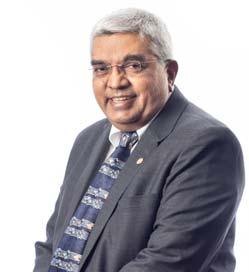
BRIGADE ENTERPRISES EYEING EXPONENTIAL GROWTH NOW
On October 11 this year, Brigade Enterprises completed its first full year of operations under its new leaders - Managing Director Pavitra Shankar and Joint Managing Director Nirupa Shankar. While taking over the

12 INDIAN CITIES WITH THE BEST AIR QUALITY
Here are the 10 Indian cities with lowest Air Quality Index (AQI) to give your lungs a breathing heaven.
EVOKING AWE IN EVERYTHING IT DOES
Different leaders evoke different emotions in their followers as well as competitors. Some evoke respect, some evoke fear, yet others envy, and so on. But there are a very select group of leaders who evoke awe in everyone else, in everything they do. Jitu Virwani belongs to this select club of leaders. Embassy

MAZAGON DOCK SHIPBUILDERS THE PSU MULTIBAGGER
PSU Multibagger might sound like an oxymoron, as despite their best intentions, many listed PSU companies have traditionally struggled to emerge as multibaggers for their investors, as they try to do the delicate act of balancing their nation building

HOW TO SPOT RED FLAGS IN ANY COMPANY'S ACCOUNTS?
The current bull market is causing many new stock market investors to think that they have become experts at spotting multi baggers. What they don’t realise, and probably will, much later, is that rising stock prices are not always a reflection of

JSSAHER’S INNOVATIVE STRIDES IN HIGHER EDUCATION
Mysuru headquartered leading deemed-to-be university, JSS Academy of Higher Education & Research (JSSAHER) is taking giant strides to push innovation in everything it does. From nationally recognized research labs to world

NITTE DEEMED UNIVERSITY
OVER FOUR DECADES OF CONSISTENT PROGRESS IN ACADEMIC EXCELLENCE
Under the visionary leadership of its Founder Chancellor N Vinaya
Hegde, Pro Chancellors Vishal
Hegde and Prof. Dr. Shantharam
Shetty, and Vice Chancellor Dr MS Moodithaya, Nitte Deemed-to-be

SEASONAL MAGAZINE
INDIA IS A FOREIGN THREAT, INTERFERED IN CANADIAN ELECTIONS: CANADA INTEL REPORT
Canada has named India as a ‘foreign threat’, while accusing the country ofinterfering in their elections, months after they alleged India’s role in the killingof pro-Khalistan separatist Hardeep Singh Nijjar on Canadian soil. Theallegation was made by Canadian Security Intelligence Service in adeclassified intelligence report on election meddling. India is yet to respondto the allegation.

MOST DETAILED X-RAY IMAGE EVER OF THE UNIVERSE RELEASED
Astronomers have unveiled the most detailed X-ray image of the universeever. The newly released data from the eROSITA All-Sky Survey reveal thelight of more than 7,00,000 black holes and hundreds of thousands of otherdeepspace objects. The release also details the largest known structures inthe universecosmic web filaments of hot gas that connect galaxies inclusters.

FRESHER HIRING BY INDIAN IT COMPANIES DROPS TO 20-YEAR LOW: REPORT
ROCKY’ ACTOR CARL WEATHERS PASSES AWAY IN HIS SLEEP AT76
Actor Carl Weathers, who starred as Apollo Creed in ‘Rocky’ movies, passedaway aged 76. The cause of his death is not known, however, his familystated that he died in his sleep. Weathers appeared in more than 75 films andTV shows during a career in Hollywood spanning more than 50 years, as perDeadline.

INDIA TO REPLACE TROOPS AT 3 AVIATION PLATFORMS INMALDIVES BY MAY 10: MALDIVES GOVT
After second meeting of India-Maldives High Level Core Group, Maldivesgovernment said that both sides agreed that India will replace troops at 3aviation platforms in the island nation by May 10. Meanwhile, India said, “Bothsides...agreed on set of mutually workable solutions to enable continuedoperation of Indian aviation platforms that provide humanitarian and medvacservices to...Maldives.”

Indian software services companies are expected to end current financialyear with the lowest intake of fresh engineers in over two decades, EconomicTimes reported. The companies are poised to end the year with 70,000 to80,000 freshers, compared to six lakh freshers in FY22. The hiring slumpcomes amid declining global demand for technology services in the post-COVID-19 era.

BENGALURU’S MOUTHWATERING MASALA DOSAS
Masala Dosas are inextricably linked with the ethos of Bengaluru. Iconicrestaurants that serve these hot and crispy delights have achieved cult statuswith each having its own loyal clientele. Many of these are almost a centuryold. One of these is the Central Tiffin Room or simply CTR, which is known forits Benne(Butter) Masala Dosas, since 1920.

PICS TAKEN FROM SPACE SHOW SANDSTORM CROSSING THERED SEA
Astronaut Sultan AlNeyadi has shared pictures of the Earth taken from theInternational Space Station. The photos show a large sandstorm crossing theRed Sea, while the cumulus clouds over certain regions of Yemen indicate athunderstorm, he said. AlNeyadi made history after completing a 6-monthmission on the Space Station last year, marking the longest ever Arab spacemission.

ACTRESS DOLLY SOHI QUITS TV SHOW DUE TO CERVICAL CANCER
Actress Dolly Sohi, who was diagnosed with cervical cancer in September2023, has quit the show ‘Jhanak’. “I was working during...chemotherapy, butnow I’m undergoing radiation and that takes a lot out of me. It was notpossible to continue working for a daily soap,” she told ETimes. “I should givemy body enough time to recover,” Dolly added.

SEASONAL MAGAZINE
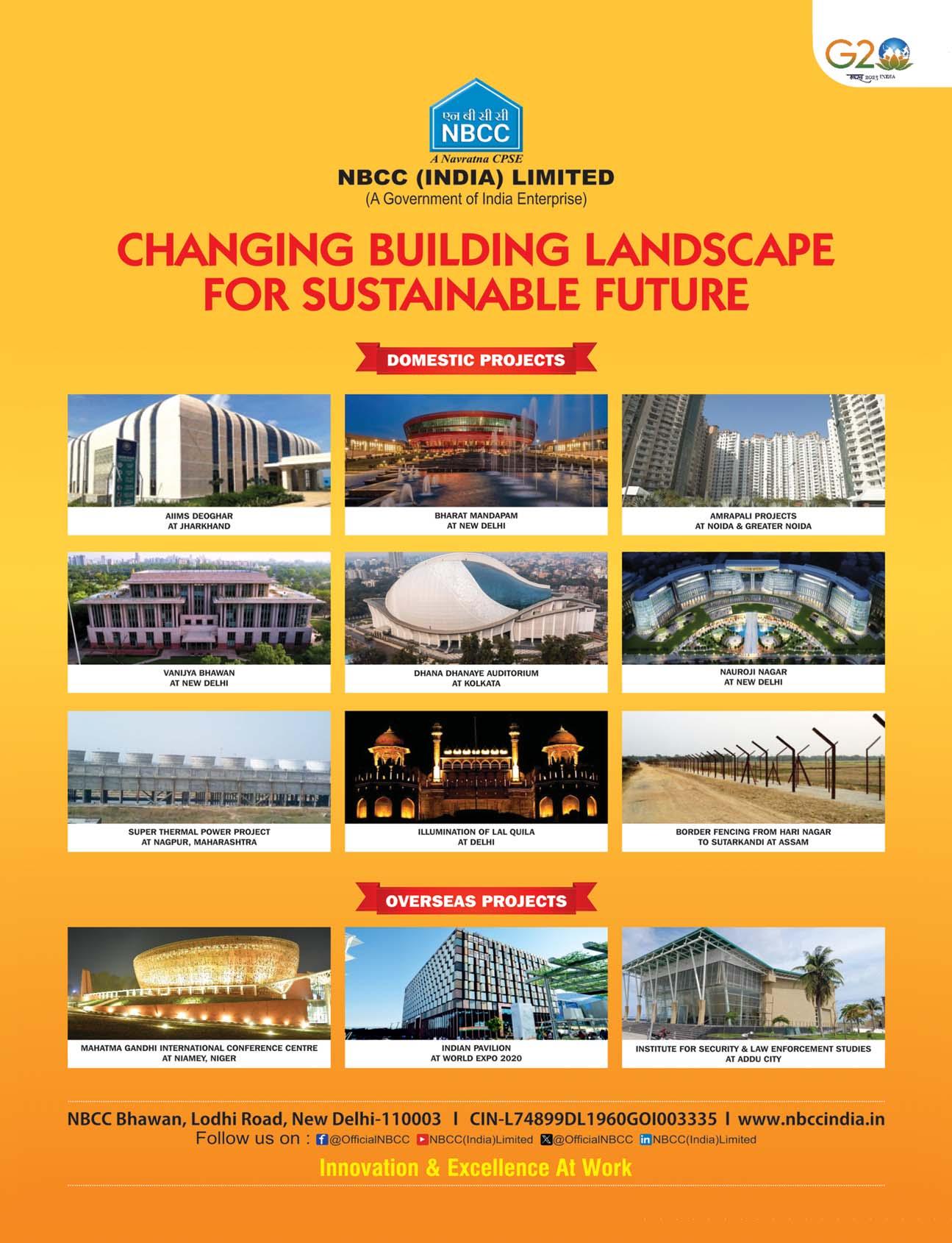
LK ADVANI TO BE CONFERRED BHARAT RATNA, ANNOUNCES PM MODI
PM Narendra Modi has announced that veteran BJP leader LK Advani will be conferred Bharat Ratna. He wrote on X, “One of the most respected statesmen of our times, his contribution to the development of India is monumental.” He added, “His is a life that started from working at the grassroots to serving the nation as our Deputy Prime Minister.”
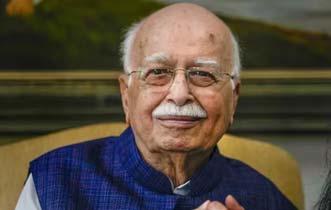
OUR RESPONSE BEGAN TODAY: PRESIDENT BIDEN AS US BOMBS IRAQ, SYRIA AFTER 3 SOLDIERS DIE
Following strikes in Iraq and Syria, US President Joe Biden in a statement said the US doesn’t seek a conflict in the Middle East but if any American is harmed, the country will respond. “Our response began today. It will continue,” Biden added. The Syrian Observatory for Human Rights said at least 13 proIran fighters were killed in the attack.

MARK ZUCKERBERG GETS RICHER BY ¹ 2.33 LAKH CRORE IN A DAY
Meta CEO Mark Zuckerberg’s net worth has surged by $28.1 billion (¹ 2.33 lakh crore) in a day, making him the richest he has ever been with $170.5 billion wealth. He is now the fourth richest person in the world, said Bloomberg. Shares of Meta rose by 20% on Friday after the company declared better-than-expected quarterly results and its first-ever dividend.

META ADDS $197 BILLION IN MARKET VALUE, BIGGEST ONE-DAY GAIN IN MARKET HISTORY
Facebook and Instagram’s parent company Meta has recorded the biggestever one-day increase in a company’s market value. The social media group’s market capitalisation increased by $197 billion to $1.2 trillion after it closed 20.3% higher on Friday. Meta surpassed the previous record that saw SAmazon and Apple each jump about $190 billion in a single day in 2022.


BJP MLA GANPAT SHOOTS AT SHINDE SENA LEADER MAHESH AT MAHARASHTRA POLICE STATION
BJP MLA Ganpat Gaikwad allegedly opened fire at Shiv Sena (Eknath Shinde faction) leader Mahesh Gaikwad on Friday night at Hill Line Police Station in Maharashtra’s Ulhasnagar. Five bullets have been taken out from Mahesh Gaikwad’s body, but his condition remains critical. “Mahesh Gaikwad and Ganpat Gaikwad had differences about something...An investigation is underway,” DCP Sudhakar Pathare said.

WORLD’S MOST SUBSCRIBED YOUTUBER MR BEAST REVEALS HE HAS ASTIGMATISM
World’s most subscribed YouTuber Jimmy Donaldson, also known as MrBeast, revealed that he has astigmatism. “This might sound crazy, but Ithought things far away looking super blurry was normal...I got my eyeschecked and apparently have a bad astigmatism,” he wrote. “Started wearingcontacts recently...My eyesight is 3x better and I don’t squint/can...open myeyes normally,” he added.

IRAQ WARNS OF DISASTROUS CONSEQUENCES AFTER US ATTACK
After US attacked Iranian-backed groups in Iraq and Syria over killing of three US soldiers by Iran-affiliated militias in Jordan, Iraq warned of disastrous consequences. A spokesperson for Iraq’s Prime Minister Mohammed Shia’ Al Sudani said the US strikes are a violation of Iraq’s sovereignty. Our response...will continue at times and places of our choosing,” US President Joe Biden said.
SEASONAL MAGAZINE
SELF-HELP
The Dark Side of the Obsession With Focus
The New York Times bestselling author and contrarian self-help writer Oliver Burkeman talks to host and ace podcaster Derek Thompson about his new audio essay series on work, focus, and interruptions - and how, too often, our emphasis on eliminating distractions ironically takes us away from the most important things in life. What do we get wrong when trying to eliminate all distractions and interruptions while working? And why it can be harmful to categorize all interruptions to your focus as problems.

erek Thompson: I want to talk about two audio essays that you recently recorded on the Waking Up app that really hit me in a very deep way. I have written and read and podcasted so much about productivity, and for most of my writing and reading and podcasting career, maybe the most persuasive idea in the space of productivity that I keep coming back to again and again is this: If you want to get anything worthwhile done, you need deep focus, deep work, deep attention, and that means that it is, above all, essential to minimize what is sometimes called “context switching,” bouncing between tasks and shedding precious focus in the act of switching. These principles of eliminating interruption, eliminating distraction are so commonly repeated that they’re almost obvious to the point of being trite, and that’s why I was stopped in my tracks
by the persuasiveness and the wisdom of your recent audio essay, which said, “No, there is actually a subtle problem with these pieces of ancient wisdom.” So tell us, what is the problem with living life with a strong emphasis on eliminating interruptions?
Oliver Burkeman: I find it very appealing to be contrarian about these things, but I also want to make sure I’m being truthful about them, so I feel like I have to say, I don’t think that this is false, the idea that context switching imposes this drain on focus and attention. But I think that the subtle problem that underlies all of this is that the more you go through your day with a very clear, conceptual, intellectual plan for how it should go, for what the boundaries of your time are, for what you’re doing for the next three hours and what will be a problem if you get interrupted or blown off course, the more
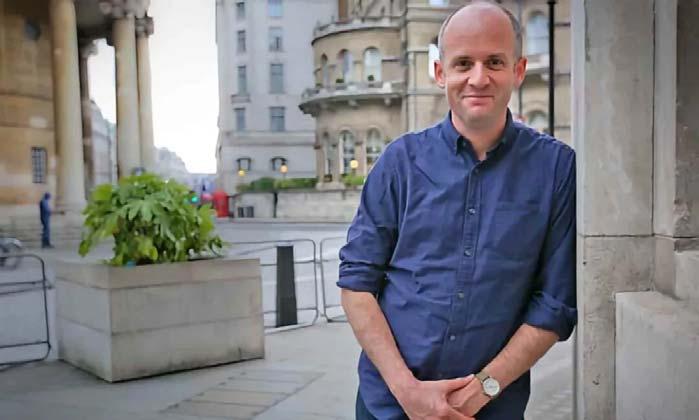
you bring that to your day, the worse it is when you are interrupted. Because reality collides with this brittle overlay that you are placing on top of it. And even more subtly, perhaps, more things end up getting defined as interruptions and as problems.
Thompson: Can you give me an example of this idea that we are quietly driving ourselves crazy by over-defining interruptions as problems?
Burkeman: If I’m working from home and it’s the afternoon and it’s part of the day when my arrangement with my partner that day is that I’m working and she is hanging out with our 7-year-old son, if he bursts into the room to tell me excitedly about something that happened to him at school that day—as he may do in the middle of this podcast recording, just as a warning—there may be contexts where I can’t entertain that interruption, but I don’t want to be deliberately signing up to an approach to productivity that, first of all, defines that lovely moment as a bad thing because it doesn’t fit my scheme when I’m someone who does have the good fortune and the privilege to be able to entertain that interruption. Obviously, if I was not working at home or working for a terrible boss who would fire me the moment I was distracted, I couldn’t do that, but I can, and I risk this self-imposed desire to turn it into a problem because I’ve got my little schedule drawn up, and it contradicts that schedule.
I was just going to say, alongside that, there’s always been this question in my mind when the costs of task switching, costs of interruption are discussed, often with reliance on neuroscience and stuff. I’m always wondering, Why is the conversation always about responding to that situation by trying to eliminate task switching and never about getting better at task switching? I mean, if all this stuff about neural plasticity is where it’s at, then maybe we ought to be able to get a little bit better at moving between tasks in that fashion.
(Credit: Derek Thompson) SEASONAL MAGAZINE



11 INNOVATIVE TRENDS IN UNIVERSITIES ACROSS INDIA
11 INNOVATIVE TRENDS IN UNIVERSITIES ACROSS INDIA
Higher education campuses across India are innovating creatively for the benefit of their students, even as they wait patiently for the campus placements momentum to return.
HIGHER EDUCATION SEASONAL MAGAZINE

SEASONAL MAGAZINE
It is a worldwide phenomenon that when growth goes on unabated in any sector or geography, innovation suffers. This is normal as when business-as-usual is enough, where is the incentive to innovate radically?
Soon into the academic year 2023-24, disaster had struck in the form of an impending recession in Europe and the US, which sent shockwaves across the world including in India, with mass layoffs especially in technology, the top employment generator.
This has drastically reduced the campus placements across India, making not only the students and their parents, but their universities nervous.
The tech majors also have a double excuse this year, as sector-specific Generative AI tools are making their presence felt in various industrial sectors.
Startups, on the other hand, are facing a funding winter which has forced them to curtail expansion plans and with it employment generation. Startups had been a significant contributor to the boom in campus placements in India, during the past few years.
While the US Federal Reserve has since then hinted at making a much needed course correction in interest rates, it will be more than a year or two before its positive impact trickles down from the banks and institutional investors, to the economy first, to the corporates and startups next, and then to the campuses worldwide including in India.
But one thing is for sure - this temporary lull in campus placements is sure to drive up innovation across universities, institutions and colleges across India. Already there are several such trends appearing across the higher education sector in the country. Here are 10 such innovative trends in universities across India:
 SEASONAL MAGAZINE
SEASONAL MAGAZINE

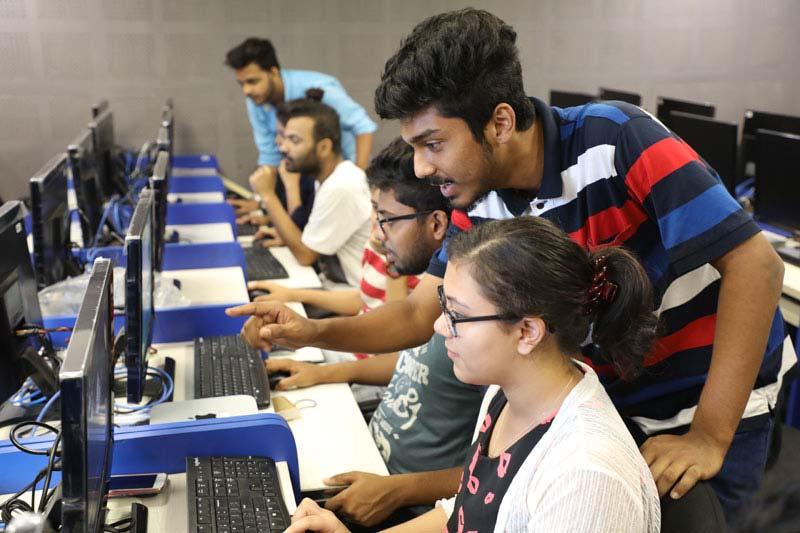
1) AI & BIG DATA ENTER INTO MORE COURSES
The most evident emerging trend is of course the launch of courses with specialization in Artificial Intelligence, Data Science & Robotics. But an even greater trend is the inclusion of these subjects on a smaller scale in non-tech majors like business, law, medicine and more. For instance, Data Science is
fast emerging as a core course in most professional streams, as its applications are across the spectrum of all services, manufacturing and R&D sectors.
2) NON TECHIES WOULD NEED SOME TECH TRAINING
IBM’s Global Managing Partner for Generative AI, Matthew Candy recently remarked that thanks to AI, a computer science degree may no longer be necessary to get a job in the technology sector. Candy attributes it to AI enabling those without technical skills to develop, test and deploy products fast, on their own. But what is unsaid here is the fact that these non tech people would now need a basic to intermediate level of knowledge about how the Generative AI tools work their magic.
3) INTEGRATED PROGRAMS ARE BACK IN FAVOUR
Another emerging trend in the campuses is the slow but steady rise in popularity of integrated programs that go all the way up to PhD or at least
SEASONAL MAGAZINE

an MTech or MSc. With campus placements for undergraduate degree holders expected to face a continuing lull, more students may opt for integrated programs that guarantee their promotion to postgraduate and doctoral courses without undergoing competitive entrance examinations at each level.
4) FOUR YEAR DEGREES FACE UPHILL TASK
Efforts to expand India’s traditional arts, science & commerce degrees to four years with multiple entry & exit options have run into rough weather in higher education bastions like Karnataka. Most universities and colleges in the state opposed such a move recently, citing that it will only encourage more students to drop out from even basic degrees, thereby hitting the Gross Enrolment Ratio (GER) negatively.
5) PRIVATE UNIVERSITIES MAY ADOPT 4-YEAR DEGREES
Another reason cited against the four year degree by most institutions, especially the publicly funded ones, is the lack of extra resources by way of faculty and infrastructural facilities to accommodate one more year of education at the undergraduate level. But well performing private and deemed universities are not likely to face this problem, as they have both generous faculty
strength as well as extra built-up space and facilities to be used, if such a one-year extension is made mandatory for all institutions.
6) PRIVATE UNIVERSITIES ARE WAY AHEAD IN RESEARCH
Private and deemed universities are also making their leadership felt in another domain - researchas public universities except for some notable exceptions are lagging far behind here. Private universities achieved this by investing heavily into recruiting research guides, and in building up specialized science labs and technical

MAGAZINE
SEASONAL

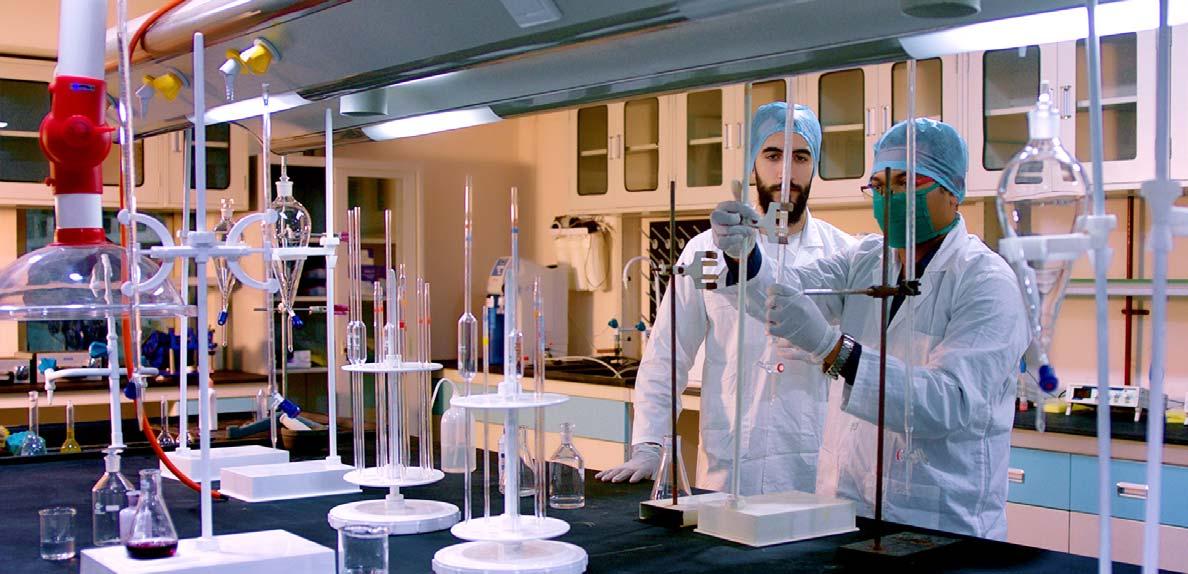
infrastructure like 3D printers and high performance computers and networks. Based on such capabilities, some of the leading private & deemed universities have been able to attract significant numbers of funded projects given out by CSIR and other government agencies.
7) TWINNING PROGRAMS ARE BACK WITH A DIFFERENCE
Several noted private universities have also launched twinning programs with renowned universities in developed nations. Despite false starts by multiple universities multiple times, authentic twinning programs are likely to thrive, and a big difference in recent years is that the twinning is often bi-directional with overseas students equally eager to study in India.

8) IT IS CURTAINS FOR DESI FOREIGN DEGREES
UGC has recently come down heavily on some universities and edtech brands for promoting ‘study in India and get a foreign degree’ programs. The regulator has warned that such new age degrees won’t be recognized in India.
9) DEGREES ARE GOING TAMPER PROOF
To combat the unregulated online degree menace, reputed institutions like Delhi University are bringing currency kind of authenticity to degree certificates, along with including mothers’ names in the degree records, as is the practice in tax and bank records.
10) WORLD IS COMING TO LEARN AYURVEDA
Apart from mutual twinning programs, several private universities in the health sciences sector are now experiencing heightened interest from foreign students to enrol for ayurvedic degree programs like BAMS in India.
11) YOU CAN STUDY ENGINEERING PART TIME
On the technical education front, AICTE has recently allowed its affiliated institutes to offer BTech/BE degree programs like evening courses to working professionals. This will go a long way in a scenario where students need to take up smaller jobs initially to support themselves and their families, after their degrees or diplomas, even while they are enabled to complete their graduate degrees in engineering to pursue better jobs.
SEASONAL MAGAZINE
JSSAHER’S INNOVATIVE STRIDES IN HIGHER EDUCATION
Mysuru headquartered leading deemed-to-be university, JSS Academy of Higher Education & Research (JSSAHER) is taking giant strides to push innovation in everything it does. From nationally recognized research labs to world renowned faculty members to playing host to coveted international scientific conferences to startup incubation to constant upgradation of infrastructure and facilities, JSSAHER is not leaving a stone unturned in its quest to stay ahead of the curve among health and life science universities in the country. JSSAHER’s visionary leadership includes JSS Mahavidyapeetha’s Head Sri Shivarathri Deshikendra Swamiji of Suttur Mutt, JSS Mahavidyapeetha’s Executive Secretary C.G. Betsurmath, JSSAHER’s Pro-Chancellor Dr. B. Suresh and its Vice-chancellor Dr. Surinder Singh.

INDIA’S MOST INNOVATIVE UNIVERSITIES IN COURSES, RESEARCH, STARTUPS & TIEUPS
SEASONAL
MAGAZINE
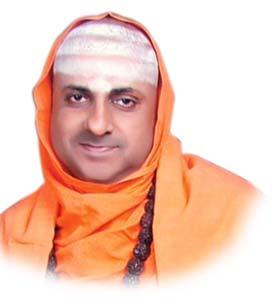
With over 1,61,000 members, the American College of Physicians (ACP) is undoubtedly the largest medical-specialty organization in the United States. In other words, it is the largest and the most esteemed professional group of doctors who are internists or physicians who are practitioners of internal medicine or general medicine as it is commonly called today. Research students even in India, even if they have not heard of ACP, must have surely heard of the weekly research publication, ‘Annals of Internal Medicine’, which is ACP’s core research journal, the highest ranked & cited journal for internal medicine, and regarded as one of the top five medical journals worldwide.
ACP selects and awards internal medicine specialists for a few key achievements in their work annually. In 2023 too ACP announced these annual awards, and the American College of Physicians Distinguished Mentor Award in 2023 was bagged by Dr. M Suresh Babu, who serves as Professor of Medicine, JSS Medical College & Hospital, JSSAHER, Mysuru. While giving away the award, the American College of Physicians noted that this award is in recognition of his outstanding mentorship
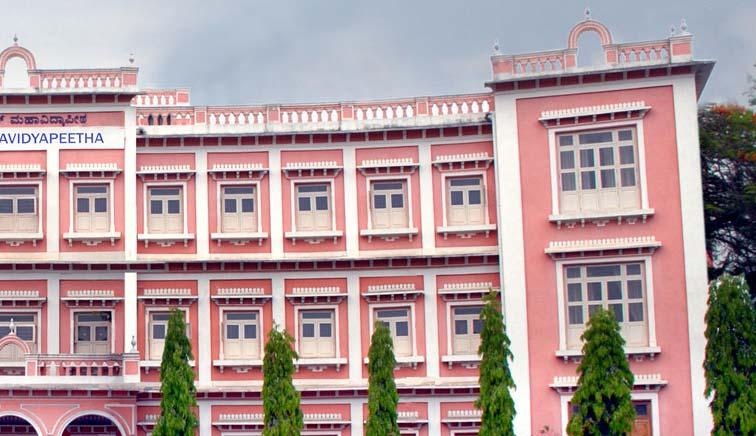
SEASONAL MAGAZINE
Jagadguru Sri Shivarathri Deshikendra Mahaswamiji Chancellor
in the field of clinical medicine. Dr. Suresh Babu is also a Fellow of the Royal College of Physicians, Edinburgh, UK. With such distinguished practitioners and researchers in its fold, it is no wonder that both JSSAHER’s medical college and hospital have been thriving as leaders in research and clinical practice.
Recently, the JSS Medical College also received a special recognition from the Government of India’s Indian Council of Medical Research (ICMR). This happened when JSS Medical College’s Centre of Excellence in Molecular Biology and Regenerative Medicine (CEMR)
at the Department of Biochemistry was recently recognised by ICMR as an ICMR-Collaborating Centre of Excellence (CCoE). While bestowing this recognition on CEMR for a period of five years, ICMR noted that this is in consideration of its scientific accomplishments.
Dr. Prashanth Vishwanath, JSSAHER’s Dean of Research and Dr. Akila Prashanth, Professor and Head of the Department of Biochemistry, received the recognition from Dr. Rajiv Bahlat, the Director General of ICMR, at the ICMR headquarters in New Delhi recently. As an ICMR-CCoE, this JSSAHER unit will engage in extensive
 SEASONAL MAGAZINE
SEASONAL MAGAZINE
cooperation with ICMR to develop guidelines, undertake multi-centric projects, and enhance capacity building efforts in the country. The available resources in such centers will be shared with other centers for the purpose of student training, R&D, and capacity development for enhancing the national research talent pool for advancing medical research in India.
A prime advantage of studying at JSSAHER is the unique exposure students get from the depth and breadth of the international conferences it hosts. A recent example was the HEAL-BioTec 2023 hosted by the JSS School Of Life Sciences. This three-day International Conference on ‘One


Health: Biotechnology as a Catalyst for Sustainable Development was organized by the Department of Biotechnology and Bioinformatics, JSSAHER. This conference was funded by three Indian Government bodies including the Department of Science and Technology (DST), the Science and Engineering Research Board (DST-SERB) and the Department of Biotechnology (DBT), and it achieved its objective to discuss and further the new concept of ‘One Health’ which serves as a catalyst for achieving the Sustainable Development Goals (SDGs) by 2030.
Also included in the G20 agenda, the ‘One Health’ approach aims to improve disease management by bringing together health, food and environmental scientists as well as policy specialists from different parts of the globe, to help in achieving SDGs by this decade’s end. It was a never before opportunity for JSSAHER students, faculty members, and researchers to interact with world renowned experts in these contributing domains and gain integrated knowledge about the One Health approach. Sanjay Kumar Varshney, Advisor & Head, International Collaborations, Department of Science & Technology (DST), Govt. of India, was the chief guest and delivered the keynote address that described how Artificial Intelligence is speeding up clinical trials among other aspects.
Dr. Hans Jorgensen, Professor, University of Copenhagen, Denmark, who was the guest of honor, delivered a plenary lecture, with another plenary lecture by Dr. Anil Kaul from Oklahoma, USA. Other eminent scientists who delivered invited lectures
SEASONAL MAGAZINE
C.G. Betsurmath, Executive Secretary

include Dr. Jung-Hyun Kim (South Korea), Dr. Raj Kumar (Boston, USA), Dr. Claus Bang-Berthelsen (Denmark), Dr. S. Pradeep Kumar of Google and Dr. Manju Bansal from IISc. Apart from research scholars, faculty members and students, the attendees included leading industrialists from concerned sectors. Hosted both physically and in
online mode, the mega conference benefitted at least 500 students directly, apart from the thousands of viewers who tuned into it from the world over.
During the last two quarters itself, the students, faculty and researchers of JSSAHER have been blessed with the university hosting several such events. These included an international conference on the genetics & epigenetics of cancer, a two day fair on forensic and investigative science, a live hysteroscopy workshop for gynecologists & postgraduate students, an international conclave on the occurrence and prevention of tuberculosis, and a rally to educate people on the importance of adult immunization especially for the elderly and high risk patients, conducted by JSSAHER’s Adult Immunization and Travel Medicine Center.
JSSAHER also continued to fortify its already impressive facilities and infrastructure in its core School of Life Sciences at Mysuru. During the last quarter, the deemed university launched the School’s
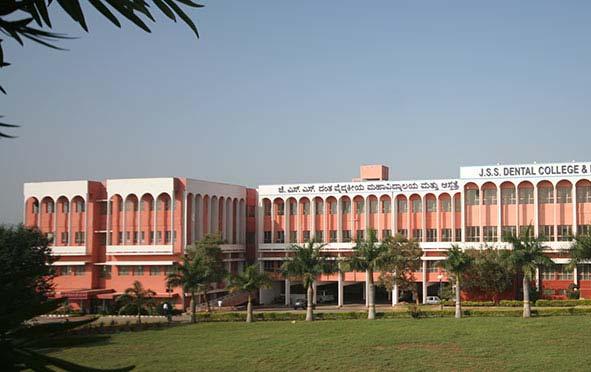 Dr.B.Suresh, Pro Chancellor JSS Academy of Higher Education & Research
SEASONAL MAGAZINE
Dr.B.Suresh, Pro Chancellor JSS Academy of Higher Education & Research
SEASONAL MAGAZINE
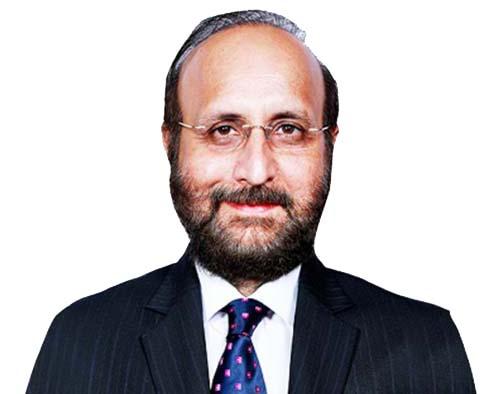

new Lecture Hall Complex with the inauguration done by Karnataka’s Minister for Medical Education, Sharan Prakash Patil. The School of Life Sciences offers 14 post graduate programs, 6 undergraduate programs and 2 diploma courses

in the regular stream, as well as several courses in the Open & Distance Learning (ODL) mode.
During the occasion, Minister Sharan Prakash Patil also inaugurated the University’s incubation facility named ‘Sparkle Cine’ for boosting the start-up initiatives by students, faculty and interested entrepreneurs. Sparkle Cine has been active for some quarters now, but now it gets its own infrastructure and facilities, towards fulfilling its stated aim of furthering the start-up culture in the university by translating educational excellence into actionable ideas for entrepreneurship and innovations. Also launched during the event was a new pharmaceutical chemistry lab.
Over the almost one and a half decade of its existence, JSSAHER has steadily improved not only on the quality front, but on the volume of graduates and postgraduates it grooms in each batch. Last quarter was witness to this phenomenon once again, during the fourteenth convocation of JSSAHER. All together, 2,546 graduands were awarded their undergraduate, postgraduate & diplomas this year, apart from 49 candidates who were awarded PhD degrees. Chairman of UGC Prof. Mamidala Jagadesh Kumar was the chief guest who delivered the convocation address and gave away medals to 55 academic toppers.
Dr. Surinder Singh, Vice Chancellor JSS Academy of Higher Education & Research
SEASONAL MAGAZINE
Dr. Manjunatha B, Registrar JSS Academy of Higher Education & Research
OVER FOUR DECADES OF CONSISTENT PROGRESS IN ACADEMIC EXCELLENCE
Under the visionary leadership of its Founder Chancellor N Vinaya Hegde, Pro Chancellors Vishal Hegde and Prof. Dr. Shantharam Shetty, and Vice Chancellor Dr MS Moodithaya, Nitte Deemed-tobe University has been ranked among India’s Top 100 universities for the 5th consecutive year in the NIRF rankings, and it has also jumped 10 ranks this year to the 65th position. Two of Nitte’s eminent scientists Dr Indrani Karunasagar and Dr Iddya Karunasagar have also bagged top ranks of 11 and 13 respectively in the field of microbiology by Research.com. Nitte alumni like Vidya Kamath Pailodi and Dr. Saritha Arunkumar have brought global accolades to the university recently, while on the national stage two of Nitte students have won the 1st and 6th rank in the Joint CSIR-UGC NET Examination under the Life Sciences category.

NITTE DEEMED UNIVERSITY SEASONAL MAGAZINE

iebel Scholars program needs no introduction among cutting-edge universities in the world and their graduate students and startup entrepreneurs. Established by the Thomas and Stacey Siebel Foundation in 2000, the Siebel Scholars program selects around 90 graduate students each year from some of the finest universities in the world to be a Siebel Scholar. So far only 1800 Siebel Scholars have been selected and they form an elite club of researchers, entrepreneurs, engineers, scientists and top rung of managers.
There are only 16 universities from which Siebel Scholars have so far been selected and they include prestigious names like Harvard, Stanford, John Hopkins, MIT, Princeton, UC Berkeley, University of Chicago, Wharton, and University of Illinois Urbana-Champaign, which is also incidentally the alma mater of billionaire businessman Thomas Siebel, one of the world’s most successful tech entrepreneurs who founded Siebel Systems which was later acquired by Oracle.
Recently, the Siebel Scholars Foundation announced its 2024 Class of Siebel Scholars, honouring 83 exceptional graduate students from top universities around the world in the fields of bioengineering, business, energy science, and computer science. Five Computer Science students from the University of Illinois Urbana-Champaign were named to this year’s class, and among them is Vidya Kamath Pailodi, a second-year graduate student working with Professor George Chacko to explore the field of Computational Scientometrics.
Before arriving at the University of Illinois Urbana-Champaign, Vidya worked as a software engineer in the thermotechnology department at Robert Bosch Engineering and Business Solutions in Bengaluru, India. This was shortly after Vidya graduated as a Gold Medalist in ECE from the NMAM Institute of Technology in Nitte, India where she earned an undergraduate degree in Electronics and Communication Engineering.
Vidya’s achievement is something about

which Nitte Deemed University can be proud of as Nitte Mahalinga Adyanthaya Memorial Institute of Technology (NMAMIT) is a constituent engineering college of Nitte Deemed University. This achievement is all the more impressive as 4 out of the 5 students from University of Illinois who won this prestigious scholarship are from India, from prestigious institutions including IIT Indore, IIIT Hyderabad & Manipal Institute of Technology.
Vidya’s and Nitte Group’s achievement in this regard is by no means a one-off phenomenon on the world stage. Recently, Dr. Saritha Arunkumar who holds the position of IBM’s Public Cloud World Wide Technical Leader in Security, in the United Kingdom, won the prestigious award, The Princess Royal Silver Medal, often called the
Oscars of Engineering.
Bestowed by the United Kingdom’s Royal Academy of Engineering, the award was presented to Dr. Saritha by none other than HRH Princess Anne, Sister of King Charles, in London. The award was in recognition of this leading cyber-security expert’s invaluable and critical contributions to shaping security in emerging areas such as the cloud, blockchain, and biometrics.
Earlier, Dr. Saritha has been recognised as an IBM Master Inventor, an IBM Super Hero, Financial Times' Top 100 BAME Technology Leaders Award, and The Inc Magazine’s Top 10 Business Women to Follow in 2022. Her achievement of winning the The Princess Royal Silver Medal is regarded as an achievement for India, and of course for Nitte Group as
SEASONAL MAGAZINE
N Vinaya Hegde Chancellor
Dr. Saritha had graduated from the NMAM Institute of Technology in 2000 as an Electronics & Communication Engineer, and was also the topper of her batch.
Vidya’s and Dr. Saritha’s education and grooming at NMAM Institute of Technology happened much before it became a constituent college of Nitte University. But this only goes on to add further sheen to the farsighted vision and care accorded by Nitte Educational Trust led by its Chancellor N Vinaya Hegde, years or even decades before it became a formal university.
Nitte Deemed University is a part of Nitte Group run by Nitte Education Trust, which was founded in 1979 by Justice Kowdoor Sadananda Hegde, former Chief Justice of the Supreme Court and former Speaker of the Lok Sabha. Offering education in diverse areas of learning, Nitte today offers a total of 130+ programs including medicine, engineering, management, hospitality, allied health sciences, dentistry, pharmacy, nursing, physiotherapy, speech and audiology, media & communication and architecture. The Trust has established 40+ institutions spread across three campuses at Nitte, Mangalore and Bangalore and has over 20,000+ students and 4500+ faculty in its campuses.
Equipping its students for outperformance continues even to this day at Nitte University. In the national level Joint CSIR-UGC National Eligibility


Test (NET) exam conducted a few months back, a total of 78,168 students had appeared under the Life Sciences category. NET exam is conducted to determine the eligibility for Junior Research Fellowship (JRF) and Lectureship (LS) / Assistant Professor post in Indian universities and colleges.
Among these over 78,000 students who appeared under the life sciences category, there were students from the Nitte University Centre for Science Education & Research (NUCSER) too. And guess who won the national level top ranks? Twin sisters, Rhea Kishore and Reena Kishore, MSc Biomedical Science students at NUCSER, achieved the 1st
and the 6th Rank nationally!
It was an incredible performance by these Nitte students as Rhea scored a total percentile of 99.94 whereas Reena scored 99.66. Both of them were mentored at the university by Dr. Akshath US, Scientist G-II, and Dr. Anirban Chakraborty, Professor & Director of NUCSER, and the achievement of these twin sisters has become another proud moment in these recent times for Nitte University.
Such mentoring in both the academic and leadership aspects is a culture that permeates the entire university starting from the very top rungs. Vice Chancellor
 Vishal Hegde Pro Chancellor
Prof. Dr. Shantharam Shetty Pro Chancellor
SEASONAL MAGAZINE
Vishal Hegde Pro Chancellor
Prof. Dr. Shantharam Shetty Pro Chancellor
SEASONAL MAGAZINE
N Vinaya Hegde and Pro Chancellor Vishal Hegde have been known to intervene for the student community at every appropriate forum. Such an instance happened during the university’s 2022 convocation, when Vinaya Hegde requested UGC Chairman and Chief Guest Prof. Mamidala Jagadesh Kumar to upgrade the Mechanical, Civil and Electrical Engineering courses with components from computing and electronics to make them relevant at the changing workplace.
NMAMIT that produced winners like Vidya and Dr. Saritha today offers both conventional and advanced engineering branches like Artificial Intelligence & Machine Learning, Robotics & AI, Biotechnology, Civil, Computer & Communication, Electrical & Electronics, Electronics & Communication, Information Science, Mechanical Engineering etc.
Pursuit of values is another dimension where the Nitte University leaders excel, starting right from the Chancellor. Recently, pioneering orthopaedic

Dr MS Moodithaya
Vice Chancellor
surgeon and Pro Chancellor of Nitte University, Prof. Dr. Shantharam Shetty, who was the Chief Guest of OASISCON 2023, a 3-day Conference Of Orthopaedic Associations Of Six South Indian States Hosted By Karnataka Orthopaedic Association, delivered such a value based lesson for fellow orthopaedic surgeons.
Said the Nitte Pro Chancellor, “During those years (when I started my practice),


there were only three to four orthopaedics, including myself, in Mangaluru, while at present, there are over 200 orthopaedics in the city, which is a tremendous growth in this field. Yes, we all want to earn money but always remember to serve your patient first and then think of money. Practice for need and not for greed,” added Dr Shantharam Shetty.
Startup incubation is another domain where Nitte University is starting to make impressive gains. Recently, an innovative betel leaf tea bag product was developed by young startup entrepreneur Sandeep Eshanya with the support of Nitte University’s DST Technology Enabling Center and Dr Mamatha BS, an expert in food technology and faculty at Nitte University Center for Science Education and Research.
While the nutritional value of betel leaf is noteworthy, being rich in fibre, vitamins A, B, C and minerals like calcium, iron and potassium, it was an arduous and time-consuming process that took several iterations of laboratory studies and consumer acceptance trials to ready a process for preparing tea bags from betel leaves without losing nutrients, medicinal properties and in the original flavour as well as incorporating additional flavours as per user preference.
Entrepreneur Sandeep Eshanya was all praise for Nitte University’s support, when he said, “NITTE University boosted my confidence when I pitched my idea. They have been a constant support to convert my dream into reality. I have now sent samples to 10 countries such as Sri Lanka, United States, UK and many more.”
There is more to Nitte University’s support for such startup entrepreneurs than in product development. Under the guidance of Prof. Dr Iddya Karunasagar, Advisor - Research and Patents, at Nitte University, the process of producing the betel leaf tea bags has been protected by a shared patent, and Nitte University has authorised Eshanya Beverages, the concerned start-up to commercialise the technology through an agreement, so that the product is effectively made available in the Indian and overseas markets.
SEASONAL MAGAZINE
Nitte Deemed University also has a robust research program that offers Fulltime and Part time Ph.D Course in the faculties of Medicine (including PreClinical, Para-Clinical & Clinical), Dentistry, Pharmacy, Physiotherapy, Allied Health Science, Nursing, Biological Sciences, Speech & Hearing, Engineering, Commerce & Management, Applied Sciences, Business Administration and Humanities. Meritorious Full Time candidates receive Nitte PhD Fellowships of Rs. 20,000/- per month as per the University’s guidelines. Nitte takes the quality element of its PhD program quite seriously, and there is an impressive lineup of Research Guides, and the selection of candidates is based on a national-level entrance test, statement of purpose and personal interview.
Nitte University organises various workshops and seminars to bring industry experts right into the campus. A similar workshop to mark the World Food Safety Day was organised by Nitte DST Technology Enabling Center in association with CII, FSSAI & KCCI, and was moderated by Nitte faculty Dr. Indrani Karunasagar. She emphasised the need to understand the basis for food safety standards and the best practices that food business operators from farm to plate need to follow to comply with the standards. The discussions covered improving food hygiene and food safety in all segments of the food industry including street vendors, quality control, certifications and accreditations required by food

testing laboratories.
Nitte is also forever forging meaningful tie-ups with select industry majors in training and certification for the employability of its students. A few months back it forged such a tie-up with upGrad Campus, the higher education arm of upGrad, one of Asia’s largest integrated career skilling, workforce development & placement companies.Under this collaboration, UpGrad Campus will support Nitte BTech students with one of the hottest coding skills today - Full Stack Development (FSD) - so that they are adept with the tech requirements of the modern day workplace.
Spread over a period of 4 years, the FSD specialisation begins in the first year integrated within the university

curriculum and has been designed for engineering aspirants who aim to build a career in the Information Technology domain. It will cover around 1400 hours of learning content with over 300 live sessions, 11 projects and case studies, in sync with the B.Tech syllabus to ensure learners get higher experiential learning.
It will also encourage live & interactive faculty engagements, alumni networking, and industry-specific sessions/simulations to enhance the overall subject understanding to further enable them with the expertise required to succeed in the said industry. The tieup is aimed at making Nitte students stand out from the lakhs of Engineering students in India.
Management education is another domain where Nitte Deemed University is a force to reckon with, thanks to its longstanding experience through its Justice KS Hegde Institute of Management (JKSHIM). This highly ranked MBA institute recently welcomed its 26th batch of MBA students, with a unique value-add. A guest of honour at the event was former alumni Sajan Murali, who is now the CEO of Turtle Wax Media Ltd. Sajan belongs to the 1999-2001 batch of MBA at JKSHIM, and called upon the current batch of MBA aspirants to focus on imbibing the soft skills.
SEASONAL MAGAZINE
JKSHIM which recently celebrated its Silver Jubilee, had Dr. Debashis Chatterjee, Director, IIM Kozhikode, delivering the Silver Jubilee lecture on the theme of ‘Leadership Challenges'. Noting that Nitte Founder Justice KS Hegde was a visionary with values, Dr. Chatterjee said, “Principle and value centred leadership is the need of the hour. Life has no meaning without values and principles. Integrity is the hallmark of life. These virtues need to be imbibed during schooling and college days.”
Bengaluru based Nitte Meenakshi Institute of Technology (NMIT), which is promoted by Nitte Education Trust, but which is not technically part of Nitte Deemed University yet, recently hosted its 1st International IEEE conference on ‘Networks, Multimedia and Information Technology’, NMITCON 2023.
Sponsored by the AICTE, the conference brought together experts and enthusiasts from across the domain of information technology, including AICTE Chairman Dr. T. G. Sitharaman, Dr. David Camacho from the Technical University Of Madrid, Spain, and Ms. Namrata Dutta, Senior IT Auditor, from Mumbai, whose keynote addresses at the event was a great source of inspiration to the participants. Authors from countries including the USA, the UK, and Germany, and also from premier Institutions like IISc., IITs, IIITs,

and NITs presented their papers at this Conference.
Also marking the occasion was the inauguration of the AICTE-IDEA Lab by Dr. T. G. Sitharaman. The focus of the lab is to encourage students to apply Science, Technology, Engineering, and Mathematics (STEM) fundamentals on ideas for enhanced hands-on experience and even product development. The AICTE has also sanctioned Rs.15 lakh to NMIT to help establish the lab.
Nitte Institute of Communication (NICO), another constituent college of Nitte Deemed University, is also acing its game above peers with international industry certifications. Recently, it received the prestigious Godox Certification under which Godox, a world leader in professional and studio

quality lighting, will conduct workshops on lighting for students, where they will learn from the Godox Team about latest lighting techniques and practices. With this tie-up, NICO has become India’s Only Godox Certified Training Centre.
Besides the Godox partnership, NICO also hosts workshops by experts in photography, feature writing, video editing, VFX, and short filmmaking. These workshops give students exposure to real-world challenges and opportunities in the media industry.
Besides offering five comprehensive programs in media and communication, the institution also organises the Nitte International Film Festival (NIFF), which is one among the few student-managed film festivals in the country. Nitte communication students thus get an opportunity to interact with filmmakers, technicians, actors, cinematographers, scriptwriters who participate in the festival, which is so characteristic of the way Nitte Deemed University grooms all its students.
With such initiatives across the campus and all its constituent colleges, it is no wonder really that MNCs and large Indian corporates have been placing students from Nitte Campus. These include renowned names like Mercedes Benz, Toyota Kirloskar Motors, Hitachi, ABB Power Grids, Juniper Networks, Intel, Novo Nordisk, L&T Technology Services, Syngene International, JSW Group, Prestige Construction, JK Cement etc.
SEASONAL MAGAZINE
THE CASE FOR BEING LAZY AND PROCRASTINATING
WHAT IF LAZINESS AND PROCRASTINATION COULD ACTUALLY HELP YOU GO FURTHER IN LIFE, AND MAKE YOU WILDLY SUCCESSFUL?


s children we were told that we would never amount to anything if we were lazy and that hard work was the key to success. But what if laziness and procrastination could actually help you go further in life? There are a few reasons why being an eager beaver isn't always a good idea. Some problems may end up getting solved without any effort from you. And is a first-mover advantage all it's cracked up to be? It's the second mouse that gets the cheese. The hapless first mouse could end up getting trapped in its efforts to get ahead. Bill Gates once said that he would always "hire a lazy person to do a difficult job" at Microsoft. Why? "Because a lazy person will find an easy way to do it." Here are some of the ways you can use your laziness to your advantage and turn procrastination into an asset.
1) USING LAZINESS TO YOUR ADVANTAGE
Sometimes, laziness can be used to protect you from yourself. According to Karthick Venkatesh, who posts advice on question-and-answer network Quora, he has a 29-character password for Facebook and Twitter. "When I have to work, I just log off from these," he says. "So, whenever I feel like taking a break and using Facebook, I am just too lazy to type my password. "Eventually, owing to my laziness, I go back to work and have a really productive day."
Bill Gates once said that he would always "hire a lazy person to do a difficult job" at Microsoft. Why? "Because a lazy person will find an easy way to do it."
2) WHY PROCRASTINATION WORKS
If you wait until the last minute to complete a task, you are forced to focus on the project at hand. According to Quora poster Caroline Sin: "There’s nothing like not having enough time to complete a project to make you realise what’s critical, and what isn’t." "If I start early on a project and stick faithfully to my schedule, I almost always do more work than I need to," she explains. "A lot of that work I simply throw away. But if I wait until the last minute to work on something, the stress of it automatically narrows my focus to what’s important, and I quickly jettison the rest. I throw no work away, I work quickly and efficiently, and I get it done." Work will always swell to fill the amount of time allotted to it, argues another Quora user, so limit the space into which it can expand.
CONTRARIAN
SEASONAL MAGAZINE
3) MAKE THE MACHINE DO IT
Phones, lifts, cars, all these things were invented to avoid or minimise work. Lazy people automate as much as possible. Rather than tweeting throughout the day, for example, they will use a service like TweetDeck to schedule tweets for the whole day in one go. Job done; time for a cup of tea. Human beings were supposed to work less, not more, following the rise of the machines. In his 1930 work Economic Possibilities for Our Grandchildren, legendary British economist John Maynard Keynes who lived in the last century wrote that by 2030 he expected a system of almost total "technological unemployment" in which we'd need to work as few as 15 hours a week. Working less doesn't mean being less effective. Devotees of the "Pareto Principle" believe in the 80-20 rule: basically, just 20pc of your efforts deliver 80pc of the results - there is the "vital few and the trivial many". The idea was originally conceived in 1906 by Italian economist Vilfredo Pareto, who created the formula to describe the unequal distribution of wealth in his country (20pc of people owned 80pc of the wealth). However, it is now a muchvaunted time-management technique. Of the things you do during your day, only 20 pc really matter - in theory. Lazy people can cut down on 80 pc of their workload by identifying and focusing only on those things.
4) ARE YOU LAZY? OR JUST REALLY GOOD?
You may be lazy because you’re good at your job. Really efficient people will naturally have more downtime than their peers. If you finish a task, and find yourself watching cat videos or liking endless pictures on Facebook, is it because you've finished your work early? Are you twiddling your thumbs because you have nothing else left to do? Take Tobi Lütke, the CEO of the e-commerce platform Shopify, couldn't be bothered to work with difficult customers anymore, so he got rid of them. Lazy? Perhaps. But the result was that he could spend more time focusing on valuable
LAZY ENTREPRENEURS BUILD BUSINESSES THAT GENERATE REVENUE, EVEN WHEN THEY AREN'T ANYWHERE NEAR THEIR DESK.
ONLINE PRODUCTS SUCH AS TRAINING VIDEOS, E-BOOKS OR SUBSCRIPTIONS TO ONLINE CONTENT OR SERVICES COULD ALL MAKE MONEY WHILE YOU SLEEP, AND REQUIRE MINIMAL INPUT FROM THE BUSINESS OWNER.
customers. "If you go into business school and suggest firing a customer, they'll kick you out of the building," he says. "But it's so true in my experience. It allows you to identify the customers you really want to work with." In 2007, Tim Ferriss published his book, The 4Hour Workweek, in which he extolled the virtues of the Pareto Principle and of working as little as possible. The self-help book was a worldwide success, selling 1.35m copies in 35 languages. According to Ferriss, to be truly productive, we must check our email just once a day and outsource every small daily task to virtual assistants, focusing only on those tasks that generate the largest return.
5) YOU CAN ONLY BE LAZY IF YOU'RE CLEVER
Kurt Gebhard Adolf Philipp Freiherr von Hammerstein-Equord was Germany’s chief of the army before the Second World War. He said that all his officers were two of the following: clever, diligent, stupid or lazy. According to the general, the most dangerous officer was one who was stupid and diligent. He couldn't be trusted with any responsibility because he would always make mischief. However, officers who were both clever and lazy were qualified for the highest leadership duties, because they possessed the intellectual clarity and the "composure" necessary for difficult decisions. They are masters at avoiding “busywork” such as pointless meetings, he claimed, they delegate to others to get things done efficiently, and they focus
on the essentials rather than being distracted by unnecessary extras.
6) MAKE MONEY WHILE YOU SLEEP
Lazy entrepreneurs build businesses that generate revenue, even when they aren't anywhere near their desk. Online products such as training videos, e-books or subscriptions to online content or services could all make money while you sleep, and require minimal input from the business owner. The explosion in peer-to-peer lenders has also offered lazy people the opportunity to make money by effectively doing nothing - just collecting the interest. Caveat: there is always risk involved in issuing loans. But there are even ways of making traditional business models successful while being lazy. If you are selling a product, for example, create a range that is like a McDonald's menu. Produce five things - burgers, fries, chicken, salad and soft drinks - and just package it all differently and sell them in different combinations to cut down on time and effort.
7) HOW TO BUILD A LAZIER SOCIETY
Working just four hours a week might seem ridiculous to many, but how about a four-hour workday? A shorter working week would have interesting theoretical benefits. If everyone worked fewer hours, more people would be required to get the job done, reducing unemployment. Less work would produce slower economic growth but it would also reduce the consequences of that growth, such as pollution. Work, as a commodity, would increase in valuesweat equity is frequently dismissed these days because everyone puts in such long hours. It would also solve the eternal question: how to achieve a work/ life balance. A four-hour workday would leave plenty of time for family and child care. There could also be resulting health benefits. Burn-outs, stress and inactivity would be reduced, which would reduce the risk of heart disease, diabetes and Alzheimer's. So should you be more lazy? We think so.
(Credit:RebeccaBurn-CallanderforThe Telegraph)
SEASONAL MAGAZINE
HOW TO SPOT RED FLAGS IN ANY COMPANY'S ACCOUNTS?
HOW TO SPOT RED FLAGS IN ANY COMPANY'S ACCOUNTS?
The current bull market is causing many new stock market investors to think that they have become experts at spotting multi baggers. What they don’t realise, and probably will, much later, is that rising stock prices are not always a reflection of sound fundamentals. And what you see in the balance sheet is not always what you get. Ashwini Damani, Senior Analyst at Manyavar Family Office, and a chartered accountant by training, specialises in forensic auditing. In an interview with Moneycontrol's Santosh Nair, Damani spoke about the accounting red flags that investors should keep an eye out for.
How did you get interested in How you get in How forensic accounting? forensic accounting? forensic accounting? forensic accounting?
How did you get interested in How you get in
Initially that was not my area of interest. Because I spent around 10-12 years in financial reporting and audit, and had gone through hundreds of financial statements, I was able to quickly spot when some balance ratios didn’t make sense.
What was the incident that got What the incident that got
What was the incident that got What the incident that got you started? you started? you started? you started? you
One of the firms that I was auditing had to pay a bribe to a politician. Since an expense of this nature cannot be officially disclosed, it would have to be hidden somewhere in the balance sheet. The basic principle of accounting is that for every debit, there is a credit. If you try to hide a profit or an expense, another part of the balance sheet will automatically bloat. It struck me that many companies would be doing similar things, and by focussing on ratios that did not make sense, one could get an idea if the account books were being cooked.

STOCKS
MAGAZINE
SEASONAL

Which was the first stock where
Which was the first you sensed that something was you that something wrong with the numbers? wrong with the
Opto Circuits. Firstly, the ratios were not making sense. As a chartered accountant, I was trained to observe the cash flows and not merely the profit and loss (P&L) statement. Making an entry into the P&L doesn't finish the loop, you need to tie it up to the cash flow statement I noticed the absence of cash flow from operating activities and the tax payments seemed bogus. It soon became evident that the management was just shuffling money around. Focussing on the tax actually paid and not provisions for tax, these are simple things, but most investors overlook it.
discussed on the forum. The more financial statements I looked at, the better was my ability at being able to spot patterns.
What was the experience like? What was the experience like?
Generally good, but there was this company, which I cannot name, where the promoter was running a privately held firm of a similar nature as the listed entity. Every time he wanted to get the market cap up, he would transfer sales from the private entity to the listed one. I was so convinced of being right in my assessment of the company that I could not spot the fraud when it was happening right in front of my eyes. I lost a packet in that stock.
retail store chain, I could see that the amount spent on air conditioners was inflated when comparted with the number of stores in operation.
Then there are some obvious red flags. Like a jewellery company should not have debtor days, because they don’t sell on credit. A media and entertainment company should not have receivables of more than 60-70 days. Why so? so? so?
How did you apply some of the
How did you of How did you apply some of the How did you of of lessons that you learnt as a lessons that you learnt as a you financial auditor? financial
For my own investments. I got a kick being able to spot issues in balance sheets and observing how they unfolded over the following years. I then joined Value Picker, a forum for value investors where people discussed investment ideas. The principles of financial statement analysis that I had developed for my personal investments came in handy for evaluating potential investments
What are the key numbers that are the numbers that you seek out as soon as you dive seek out dive you seek out as soon as you dive seek out dive into a balance sheet? into a balance a
Return on Equity (RoE), cash flow conversion (ability of a company to convert operating profits into ree cash flow), and balance sheet size. If the total on the asset side adds up to say Rs 50,000 crore, you need to check the number against each of the line items like plant and machinery, working capital etc and see if they make sense. For instance, in the case of a mid-sized
If you are an exhibitor, then the industry works on a weekly payment cycle. Check with peer group companies and see what their receivables are like. In fact, the thumb rule is to compare with peers and see the variation. If it is too much, you need to ask: why?
Can you elaborate on the cash elaborate on the the flow conversion?
I believe that on a long on a five to seven year basis if you just add up the operating profits of the company 60 to 70 percent at least should translate into cash flow from operations. I say 60-70 percent because you need to put some more money into debtors and inventory as you keep growing. There is always a timing gap, you may sell something in March
SEASONAL MAGAZINE
and it may get recovered in April. I don’t look at individual years, because things can go wrong once in a while. Also, it will vary across industries. For an EPC (engineering, procurement, construction) firm it could be closer to 60 percent and for an IT company it could be closer to 90 percent. Check how peer group companies are doing. If enough of the operating profits are not getting converting into cash flows, then you need to doubt the operating profits.
Which are common ways in Which are ways Which which managements try to which try to which managements try to which try to try mislead shareholders? mislead mislead shareholders? mislead
The most common method is to inflate profits, and when you do that, you also have to inflate reserves and surpluses, which is the liability side. That means you have to inflate the asset side as well. Overpaid acquisition is a good way to do that, as it bloats up your goodwill. Check if the company being acquired is in any way a related firm.
WHEN I WHEN I LOOK AT THE FINANCIAL STATEMENTS IT IS NOT ALWAYS WITH THE INTENTION OF FINDING A FRAUD. I JUST NEED TO BE AWARE THAT THERE IS A PROBLEM IN THE BALANCE SHEET.
inventory, which can get a bit tricky. Sometimes it is obvious that the company is fudging numbers. Like a diary company having an inventory of 200-300 days. But how do you know if the diamonds held by a jewellery company is actually worth the crores that the management claims it is. Capex bills can be inflated. There is no way an auditor can check each and every bill.
From a
retail
investors' a retail investors' From a retail investors' a retail investors' From a retail investors' perspective which are the easier which are the easier red flags to spot? red to
company does that often, it means you can’t take the numbers at face value.
Do you always go for the perfect you go the perfect Do you always go for the perfect you go the perfect the balance sheet? Or do you say I sheet? Or do you say balance sheet? Or do you say I sheet? Or do you say balance sheet? Or do you say I am fine with the imperfections in am with the in am fine with the imperfections in am with the in the balance sheet up to a certain the sheet to a certain the balance sheet up to a certain the sheet to a certain threshold? threshold?
When I when I look at the financial statements it is not always with the intention of finding a fraud. I just need to be aware that there is a problem in the balance sheet. Sometimes managements try to delay recognition of certain accounting items because they are under pressure from the investing community, or just trying to save their jobs. When the actual event happens, the market punishes the stock and that may actually be a buying opportunity because you know this was coming.
We are a massive up
We are seeing a massive run up in
We are seeing a massive run up in
How does one do that?
How does one do that?
How one do that?
How one do that? that?
The company must mention that, and if they fail to do that, there are sites like Zauba and Tofler that allow you to make a family tree and check if there are any common links. Sometimes there are obvious telltale signs. Like the company that was acquired for a hefty sum may not even have a functional website.
Earlier, fake receivables was a common place for inflating profits, but because of GST (good and services tax) that has become difficult. Auditors can easily corelate GST data with the receivables and check for genuineness.
Which are the other areas?
Which are other areas? are other
Loans and advances to group companies or third parties. Then there is
THE MOST COMMON METHOD IS TO INFLATE PROFITS, AND WHEN YOU DO THAT, YOU ALSO HAVE TO INFLATE RESERVES AND SURPLUSES, WHICH IS THE LIABILITY SIDE. THAT MEANS YOU HAVE TO INFLATE THE ASSET SIDE AS WELL.
Watch RoE. A low RoE could be a sign that the asset side is bloated. When I see a supressed RoE, I try to figure out if it is due to an industry downcycle or an inflated balance sheet. Using the Dupont formula—margin multiplied by leverage multiplied by return on assets—gives an idea. Comparing margins across the industry is crucial. If an industry leader earns, say a 7 percent margin, a similar business should aim for 7-10 percent. Examining leverage over a 5-7 year period reveals notable differences from industry peers. If RoE significantly varies, particularly in fixed assets, it points to an inflated balance sheet. A prolonged CWIP (capital work in progress) is another warning sign. That could mean either the company is not getting the requisite approvals for the plant or that the capex has been overstated. A company where CWIP keeps going up regularly without getting translated into fixed assets or without getting translated into higher sales, then you should ask the management why they are spending money on building an asset which a) is not getting completed or b) is not translating into higher sales. If the management is unable to adhere to a deadline repeatedly, it means the numbers are being faked. Thirdly, watch for write-offs and write-downs. They are usually the result of aggressive accounting practices in the past. If a
We are a massive up shares of small and micro-cap shares of and micro-cap shares of small and micro-cap shares of and micro-cap companies which are announcing are announcing companies which are announcing are announcing huge order wins. On paper, it On paper, it huge order wins. On paper, it On paper, it appears the companies’ earnings companies’ earnings appears the companies’ earnings companies’ earnings appears the companies’ earnings will soar in the days ahead. What soar in days What will soar in the days ahead. What soar in days What will soar in the days ahead. What should investors be keeping an should be an should investors be keeping an should be an be eye out for? out for? for?
These are companies that typically work on percentage of completion accounting. You get paid for the quantum of work you have completed. Watch for the unbilled revenues as a percentage of sales. (Unbilled revenue is revenue a business hasn’t billed its customers for, though it has delivered the promised goods or services). If this number keeps going up, then there is a problem.
Lay investors won’t be able to won’t able able spot the red flags as well as spot the as qualified professionals like you. professionals you. professionals So what is your advice to them?
So what is your to
So what is your advice to them?
So what is your to is to
If you are putting your hard-earned money, you better learn the basic rules of the game. Today, there is plenty of free tools to compare the key ratios and also enough content available on the net to be able to understand the concepts. If you cannot take the trouble to do that, you are better off entrusting your money to professional fund managers.
(Credit: Santosh Nair for Monecontrol)
MAGAZINE
SEASONAL
HEALTH
CAN BEING PREGNANT CHANGE YOUR DNA?
Pregnancy changes so much about your body, from your hairline to what you dream about each night. When it comes to who you are as a person, motherhood is definitely going to make some changes there, too. But can being pregnant change your DNA — as in the blueprint in your literal cells? You may have heard this little fun fact floating around before — that being pregnant changes your fundamental biology — but it’s not exactly true, according to experts. What really happens is even cooler.

o, can being pregnant change your DNA? In short, no. Your genome - your unique genetic information we all know as DNA - isn’t going to change when you get pregnant. “I think it’s a huge overstatement to say that one’s genome is altered forever after having a baby,” says Dr. Jeffrey Kuller, M.D., a maternalfetal medicine specialist at Duke Health. “After delivery, there’s a small amount of fetal DNA that remains in the mother’s circulation that may have some immunologic effects long-term, maybe decreasing risk of preeclampsia, maybe having some modulation of autoimmune diseases. But I think largely it’s not all that well understood and certainly not changing one’s overall DNA pattern.”
So if being pregnant doesn’t change your actual DNA, where’d this idea come from? It may have sprouted, Kuller theorizes, from that knowledge that your baby’s DNA actually circulates in your bloodstream while you’re pregnant (it’s called cell-free DNA). This DNA is what’s tested, when they take your blood for prenatal screenings, to assess your baby’s risk of having conditions like trisomy 18 or Down syndrome.
A “large proportion” of pregnant patients receive this screening, Kuller says, which may be why some people become curious or confused about the relationship between pregnancy and DNA. The idea that pregnancy can somehow change your DNA has spread on social media, especially in miscarriage and infant loss communities, and rightfully so. The notion that your child has altered you permanently and will always be with you on a biological level is pretty profound. While pregnancy may not alter your actual genome, some researchers believe fetal DNA lingers in the mother’s body for

years after her child is born. For all parents, including those who have miscarried or experienced loss, that means some part of your baby could very well still be part of you.
Does your child’s DNA stay behind after you give birth?
It actually does. It’s called fetal microchimerism (FMc) — when low amounts of fetal cells linger in a mother’s body during and after pregnancy, presumably so Mom’s immune system recognizes the fetus as part of her, and not an outside organism to attack. Researchers have found FMc cells in women’s blood, brains, skin, heart, lungs, lymph nodes, and other organs. Other studies concluded that fetal DNA circulates in mothers’ bodies for up to 27 years after the birth of her baby. Scientists are still learning what these fetal
SO IF BEING PREGNANT DOESN’T CHANGE YOUR ACTUAL DNA, WHERE’D THIS IDEA COME FROM? IT MAY HAVE SPROUTED, KULLER THEORIZES, FROM THAT KNOWLEDGE THAT YOUR BABY’S DNA ACTUALLY CIRCULATES IN YOUR BLOODSTREAM WHILE YOU’RE PREGNANT
remnants do in that time, but some have found evidence that FMc can benefit a mother’s health, helping regenerate tissues and replace cells.
“Perhaps there is this small microchimerism effect that there is maybe a little bit of DNA left behind after a delivery, which isn’t so crazy, and maybe in some years we’ll find that it does have some effect on all kinds of immunology and biology that we don’t understand now,” Kuller says. “But I think that basic premise of is one’s DNA changed forever after a delivery seems like a big overstatement to me.”
Research into microchimerism isn’t far along enough for Kuller to use the concept to comfort his own patients. But he also said it hasn’t been proven false. “This I don't think is far-fetched. My takeaway is that there may be something to this. I just feel like we need further evidence, and I think we really don’t know what it means long term,” he says.
But if you take comfort in the idea that your baby is still part of you long after they leave your body - maybe even healing you on some cellular level - don’t stop believing.
(Credit: Katie McPherson for Romper)
SEASONAL MAGAZINE
SHOULD YOU MANAGE YOUR TIME OR YOUR ATTENTION?


n today's digital work environment, traditional time management is an inadequate metric for productivity and a path to personal burnout. The blending of work and personal life in our constantly connected world demands more than just managing time. It's in this complex scenario, filled with endless information and distractions, that the ability to focus attention emerges as a vital skill for individuals and organizations.
This need heralds a significant shift: from time management to attention management.
Six Time Management Challenges
1. Time Management Gives An Illusion Of Control
In a productivity obsessed world, time management has been viewed as the golden key to efficiency. We've been conditioned to believe that meticulously organizing every hour will lead to greater output and success. However, this conventional wisdom is fundamentally flawed. Time management, as traditionally practiced, is an outdated concept that fails to address the
Curt Steinhorst, the bestselling author of "Can I Have Your Attention?" is the founder and CEO of Focuswise, with a proven track record of success working with industry leaders such as Deloitte, JPMorgan Chase, Nike, and AT&T, among others. Apart from being a highly regarded thought leader, author and keynote speaker, he works as the Head of People & Culture at Venus Aerospace, where he is spearheading the development of a forward-thinking workplace that emphasizes focus, accountability, and productivity, drawing from his extensive experience and proven strategies. Here, he outlines why time management is not the key but attention management.
complexities of the modern world. It's time we recognize its pitfalls and move towards a more realistic approach to productivity.
2. Multitasking Is A Myth
One of the most significant fallacies promoted by time management is the effectiveness of multitasking. The truth is, multitasking is a myth. Studies have repeatedly shown that our brains are not wired to handle multiple tasks simultaneously. What we perceive as multitasking is actually task-switching, which can reduce productivity by as much as 40%. This constant switching between tasks not only diminishes focus and efficiency but also increases stress and the potential for error.
3. Overscheduling Is A Chronic Trap
Time management often leads to overscheduling — packing every

moment of our day with tasks. This approach overlooks the need for mental breaks and the value of downtime and white space. When every minute is accounted for, there’s no room for creative thinking or problem-solving. This relentless scheduling can lead to burnout and lower overall job satisfaction and personal well-being.
4. Choice Overload Causes Fatigue
With an array of time management tools and techniques at our disposal, from digital calendars to productivity apps, we face the paradox of choice. Having too many options can lead to decision fatigue, making it difficult to make any choice at all. This often results in a counterproductive cycle where more time is spent planning and organizing than actually doing the work.
5. Busy Does Not Equal Productive
Time management creates an illusion of productivity — just because you're busy doesn't mean you're productive. This false sense of achievement can be misleading. Focusing solely on checking off items from a to-do list may lead to neglecting more meaningful, highimpact work that requires deeper thought and creativity.

MANAGEMENT
SEASONAL MAGAZINE
6. Mental Health Is Neglected
In the pursuit of squeezing productivity out of every second, time management often neglects mental health. Constant pressure to be productive can lead to anxiety and stress. Moreover, the lack of flexibility in traditional time management does not accommodate the natural ebbs and flows of human energy and motivation.
Rethinking Productivity: Rethinking Productivity: Rethinking Productivity: Rethinking Productivity:

necessary part of maintaining a high level of cognitive functioning. 3) Cultivate mindfulness: Being present and fully engaged in the current task is more effective than scattered attention across multiple tasks. 4) Set boundaries for technology: Use technology as a tool, not a distraction. Designate times to check emails and social media to avoid constant interruptions. 5) Listen to your body: Pay attention to your natural rhythms. Work on demanding tasks when you feel most alert and take breaks when you need to recharge.
The Shift To Attention Management
The Shift To Attention
The Shift To Attention Management
The Shift To Attention
The Shift To Attention Management
Recognizing the limitations of traditional time management in the real world, the paradigm shift towards attention management offers a more effective, sustainable, and healthier approach to productivity. Amidst constant distractions, the ability to focus on what truly matters is what sets the productive apart from the busy. Attention management acknowledges that time is a limited resource, but how we direct our focus within that time is where true productivity lies.
Work Smarter, Not Harder Work Not Harder
DBS CUTS CEO PIYUSH GUPTA'S PAY BY RS 25 CRORE AFTER BANKING OUTAGES
Singapore's biggest bank DBS Group has cut its India-born CEO Piyush Gupta's compensation by S$4.1 million (over ?25 crore) after the lender suffered a series of digital banking outages last year. The outages stalled payment and ATM transactions across Singapore. The pay cut represents a 30% reduction in variable pay for Gupta, who earned S$15.4 million in total in 2022.
Attention Management Strategies Attention Management For Boosting Productivity
For
1) Prioritize quality over quantity: Instead of trying to do more in less time, focus on doing the right things that add value and meaning to your work. 2) Embrace downtime: Understand that breaks are not a waste of time but a
Unlike time, attention management isn't just about task completion; it's about managing focus amidst potential disruptions, and valuing engagement and meaningful work over mere hours spent. This shift underscores the importance of directing cognitive resources strategically, aligning efforts with goals, well-being, and professional fulfillment in our modern, multifaceted work landscape.It's time to break free from the outdated shackles of traditional time management and embrace a more holistic, flexible approach to productivity. By shifting our focus from managing time to managing attention, we can work smarter, not harder. This shift is not just about improving efficiency; it's about enhancing our overall quality of life both in and out of the workplace.
(Credit: Curt Steinhorst for Forbes)


RINKU SINGH MEETS IPS OFFICER MANOJ SHARMA WHO INSPIRED '12TH FAIL', SHARES PIC
Team India cricketer Rinku Singh met IPS officer Manoj Sharma who inspired Vikrant Massey-starrer '12th Fail'. Rinku took to his Instagram Stories to share a picture, writing, "Massive respect Manoj sir...Lovely meeting you. Look who I bumped into, @vikrantmassey." Rinku had recently represented India A in their matches against England Lions.
SEASONAL MAGAZINE
WORK NEEDS REST, AND REST TAKES WORK
MODERN LIFE CAN BE EXHAUSTING. PSYCHOLOGIST, AUTHOR AND FATIGUE EXPERT VINCENT DEARY SAYS THE ANSWER IS TO LEARN HOW TO REST.

incent Deary, psychologist, fatigue specialist and author, has been telling me what an “anxious creature” he is. He barely slept last night. The hotel room was unfamiliar and noisy. Worse, the prospect of an interview and of meeting someone new made his arrhythmic heart race.
It’s racing now as we sit together in a London hotel. We’re here to discuss his new book, How We Break: Navigating the Wear and Tear of Living, an exploration of our varying responses to the corrosive pressures of daily life, especially work, and an assertion of the vital necessity of rest, recovery and the lost art of convalescence. The book is the second in a trilogy by Deary, a professor of psychology at Northumbria University and a clinical fatigue specialist at the Cresta Fatigue Clinic, a role from which he has just retired. The NHS clinic, which is closing later this year was unique in the UK for its trans-diagnostic multi-disciplinary approach to disabling fatigue in patients with various diagnoses such as auto-immune conditions, liver disease or post-cancer fatigue. It excluded people with a primary diagnosis of CFS/ME as there were existing clinics for them. Deary goes on to share something else with me: he dreads the intimacy of dinner parties and hates surprises, before adding that his partner of 10 years recently threw a surprise party for his 60th birthday – and he loved it. Proof, it seems, that people can change.
Well yes and no. Deary believes we can make changes, if circumstances allow, and we can adapt, but we can’t
fundamentally change the self we were born with. First, there’s our genetic makeup. Then, he says, there’s our constitution, which is encoded with memories of previous generations and sometimes by intergenerational trauma; the body remembers, it keeps score. Deary offers himself up as a good example of this, and there are three other case histories in the book, including that of his late mother.
When he hit 40, long since amicably divorced, Deary left his job as an NHS therapist, sold up in London, moved back to Scotland, and corralled material for the first book. Five years later, he
became a single parent when his 16year-old daughter came to live with him. The finished book cowered in a drawer, Deary lacking the confidence to seek publication. How to Live, the first book in the trilogy, was finally published when he was 50. Now he was an author, too, an acclaimed one. Lots of changes there then.
But who he is, fundamentally, has not changed, he says. “I still have social anxiety.” What he has managed to change is his relationship with this anxiety: “I recognise that it is part of me, that it’s going to show up, so I now literally bring it along with me as a

STRATEGY
MAGAZINE
SEASONAL

companion. And that’s OK. It might mean I am hyper and talk a lot, but that can be quite useful.”
For Deary, arriving at this place of selfacceptance and self-love has been a project, it’s been work and that’s also OK, because we each have to work on the self we are born with in order to survive, or thrive. Some, like Deary, won’t be a good fit for their environment, which means “some of us are harder work for ourselves than others”. We “tremble” as we encounter the turbulence of life, including the changes we have to navigate but, again, some of us tremble more than others. In turn, holding steady in the face of change, what’s known as the allostatic load, becomes too much, “There’s no wriggle room and we break,” as Deary himself did while writing his new book.
As part of his work on himself, Deary has traced the reach and roots of his anxiety, as he does for his patients in the fatigue clinic. Early on, he “meets” an effeminate child growing up in a working-class culture on the west coast of Scotland and sees what “a misfit” he was. He ran with the “rejects and the freaks”.
“I was visibly different from my peers,” he tells me, “very gentle, soft-spoken. I was little and timorous by nature. That’s not necessarily great in a working-class comprehensive in the 70s in Scotland. There was bullying. I was called either snobby or poofy. I was neither.” He had a big nose and was called Concorde. “My body remembers the early threats; I am still easily frightened.”
So was his mother. Gentle and openminded, she had a punitive upbringing and, like her son, had an “anxious constitution”. Deary was an “unexpected pregnancy,” he writes, his mother already dealing with a large family and the wear and tear of poverty and a difficult marriage. “I was born alarmed,” he writes. But home was good. “I had quite an exceptional mother,” he says, “and an exceptional home life. We were enculturated into art, literature, theatre very early on and so that marked us out as different. I did not come from a typical west coast Scottish family.”
He shares his story in the book, not “to say I had a really difficult time, but because I wanted people to find resonance – I wanted them to see that when you don’t fit in, you’re given back to yourself as work because you need to learn to manage that not fitting. You need to learn to manage the difficult feelings coming out of that and you need to learn to manage yourself.”
Key to that self-management is not only understanding and self-love, but rest. Deary has a mantra: work needs rest and rest takes work. We need to take time out to rest in order to heal from extreme exhaustion, chronic illness, or unexpected life events, what Deary terms “biographical disruption”. We also need to take a rest from work and free ourselves from an “audit culture” that pushes us, sometimes to breaking point. But first, we need to learn how to rest. “It’s a skill,” he says, one that nowadays has to be acquired.
“One of the things I noticed in the fatigue clinic is that tired people can often do the things they need to do, but a lot of them really struggle with switching off. We often associate our worth and our value in terms of productivity and output. Both within academia and the NHS there are whole mini-industries dedicated to evaluating your productivity and your output, often telling you that you could do better and, actually, could you do better with less, please. It’s very easy to buy into that narrative that your work equals your productivity. So, for people who are exhausted and can’t be productive, it’s very easy to go, I don’t deserve to rest, I am worthless, I have done nothing to earn this. skip past newsletter promotion
“But we need to allow ourselves to rest, to nap, to enjoy, to deliberately switch on to joy and nourishment and the stuff that actually fills the tank. I wrote this book to understand myself, but also because, in the last few years, I saw friends, family, colleagues, society, to an extent, just become overwhelmed, or exhausted, or hopeless or joyless. Ordinary people going through ordinary suffering. Some of them crossed the clinical line into physical or mental
health systems, but most of them were just struggling to get on with life. Often the first casualty of stress is joy. Deliberately leaning into that joy and finding out the stuff that restores you is really key to recovery.”
Some GPs have started handing out joy as a “social prescription”. But how do we identify what brings us joy? “The clue is in our everyday language: ‘That really lifted my spirits,’ or ‘I got a lot out of that.’
It’s the stuff that cheers us up or energises us.” A meal with loved ones is often high up on the list. Deary’s academic research looks at the challenges faced by head and neck cancer survivors. “It’s not the food they miss,” he says, “it’s the sharing. They were mourning the connection. It’s what we call commensality: that social magic which comes when you’re sharing food. Our research with food and head and neck cancer and other conditions highlighted that pleasure is a necessity; being deprived of it is literally depressing and demoralising.”
One day, halfway through writing How We Break, Deary discovered this for himself. He woke up “in a state of exhaustion. I had no real ability to get out of bed. When I finally took myself for a walk, I was wiped out the next day. I was in a state of hopeless exhaustion. My mood went down as well. I was completely disengaged from life. It was a very difficult time.”
To recover he did “what I help people in the fatigue clinic do, which is, gradually get back into things at my own pace and do a combination of physical and emotional rehab. Incremental engagement with life. I think that is what true convalescence is. It’s not just rest and it’s not just activity, it’s that mixture of both: it’s acknowledging that there is a deep need for rest and recovery. It’s like Thomas Mann’s Magic Mountain where they are all sitting about in the sanatorium: there’s the beauty, there’s the connection, there’s the food. There’s the joy” – even in an interview. “A joyful encounter!” was Deary’s verdict, glad that he came, proud of himself and proof that a little self-love goes a long way to ease the wear and tear of life.
(Genevieve Fox for The Guardian)
SEASONAL
MAGAZINE
SEVEN GAME-CHANGING TECHNOLOGIES TO WATCH IN 2024

ADVANCES IN ARTIFICIAL INTELLIGENCE ARE AT THE HEART OF MANY OF THIS YEAR’S MOST EXCITING AREAS OF TECHNOLOGICAL INNOVATIONS. FROM PROTEIN ENGINEERING AND 3D PRINTING TO DETECTION OF DEEPFAKE MEDIA, HERE ARE SEVEN AREAS OF TECHNOLOGY THAT WILL BE WATCHED MOST EXCITEDLY IN THE YEAR AHEAD.
1) Deep learning for protein design
Two decades ago, David Baker at the University of Washington in Seattle and his colleagues achieved a landmark feat: they used computational tools to design an entirely new protein from scratch. ‘Top7’ folded as predicted, but it was inert: it performed no meaningful biological functions. Today, de novo protein design has matured into a practical tool for generating made-toorder enzymes and other proteins. “It’s hugely empowering,” says Neil King, a biochemist at the University of Washington who collaborates with
SEASONAL MAGAZINE
Baker’s team to design protein-based vaccines and vehicles for drug delivery. “Things that were impossible a year and a half ago — now you just do it.”
Much of that progress comes down to increasingly massive data sets that link protein sequence to structure. But

sophisticated methods of deep learning, a form of artificial intelligence (AI), have also been essential. ‘Sequence based’ strategies use the large language models (LLMs) that power tools such as the chatbot ChatGPT (see ‘ChatGPT? Maybe next year’). By treating protein sequences like documents comprising polypeptide ‘words’, these algorithms can discern the patterns that underlie the architectural playbook of real-world proteins. “They really learn the hidden grammar,” says Noelia Ferruz, a protein biochemist at the Molecular Biology Institute of Barcelona, Spain. In 2022, her team developed an algorithm called
TECHNOLOGY

ProtGPT2 that consistently comes up with synthetic proteins that fold stably when produced in the laboratory.
Another tool co-developed by Ferruz, called ZymCTRL, draws on sequence and functional data to design members of naturally occurring enzyme families.
Sequence-based approaches can build on and adapt existing protein features to form new frameworks, but they’re less effective for the bespoke design of structural elements or features, such as the ability to bind specific targets in a predictable fashion. ‘Structure based’ approaches are better for this, and 2023 saw notable progress in this type of protein-design algorithm, too. Some of the most sophisticated of these use ‘diffusion’ models, which also underlie image-generating tools such as DALL-E. These algorithms are initially trained to remove computer-generated noise from
large numbers of real structures; by learning to discriminate realistic structural elements from noise, they gain the ability to form biologically plausible, user-defined structures.
RFdiffusion software developed by Baker’s lab and the Chroma tool by Generate Biomedicines in Somerville, Massachusetts4, exploit this strategy to remarkable effect. For example, Baker’s team is using RFdiffusion to engineer novel proteins that can form snug interfaces with targets of interest, yielding designs that “just conform perfectly to the surface,” Baker says. A newer ‘all atom’ iteration of RFdiffusion allows designers to computationally shape proteins around non-protein targets such as DNA, small molecules and even metal ions. The resulting versatility opens new horizons for engineered enzymes, transcriptional regulators, functional biomaterials and more.
2) Deepfake Detection
The explosion of publicly available generative AI algorithms has made it simple to synthesize convincing, but entirely artificial images, audio and video. The results can offer amusing distractions, but with multiple ongoing geopolitical conflicts and a US presidential election on the horizon, opportunities for weaponized media manipulation are rife.
Siwei Lyu, a computer scientist at the University at Buffalo in New York, says he’s seen numerous AI-generated ‘deepfake’ images and audio related to the Israel–Hamas conflict, for instance. This is just the latest round in a highstakes game of cat-and-mouse in which AI users produce deceptive content and Lyu and other media-forensics specialists work to detect and intercept it.

One solution is for generative-AI developers to embed hidden signals in the models’ output, producing watermarks of AI-generated content. Other strategies focus on the content itself. Some manipulated videos, for instance, replace the facial features of one public figure with those of another, and new algorithms can recognize artefacts at the boundaries of the substituted features, says Lyu. The distinctive folds of a person’s outer ear can also reveal mismatches between a face and a head, whereas irregularities in the teeth can reveal edited lip-sync videos in which a person’s mouth was digitally manipulated to say something that the subject didn’t say. AI-generated photos also present a thorny challenge — and a moving target. In 2019, Luisa Verdoliva, a media-forensics specialist at University Federico II of Naples, Italy, helped to develop FaceForensics++, a tool for spotting faces manipulated by several widely used software packages6. But image-forensic methods are subjectand software-specific, and generalization is a challenge. “You cannot have one single universal detector — it’s very difficult,” she says.
And then there’s the challenge of implementation. The US Defense Advanced Research Projects Agency’s Semantic Forensics (SemaFor) programme has developed a useful toolbox for deepfake analysis, but, as reported in Nature (see Nature 621, 676–679; 2023) major social-media sites are not routinely employing it. Broadening the access to such tools could help to fuel uptake, and to this end Lyu’s team has developed the DeepFake-O-Meter7, a centralized public repository of algorithms that can analyse video content from different angles to sniff out deepfake content. Such resources will be helpful, but it is likely that the battle against AI-generated misinformation will persist for years to come.
3) Large-fragment DNA insertion
In late 2023, US and UK regulators approved the first-ever CRISPR-based gene-editing therapy for sickle-cell disease and transfusion-dependent ßthalassaemia — a major win for genome
SEASONAL MAGAZINE
editing as a clinical tool.
CRISPR and its derivatives use a short programmable RNA to direct a DNAcutting enzyme such as Cas9 to a specific genomic site. They are routinely used in the lab to disable defective genes and introduce small sequence changes. The precise and programmable insertion of larger DNA sequences spanning thousands of nucleotides is difficult, but emerging solutions could allow scientists to replace crucial segments of defective genes or insert fully functional gene sequences. Le Cong, a molecular geneticist at Stanford University in California and his colleagues are exploring single-stranded annealing proteins (SSAPs) — virus-derived molecules that mediate DNA recombination. When combined with a CRISPR–Cas system in which the DNAslicing function of Cas9 has been disabled, these SSAPs allow precisely targeted insertion of up to 2 kilobases of DNA into the human genome.
Other methods exploit a CRISPR-based method called prime editing to introduce short ‘landing pad’ sequences that selectively recruit enzymes that in turn can precisely splice large DNA fragments into the genome. In 2022, for instance, genome engineers Omar Abudayyeh and Jonathan Gootenberg at the Massachusetts Institute of Technology, Cambridge and their colleagues first described programmable addition through site-specific targeting elements (PASTE), a method that can precisely insert up to 36 kilobases of DNA8. PASTE is especially promising for ex vivo modification of cultured, patient-derived cells, says Cong, and the underlying prime-editing technology is already on track for clinical studies. But for in vivo modification of human cells, SSAP might offer a more compact solution: the bulkier PASTE machinery requires three separate viral vectors for delivery, which could undermine editing efficiency relative to the two-component SSAP system. That said, even relatively inefficient gene-replacement strategies could be sufficient to mitigate the effects of many genetic diseases.
And such methods are not just relevant

to human health. Researchers led by Caixia Gao at the Chinese Academy of Sciences in Beijing developed PrimeRoot, a method that uses prime editing to introduce specific target sites that enzymes can use to insert up to 20 kilobases of DNA in both rice and maize9. Gao thinks that the technique could be broadly useful for endowing crops with disease and pathogen resistance, continuing a wave of innovation in CRISPR-based plant genome engineering. “I believe that this technology can be applied in any plant species,” she says.
4) Brain–Computer Interfaces
Pat Bennett has slower than average speech, and can sometimes use the wrong word. But given that motor neuron disease, also known as amyotrophic lateral sclerosis, had previously left her unable to express herself verbally, that is a remarkable achievement.
Bennett’s recovery comes courtesy of a sophisticated brain–computer interface (BCI) device developed by Stanford University neuroscientist Francis Willett and his colleagues at the US-based BrainGate consortium10. Willett and his colleagues implanted electrodes in Bennett’s brain to track neuronal activity and then trained deep-learning algorithms to translate those signals into speech. After a few weeks of training, Bennett was able to say as many as 62 words per minute from a vocabulary of 125,000 words — more than twice the vocabulary of the average English speaker. “It’s really truly impressive, the rates at which they’re communicating,” says bioengineer Jennifer Collinger, who develops BCI technologies at the University of Pittsburgh in Pennsylvania.
Researchers help Pat Bennett translate attempts at speech into words on a screen using a brain-computer interface
BrainGate’s trial is just one of several studies from the past few years demonstrating how BCI technology can help people with severe neurological damage to regain lost skills and achieve greater independence. Some of that progress stems from the steady accumulation of knowledge about functional neuroanatomy in the brains of individuals with various neurological conditions, says Leigh Hochberg, a neurologist at Brown University in Providence, Rhode Island, and director of the BrainGate consortium. But that knowledge has been greatly amplified, he adds, by machine-learning-driven analytical methods that are revealing how to better place electrodes and decrypt the signals that they pick up.
Researchers are also applying AI-based language models to speed up the interpretation of what patients are trying to communicate — essentially, ‘autocomplete’ for the brain. This was a core component of Willett’s study, as well as another11 from a team led by neurosurgeon Edward Chang at the University of California, San Francisco. In that work, a BCI neuroprosthesis allowed a woman who was unable to speak as a result of a stroke to communicate at 78 words per minute — roughly half the average speed of English, but more than five times faster than the woman’s previous speechassistance device. The field is seeing progress in other areas as well. In 2021, Collinger and biomedical engineer Robert Gaunt at the University of Pittsburgh implanted electrodes into the motor and somatosensory cortex of an
SEASONAL MAGAZINE
individual who was paralysed in all four limbs to provide rapid and precise control over a robotic arm along with tactile sensory feedback12. Also under way are independent clinical studies from BrainGate and researchers at UMC Utrecht in the Netherlands, as well as a trial from BCI firm Synchron in Brooklyn, New York, to test a system that allows people who are paralysed to control a computer — the first industry-sponsored trial of a BCI apparatus.
As an intensive-care specialist, Hochberg is eager to deliver these technologies to his patients with the most severe disabilities. But as BCI capabilities evolve, he sees potential to treat moremoderate cognitive impairments as well as mental-health conditions, such as mood disorders. “Closed-loop neuromodulation systems informed by brain–computer interfaces could be of tremendous help to a lot of people,” he says.
5) Super-duper resolution
Stefan Hell, Eric Betzig and William Moerner were awarded the 2014 Nobel Prize in Chemistry for shattering the ‘diffraction limit’ that constrained the spatial resolution of light microscopy. The resulting level of detail — in the order of tens of nanometres — opened a wide range of molecular-scale imaging experiments. Still, some researchers yearn for better — and they are making swift progress. “We’re really trying to close the gap from super-resolution microscopy to structural-biology techniques like cryo-electron microscopy,” says Ralf Jungmann, a nanotechnology researcher at the Max Planck Institute of Biochemistry in Planegg, Germany, referring to a method that can reconstruct protein structures with atomic-scale resolution.
Researchers led by Hell and his team at the Max Planck Institute for Multidisciplinary Sciences in Göttingen made an initial foray into this realm in late 2022 with a method called MINSTED that can resolve individual fluorescent labels with 2.3-ångström precision — roughly one-quarter of a nanometre — using a specialized optical microscope13.
Newer methods provide comparable resolution using conventional microscopes. Jungmann and his team, for instance, described a strategy in 2023 in which individual molecules are labelled with distinct DNA strands14. These molecules are then detected with dye-tagged complementary DNA strands that bind to their corresponding targets transiently but repeatedly, making it possible to discriminate individual fluorescent ‘blinking’ points that would blur into a single blob if imaged simultaneously. This resolution enhancement by sequential imaging (RESI) approach could resolve individual base pairs on a DNA strand, demonstrating ångström-scale resolution with a standard fluorescence microscope.
The one-step nanoscale expansion (ONE) microscopy method, developed by a team led by neuroscientists Ali Shaib and Silvio Rizzoli at University Medical Center Göttingen, Germany, doesn’t quite achieve this level of resolution. However, ONE microscopy offers an unprecedented opportunity to directly image fine structural details of individual proteins and multiprotein complexes, both in isolation and in cells.
ONE is an expansion-microscopy-based approach that involves chemically coupling proteins in the sample to a hydrogel matrix, breaking the proteins apart, and then allowing the hydrogel to expand 1,000-fold in volume. The fragments expand evenly in all directions, preserving the protein structure and enabling users to resolve features separated by a few nanometres with a standard confocal microscope. “We took antibodies, put them in the gel, labelled them after expansion, and were like, “Oh — we see Y shapes!” says Rizzoli, referring to the characteristic shape of the proteins.
ONE microscopy could provide insights into conformationally dynamic biomolecules or enable visual diagnosis of protein-misfolding disorders such as Parkinson’s disease from blood samples, says Rizzoli. Jungmann is similarly enthusiastic about the potential for RESI to document reorganization of individual proteins in disease or in
response to drug treatments. It might even be possible to zoom in more tightly. “Maybe it’s not the end for the spatial resolution limits,” Jungmann says. “It might get better.”
6) Cell Atlases
If you’re looking for a convenient cafe, Google Maps can find nearby options and tell you how to get there. There’s no equivalent for navigating the much more complex landscape of the human body, but ongoing progress from various cellatlas initiatives — powered by advances in single-cell analysis and ‘spatial omics’ methods — could soon deliver the tissuewide cellular maps that biologists crave.
The largest — and perhaps the most ambitious — of these initiatives is the Human Cell Atlas (HCA). The consortium was launched in 2016 by cell biologist Sarah Teichmann at the Wellcome Sanger Institute in Hinxton, UK, and Aviv Regev, now head of research and early development at biotechnology firm Genentech in South San Francisco, California. It encompasses some 3,000 scientists in nearly 100 countries, working with tissues from 10,000 donors. But HCA is also part of a broader ecosystem of intersecting cellular and molecular atlas efforts. These include the Human BioMolecular Atlas Program (HuBMAP) and the Brain Research through Advancing Innovative Neurotechnologies (BRAIN) Initiative Cell Census Network (BICCN), both funded by the US National Institutes of Health, as well as the Allen Brain Cell Atlas, funded by the Allen Institute in Seattle, Washington.
According to Michael Snyder, a genomicist at Stanford University and former co-chair of the HuBMAP steering committee, these efforts have been driven in part by the development and rapid commercialization of analytical tools that can decode molecular contents at the single-cell level. For example, Snyder’s team routinely uses the Xenium platform from 10X Genomics in Pleasanton, California, for its spatial transcriptomics analyses. The platform makes it possible to survey the expression of roughly 400 genes at once in 4 tissue samples every week.
SEASONAL MAGAZINE

Multiplexed antibody-based methods such as the PhenoCycler platform by Akoya Biosciences in Marlborough, Massachusetts, allow the team to track large numbers of proteins with single-cell resolution in a format that enables 3D tissue reconstruction. Other ‘multiomics’ methods allow scientists to profile multiple molecular classes in the same cell at once, including the expression of RNA, the structure of chromatin and the distribution of protein.
Last year saw dozens of studies showcasing progress in the generation of organ-specific atlases using these techniques. In June, for example, the HCA released an integrated analysis of 49 data sets from the human lung16. “Having that very clear map of the lung informs the changes that happen in diseases like lung fibrosis, different tumours, even for COVID-19,” says Teichmann. And in 2023, Nature released an article collection (see go.nature.com/3vbznk7) highlighting progress from HuBMAP and Science produced a collection detailing the work of the BICCN (see go.nature.com/ 3nsf4ys).
Considerable work remains — Teichmann estimates that it will be at least five years before the HCA reaches completion. But the resulting maps will be invaluable when they arrive. Teichmann, for example, predicts using atlas data to guide tissue- and cellspecific drug targeting, while Snyder is eager to learn how cellular
microenvironments inform the risk and aetiology of complex disorders such as cancer and irritable bowel syndrome. “Will we solve that in 2024? I don’t think so — it’s a multiyear problem,” Snyder says. “But it’s a big driver for this whole field.”
7) Nanomaterials printed in 3D
Weird and interesting things can happen at the nanometre scale. This can make materials-science predictions difficult, but it also means that nanoscale architects can manufacture lightweight materials with distinctive characteristics such as increased strength, tailored interactions with light or sound, and enhanced capacity for catalysis or energy storage.
Several strategies exist for precisely crafting such nanomaterials, most of which use lasers to induce patterned ‘photopolymerization’ of light-sensitive materials, and over the past few years, scientists have made considerable headway in overcoming the limitations that have impeded broader adoption of these methods.
One is speed. Sourabh Saha, an engineer at the Georgia Institute of Technology in Atlanta, says that the assembly of nanostructures using photopolymerization is roughly three orders of magnitude faster than other nanoscale 3D-printing methods. That might be good enough for lab use, but
it’s too slow for large-scale production or industrial processes. In 2019, Saha and mechanical engineer Shih-Chi Chen at the Chinese University of Hong Kong and their colleagues showed that they could accelerate polymerization by using a patterned 2D light-sheet rather than a conventional pulsed laser17. “That increases the rate by a thousand times, and you can still maintain those 100-nanometre features,” says Saha. Subsequent work from researchers including Chen has identified other avenues for faster nanofabrication.
Another challenge is that not all materials can be printed directly through photopolymerization — such as metals. But Julia Greer, a materials scientist at the California Institute of Technology in Pasadena, has developed a clever workaround. In 2022, she and her colleagues described a method in which photopolymerized hydrogels serve as a microscale template; these are then infused with metal salts and processed in a way that induces the metal to assume the structure of the template while also shrinking19. Although the technique was initially developed for microscale structures, Greer’s team has also used this strategy for nanofabrication, and the researchers are enthusiastic about the potential to craft functional nanostructures from rugged, highmelting-point metals and alloys.
The final barrier — economics — could be the toughest to break. According to Saha, the pulsed-laser-based systems used in many photopolymerization methods cost upwards of US$500,000. But cheaper alternatives are emerging. For example, physicist Martin Wegener and his colleagues at the Karlsruhe Institute of Technology in Germany have explored continuous lasers that are cheaper, more compact, and consume less power than standard pulsed lasers20. And Greer has launched a startup company to commercialize a process for fabricating nanoarchitected metal sheets that could be suitable for applications such as next-generation body armour or ultra-durable and impact-resistant outer layers for aircraft and other vehicles.
(Credit: Michael Eisenstein for Nature)
SEASONAL MAGAZINE
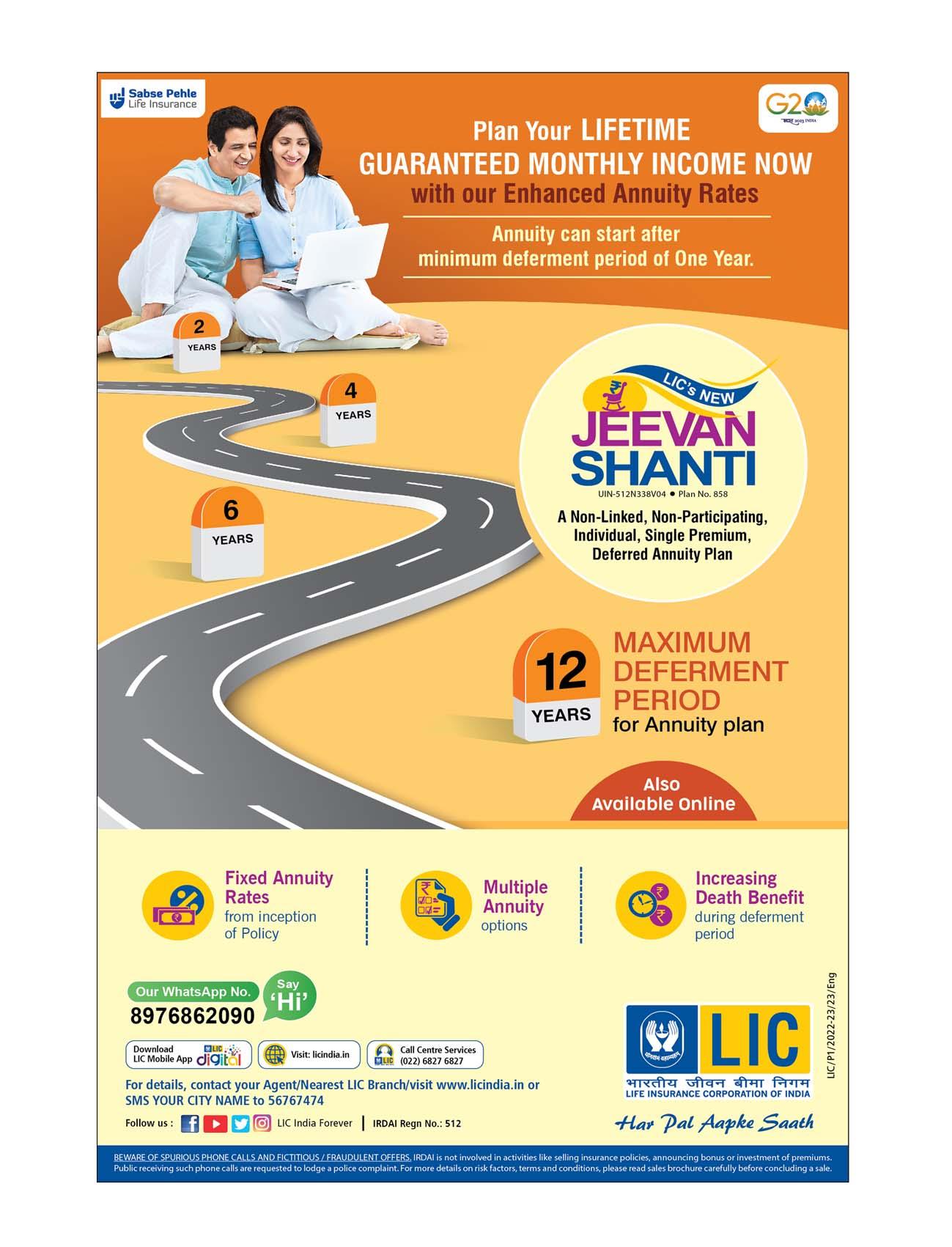
THE OLDEST SURVIVING BUSINESSES IN THE WORLD SHARE THEIR SECRETS
WHAT DOES IT TAKE TO STAY OPEN FOR THE LONG HAUL - AND NOT JUST FOR A FEW GENERATIONS, BUT HUNDREDS IF NOT THOUSANDS OF YEARS?

The average modern business closes shop after about 21 years. Some businesses, though, last longer - a lot longer. Take Kongo Gumi, a Japanese construction company founded in 578 A.D., or Santa Maria Novella, an Italian pharmacy that’s been perfuming the elite since Michelangelo was decorating ceilings. Here are some longevity lessons from businesses with more than ample experience.
1) KONGO GUMI CO., EST. 578
The Lesson: Find a niche and don’t let go
Until it became a subsidiary of Takamatsu Construction Group in 2006, Kongo Gumi was the world’s oldest continuously operating company. Even as a subsidiary, it still does things the really, really old-fashioned way. Its specialty is the restoration of Buddhist temples and other historic buildings. Workers could train for as long as 10 years, during which time they were sometimes set against one another, competing to see which craftsperson demonstrated the most skill working with the timber and clay traditionally used to build temples. “I think that’s where things have slipped through the cracks in a lot of other traditions or professions, because people either weren’t interested or there was actually a devaluing of some of that workmanship,” says Danielle Willkens, an architecture professor at Georgia Institute of Technology. By keeping these techniques alive, Kongo Gumi has made itself indispensable to the preservation of Japanese architecture.
2) ST. PETER STIFTSKULINARIUM, EST. C. 803
The Lesson: Don’t be afraid to mix it up
Noted by a courtier of Charlemagne’s as having one of Europe’s best wine collections, St. Peter Stiftskulinarium has

been delighting diners in Salzburg, Austria, for more than 1,200 years. If it’s not the world’s oldest restaurant, it’s one of them. The wine cellar, built to store the treasures of the monks in the attached monastery, was the genesis of the restaurant, says Nora Wunderwald, a publicity representative for St. Peter. After all, she says, patrons, who over the centuries have included Mozart, Faust and Karl Lagerfeld (who was feted at the restaurant by Chanel), needed some food to pair with their wine. The restaurant’s current operators, Veronika Kirchmair and Claus Haslauer, have made it a point to diversify the menu beyond schnitzel and strudel. This month’s offerings include confit fillet of char, artichoke Wellington and an innovation Charlemagne and his compatriots would surely have marveled at: brunch.
3) THE OLDE BELL, EST. 1135
The Lesson: Furniture can change, but service shouldn’t
Once upon a time, perhaps during the reign of King Stephen (he spent most of his reign warring with his cousin Matilda, the Holy Roman Empress), you might pull into the Olde Bell hotel, about 35 miles outside London, expecting to get a pint of ale and a hunk of bread to dip in your stew before you fell asleep on a mattress stuffed with horsehair and, in the morning,

BUSINESS
SEASONAL MAGAZINE

continued on your way across medieval England. Since then, the Olde Bell has expanded to include more guest quarters and a nuclear fallout shelter-turned-wine cellar, but the idea that every weary and thirsty traveler deserves a place to rest and a pint of ale remains the same, says sales manager Debi Hayes—“except we’ve got comfier mattresses now!” History, of course, begets more history, with Winston Churchill, Boris Karloff, Franklin Delano Roosevelt and Elizabeth Taylor all having spent time in the hotel’s cozy rooms and cozier bar, where sections of the original walls are covered with glass to keep them stable.
4) SANTA MARIA NOVELLA, EST. 1612
(pharmacy from 1542)
The Lesson:
Signature products are signature products for a reason
For Gian Luca Perris, chief executive officer and “nose” of Officina Profumo-Farmaceutica di Santa Maria Novella, the brand’s most enduring fragrance is inextricably linked to its most famous patron, Catherine de’ Medici. Acqua della Regina, with top notes of petitgrain and a base of musk, is still one of Santa Maria Novella’s bestselling products, a chance for today’s shoppers to capture a little bit of long-ago glamor and romance. In Perris’ telling, in 1533 the princess, as part of her wedding entourage, brought a perfume maker who was rumored to have been raised by Santa Maria Novella’s friars. The friars, who called the monastery of the Church of Santa Maria Novella home, had long dabbled in fragrant waters, often thought to keep the plague away. Catherine, possibly the 16th century’s most famous “it” girl, was both a patron and something of a muse to the pharmacy; for her marriage scent, her perfumier was ready to create his greatest perfume yet. “For their upcoming marriage,” Perris says, “he created a bridal gift for Catherine’s future husband: a perfume that enchanted the courts of France by embodying Florence’s elegance and grace.”

5) BROOKS BROTHERS, EST. 1818
The Lesson: Focus on your core customer
Founded as a small clothing manufacturer and shop in Lower Manhattan, Brooks Brothers has been supplying prep school students and Wall Street bankers with starched shirts and blue blazers for 200 years, pioneering the ready-to-wear suit and blanketing downtown office cores with retail locations stocked with in-case-of-emergency ties and pocket squares. When Ken Ohashi took over the company in late 2020, it was a strange moment for a brand that depends on people needing to dress up. For Ohashi, the key to outlasting Covid quarantines was to figure out what his die-hard customers might want more of. The answer, he says, was casual wear. Items such as oversize striped rugby shirts and corduroy pants embroidered with jaunty hunting dogs now account for 40% of the company’s business, up from 20% before the pandemic. Ohasi stresses, however, that Brooks Brothers sportswear is done the Brooks Brothers way. “Our core customer loves our sweatpants,” he says, “because you can get them monogrammed.”
6) CONSOLIDATED EDISON, EST. 1823
(as New York Gas Light Co.)
The Lesson: Location, location, location
ConEd, energy provider to New York City and many of its surrounding counties, is the oldest continuously operating company listed on the New York Stock Exchange. It even predates Thomas Edison himself—when he was born in 1847, the company that would someday bear his name was known as the New York Gas Light Co. Having dominated the market for gas lights across Manhattan (thanks, in part, to a little help from the bosses of Tammany Hall), the company—renamed the New York Steam Co. in the early 1880s—was primed to become a major player in the newly electrified NYC of the late 19th century. But it wasn’t the only business with designs on (literal) power. By the 1890s no fewer than 30 companies sought to provide electricity to the homes and businesses of New York and Westchester County. According to Dan Taft, a chief engineer in central operations at ConEd, “when laying the original electric feeder cables in the streets of Lower Manhattan in 1882, Edison was so impressed with the quality of the pipe-laying work being done simultaneously by the New York Steam Co. that he made arrangements to send surplus steam from his Pearl Street Station into the steam system, thereby becoming the very first co-generator.” By the mid-1920s the competition had been mostly wiped out, leaving ConEd (the name became official in 1936) the sole source of electric light in a city that uses a lot of it.
(Credit: Angela Serratore for Bloomberg Businessweek)

SEASONAL MAGAZINE
12 INDIAN CITIES WITH THE BEST AIR QUALITY
HERE ARE THE 10 INDIAN CITIES WITH LOWEST AIR QUALITY INDEX (AQI) TO GIVE YOUR LUNGS A BREATHING HEAVEN.

Several Indian cities boast commendable air quality that makes us just want to pack our bags and be on our way to these pristine destinations. These cities have successfully implemented robust initiatives aimed at reducing pollution levels and enhancing overall air quality. The conscientious efforts of both local authorities and citizens have played a pivotal role in fostering a cleaner and healthier atmosphere in these places. When major Indian metro cities are choking with dust and smog, these destinations come as great escapes.
1) Kohima, Nagaland
With AQI 19, Kohima, the capital city of Nagaland, is one of the best places in India right now. Surrounded by lush hills and vibrant landscapes, Kohima is known for its rich Naga culture, reflected in the colorful markets, traditional festivals, and indigenous crafts. Kohima offers a unique travel experience, where visitors can explore the indigenous heritage while enjoying the panoramic views of the surrounding hills.
Kulgam, KashmirPhoto courtesy: Canva
2) Kulgam, Kashmir
With the AQI 22, Kulgam in Kashmir valley is an enchanting destination to visit. Kulgam is a picturesque destination which is usually surrounded by snow-capped mountains and lush green meadows, especially in summer months. In winter, there is usually snow. Kulgam offers a tranquil escape from the hustle and bustle of urban life
3) Manali, Himachal Pradesh
Manali, with AQI 27, is a great choice if you don’t mind icy cold weather. This popular hill station is mostly celebrated for its breathtaking landscapes and adventure opportunities, even in the winter season.
4) Imphal, Manipur
Nestled in the northeastern part of India, Imphal enjoys a relatively low level of industrialisation, contributing to the maintenance of its natural air quality. The lush greenery and picturesque landscapes surrounding the city further enhance the air purity.
5) Aizawl, Mizoram
With AQI 39, Aizawl is currently enjoying clean air and cool climate. The city's unique topography, with its steep hills and valleys, offers breathtaking panoramic views. Aizawl is known for its colorful local markets, where traditional handwoven textiles, intricate bamboo crafts, and indigenous spices contribute to the lively atmosphere.
6) Shillong, Meghalaya
Shillong, the capital of Meghalaya, is a charming hill station with current AQI 40. The city is renowned for its mesmerizing landscapes and pleasant climate. Surrounded by rolling hills, cascading waterfalls, and lush pine forests, Shillong exudes a tranquil ambiance.
Maihar, Madhya PradeshPhoto courtesy: Canva

WELLNESS
SEASONAL MAGAZINE


7) Maihar, Madhya Pradesh
Nestled in the heart of Madhya Pradesh, Maihar (AQI 41) is a town known for its religious significance and the iconic Maihar Devi Temple. Perched atop the Trikuta Hills, the temple is dedicated to Goddess Sharda and is a revered pilgrimage site. The town's spiritual aura is complemented by the natural beauty of the surrounding hills and the serene Tamas River.
8) Silchar, Assam
Silchar is a city known for its cultural diversity, tea plantations, and the scenic Barak River. At present, Silchar enjoys AQI 42. Surrounded by green hills and lush landscapes, Silchar offers a peaceful retreat for those seeking a break from the urban hustle. The city is a gateway to the picturesque Cachar Hills.

9) Udupi, Karnataka
Located on the southwest coast of Karnataka, Udupi (AQI 48) is a coastal town known for its religious significance, pristine beaches, and delectable cuisine. Udupi's beautiful beaches, such as Malpe and Kaup, offer a tranquil setting for relaxation and water activities.
10) Coimbatore, Tamil Nadu
Situated in the western part of Tamil Nadu, Coimbatore (AQI 49) is a bustling industrial city surrounded by the scenic Western Ghats. Despite its industrial significance, the city maintains a balance with its lush greenery. Coimbatore’s pleasant weather makes it a dynamic urban center with a touch of natural charm.
11) Kullu, Himachal Pradesh
Kullu (AQI 50) is a majestic Himalayan destination where you can enjoy a snowy winter surrounded by dense deodar forests and the graceful Beas River flowing gracefully through the valley.
12) Madikeri, Karnataka
Madikeri, nestled in the Western Ghats of Karnataka, boasts a pristine environment defined by rolling hills, dense forests, and meandering rivers. The town enjoys AQI 55. Madikeri is surrounded by lush greenery, including vibrant coffee plantations, picturesque waterfalls, such as Abbey Falls and Iruppu Falls.
(Credit:
Precious Rongmei for ToI)


 MAZAGON DOCK SHIPBUILDERS
MAZAGON DOCK SHIPBUILDERS
THE PSU MULTIBAGGER
PSU Multibagger might sound like an oxymoron, as despite their best intentions, many listed PSU companies have traditionally struggled to emerge as multibaggers for their investors, as they try to do the delicate act of balancing their nation building mandate with the kind of returns that markets appreciate. However, in recent years, spurred on by the government’s focus on defence manufacturing, a few state-owned defence stocks have turned multibaggers in the market, and leading this niche pack is India’s largest defence shipbuilder Mazagon Dock Shipbuilders.
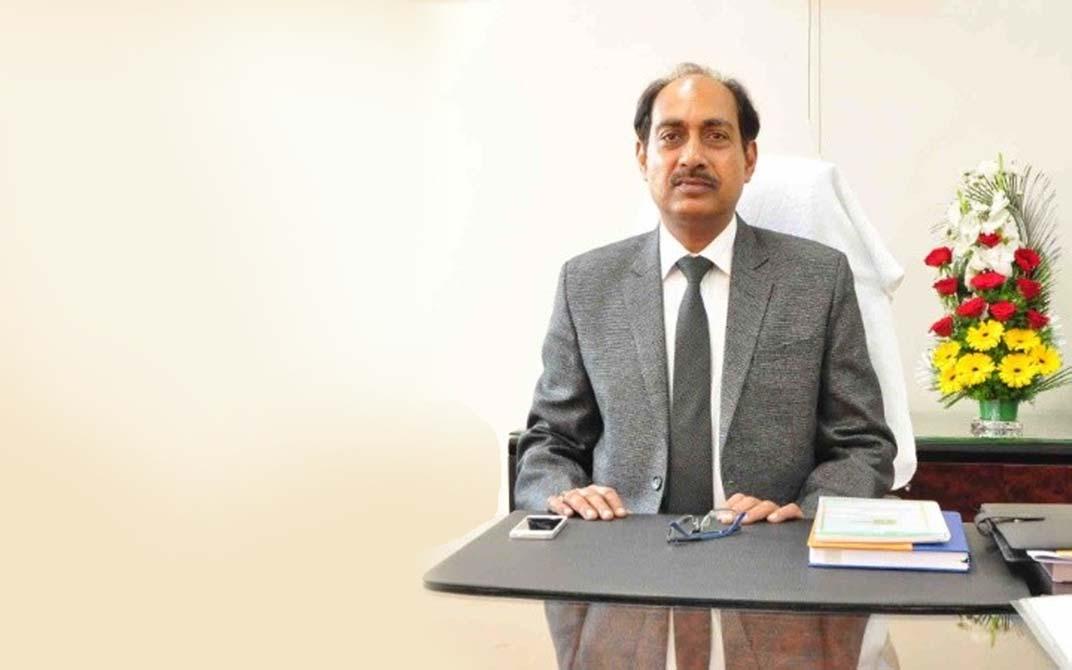
MAGAZINE IN-FOCUS
Sanjeev Singhal SEASONAL

n October 12, 2023, Mazagon Dock Shipbuilders Ltd (MDL), completed three years as a listed entity. After a blockbuster IPO that was oversubscribed by over 157 times, Mazagon Dock Shipbuilders started trading on October 12, 2020, opening at around Rs. 215 in NSE as against its final issue price of Rs. 145, and saw hectic trading before closing at around Rs. 172 levels.
The irony of the stock market is that both the buyer and the seller in any stock at any level are hoping that their decision is the right one. Obviously, only one of them can be right, and the other will be sorely wrong. In the case of October 12, 2020 and MDL, it was a date and counter that the sellers would badly regret for the rest of their lives. Because, MDL stock has appreciated by over 17 times from its IPO price within three short years!
While most brokerages and analysts had advised to subscribe to MDL’s IPO, and the market had heeded that call too, it is clear that almost none of them could have predicted Mazagon’s march from Rs. 145 to as high as Rs. 2484 within less than 36 months. This was especially so, as the MDL public issue happened when the pandemic was raging on, and there were big uncertainties surrounding how this manufacturing business will cope, as shipbuilding can’t be done remotely or on a work-from-home basis!
What is actually driving MDL’s stupendous march on the bourses? It is not an easy answer in any way. Several factors have come together synergistically to catapult the market value of MDL from just Rs. 2693 crores during the IPO time to over Rs. 45,783 crores now. But to cut a long story short, Mazagon’s rise is both a case of incredible revenue and profit growth, as well as an incredible rerating it received due to that growth, like how the best and unbelievable multibaggers are made.
MDL’s annual revenue had soared from Rs. 4047 crores in FY’21 to Rs. 7827 crores by FY’23. And its annual profit had surged even higher, from Rs. 453
crore in fiscal 2021 to Rs. 1046 crore in fiscal 2023. In terms of compounded annual growth rate, this translates to a three-year revenue CAGR of 26.33% and a three-year net profit CAGR of 66.54% And that was not all.
If the quantum of growth was this impressive, its quality was even more astounding to the market. MDL’s return ratios were very good during its IPO time itself, with its FY’20 consolidated Return on Equity (RoE) being 15.00%, its Return on Capital Employed (RoCE) being 23.86% and Return on Assets (RoA) being 2.25%. But during the next three years, all these three core ratios surged further, with FY’23 consolidated RoE being 25.97%, FY’23 RoCE being 32.70% and FY’23 RoA being 3.78%.
This kind of high quality growth from a complex manufacturing industry was rare in the market, and especially so in the public sector. There were other quality factors too that were unique to MDL. For one, it was a zero debt company during the IPO time, and it has remained a zero debt company despite delivering an unbelievable quantum of growth during these three years.
Secondly, Mazagon Dock Shipbuilders has consistently worked on bettering its margins, and has come across as a strong winner in this regard too. While MDL’s Gross Profit Margin (EBIT) has improved from 15.26% in FY’20 to 18.00% in FY’23, its Operating Profit Margin has fared even better, rising from 3.69% in FY’20 to 9.15% in FY’23. But it is in its Net Profit Margin that MDL has really stunned the market, with NPM surging by 49.03%, from 9.59% in FY’20 to 14.30% in FY’23.
This kind of blistering performance is something the whole MDL team and especially its top management can be proud of. MDL has almost always enjoyed a high quality of leadership, and this has turned even better in recent quarters. From February 1 2023, its Director (Finance) and Chief Financial Officer (CFO), Sanjeev Singhal was given the Additional Charge of being
Chairman & Managing Director of MDL.
Sanjeev Singhal is a veteran finance professional with over 35 years of experience in PSUs including as Director Finance at Mishra Dhatu Nigam Limited and prior to that at Steel Authority of India Limited. A Cost Accountant by profession from the Institute of Cost Accountants of India, Sanjeev Singhal has been associated with MDL since its IPO days as he was chosen by the firm in January 2020 to helm the IPO among other responsibilities.
This CMD & CFO is ably assisted by a core team of full-time Directors who are all thoroughbred defence & engineering professionals in their respective fields. They include Cdr. Jasbir Singh, IN (Retd.), an alumnus of NDA / JNU, who is the Director in charge of MDL’s Submarine & Heavy Engineering Division; Mr. Biju George, an alumnus of IIT Kharagpur, who is the Director in charge of the company’s Shipbuilding Division; and Cdr. Vasudev Puranik, Indian Navy (Retd.), an alumnus of INS Shivaji / JNU / Pune University, who heads MDL’s Corporate Planning & Personnel Departments.
The beauty of the stock market is that when a company outperforms itself under the leadership of such veteran professionals, the market doesn’t stand still, waiting for the earnings to grow, but rewards it by re-rating it to a higher valuation. As mentioned earlier, that is how unbelievable multibaggers are made within the shortest possible time, and the case of MDL too was not different.
Still, in the case of MDL it was a bit surprising, as such rapid re-rating is usually seen in the case of bluechip private sector companies. But then, MDL’s performance on most metrics were even better than the best of the private sector manufacturing leaders. When MDL went in for its IPO, its promoter the Government of India, acting through its Ministry of Defence, had asked for only modest valuations. The MDL IPO was offered at a price-toearnings (P/E) multiple of just 6.39 times on a fully diluted post issue basis on its FY’20 earnings.
SEASONAL MAGAZINE
While this may sound grossly underpriced by today’s standards, this was not so, considering the fact that the market was reeling from the pandemic onslaught back then, and MDL’s comparable peer group consisting of Cochin Shipyard, GRSE & Reliance Naval were trading only at an average P/E of 7.5 times.
The issue was also reasonably priced at a price-to-book-value (P/BV) of 0.95 times based on its Net Asset Value (NAV) or Book Value Per Share (BVPS) of Rs. 152.17 per share as on June 30, 2020, and as calculated based on the upper limit of the price band. But as of FY’23, Mazagon Dock Shipbuilders’ BVPS stands at Rs. 207.13.
While this is a healthy appreciation within 3 years, it is obvious that it alone was not enough to propel the stock’s exponential growth during the last three years. And this is precisely where the magic of rerating kicked in. From an IPO time P/E of 6.39 times, MDL
now trades at 40 P/E and from a P/BV of 0.95 times during its public issue, MDL now commands a P/BV multiple of nearly 11 times.
Most investors, especially retail investors, fail to understand the power of this kind of rerating when it is coupled with earnings expansion too. As an old tongue-in-cheek remark in the stock market goes, price is nothing but the result of earnings multiplied by price-to-earnings. But there is hidden wisdom in that joke, as price skyrockets only when both these multiplicative factors soar.
Mazagon Dock Shipbuilders’ stock is now taking a breather after its blistering rise, especially during the past 12 months when it soared over 6 times from a 52-Week Low of Rs. 411 to a recent 52-Week High of Rs. 2484. This breather is much in line with almost all other defence stocks, both in the private and public sectors, that have run up. But most analysts don’t expect MDL to lose its momentum as
the fundamental business remains as strong as ever, and with new opportunities emerging too for it.
MDL has recently signed a master ship repair agreement (MSRA) with the US Government, represented by US Navy’s NAVSUP Fleet Logistics Center (FLC) Yokosuka. While this is a nonfinancial agreement, the agreement is expected to open-up voyage repairs of US Navy Ships at MDL. Currently apart from MDL, only one private sector shipyard in the country has signed an MSRA with the US Government.
Mazagon Dock Shipbuilders continue to perform well on a quarterly basis. For the most recent published quarter ended June 2023, MDL reported a 39.84% YoY jump in consolidated net profit at Rs 314.34 crore, and 30.51% YoY jump in EBITDA at 404.35 crore, while revenue was flat, falling 2.58% percent to Rs 2,172.76 crore. The sluggishness in revenue and EBITDA signals execution challenges
 SEASONAL MAGAZINE
SEASONAL MAGAZINE


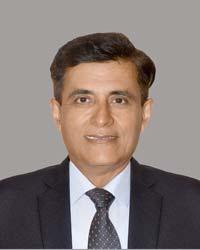
before the company, as shipbuilding is a complex and time consuming affair. Some of Mazagon Dock’s core products like the highly specialised ships and submarines with large project size, take years to execute.
But MDL is gearing up for faster execution by planning a capex of Rs. 500 crore for a new floating dock, among other such infrastructural expansion. This would help the company to construct eight nextgeneration destroyers for the Indian Navy.
MDL has acquired a strong order book, which provides robust revenue visibility till fiscal 2025. The current order book size stands at Rs 39,117 crore, which is almost 5 times its annual revenue. The order pipeline too has been good. MDL has submitted bids for six submarines, tying up with the Germany-based TKMS. It is also expecting three addon submarines that are part of the Scorpene platforms.
MDL’s trackrecord in delivering complex ships and submarines over the past few decades will keep it in good stead. Its current product portfolio encompasses a diverse range of products for both domestic and International clientele. During its chequered existence since 1960 when it was nationalised, MDL has built a total of 801 vessels, including 27 warships, ranging from advanced
destroyers to missile boats as well as 7 submarines.
For both national and global clientele, MDL has also provided cargo ships, passenger ships, supply vessels, multipurpose support vessels, water
tankers, tugs, dredgers, fishing trawlers, barges, and border outposts. Jackets, wellhead platform main decks, process platforms, jack up rigs, and other products have also been manufactured and delivered by MDL.

 Cdr. Jasbir Singh, Director (Submarine & Heavy Engineering)
Shri Biju George Director (Shipbuilding)
Cdr. Jasbir Singh, Director (Submarine & Heavy Engineering)
Shri Biju George Director (Shipbuilding)
MAGAZINE
Cdr Vasudev Puranik IN(Retd) Director(Corporate Planning & Personnel) SEASONAL
When Will Markets Realise LIC of India’s True Potential?
LIFE INSURANCE CORPORATION OF INDIA’S STOCK MIGHT NOT HAVE PERFORMED AS PER INVESTORS’ EXPECTATIONS AFTER ITS IPO. BUT THE UNDERLYING ORGANISATION IS FIGHTING FIT AS IT HAS NEVER BEEN, WITH ITS RENEWED FOCUS ON GROWING ITS NON-PARTICIPATING PRODUCTS, TECH-LED CUSTOMER ACQUISITION AND PREMIUM COLLECTION, GROWTH IN ITS BANCASSURANCE CHANNELS, AND BETTER RETURNS FROM ITS HUGE INVESTMENT PORTFOLIO. LEADING THIS CHANGE AT THE LIFE INSURANCE GIANT IS CHAIRMAN SIDDHARTHA MOHANTY, GOVERNMENT NOMINEE DIRECTOR SUCHINDRA MISHRA,AND MANAGING DIRECTORS M JAGANNATH, TABLESH PANDEY AND R DORAISWAMY. LIC REMAINS THE MASTER OF INNOVATIVE PRODUCT DESIGN AS IS EVIDENT FROM ITS NEW JEEVAN KIRAN PRODUCT THAT NOT ONLY COVERS YOUR LIFE, BUT REIMBURSES THE FULL PREMIUM ON MATURITY. WITH INDUSTRY LEADING PERFORMANCE ACROSS ALL METRICS THAT MATTER - REVENUE GROWTH, PROFIT GROWTH, PROFIT MARGINS AND RETURN ON EQUITY - AND AT THE SAME TIME WITH THE LOWEST PRICE-TO-EARNINGS BASED VALUATION, IT IS ONLY A MATTER OF TIME BEFORE LIC OF INDIA GETS POSITIVELY RE-RATED BY THE MARKET. arkets can remain irrational longer than you can remain solvent,” remarked John Maynard Keynes, the Father of Macroeconomics, during the Great Depression of the 1930s. Due to the wry humour and the great experiential truth embedded in this quote, this has been requoted often by numerous luminaries including Warren Buffett in the modern age. Keynesian economics is credited with pulling the Western nations from the Great Depression, and though its popularity waned by the 1970s, the world revisited and relied on it again in

the aftermath of the Global Economic crisis of 2009, with leaders including Dr. Manmohan Singh and Barack Obama calling for a return of the policies of John Maynard Keynes.
While the specific quote mentioned above is most often used by Buffett and other celebrity investors to discourage retail investors from taking on excessive leverage, expecting the market to start behaving rationally regarding a stock, there is also a reverse wisdom hidden in it. This wisdom is nothing but the long-term observational insight that one day markets are going to behave rationally, that is, value
“M
IN-FOCUS
SEASONAL
MAGAZINE

something as per its real value.
Look no further than the stock of Life Insurance Corporation of India to see a modern day example. LIC is the sector leader, being the largest life insurance company in the country, by a good measure. Usually, sector leaders command the most premium valuation when compared with peers. But when it comes to LIC of India, it trades at an unbelievably low price-to-earnings multiple of just 9 times.
While 9 is an attractively low P/E by any measure, wait till you hear how LIC’s
peers are valued. India’s second largest life insurance company by revenue and profits, SBI Life Insurance, trades at a P/E of 70 times. The country’s third largest, HDFC Life Insurance, trades even higher at a P/E of 96 times, making it the second most valuable life insurer by market cap, above SBI Life. And the fourth largest life insurer, ICICI Prudential Life Insurance, trades at a P/E of over 95 times.
The knee jerk reaction of almost anyone reading this would be to put the blame on either LIC’s profit growth or its return ratios. Let us first see how India’s largest
life insurer and its peers fare in growth. The second largest player SBI Life Insurance has a 3 year profit growth rate (CAGR) of 9.99%. For HDFC Life, the profit CAGR for the same period is 2.69%, and for ICICI Prudential Life the 3-year profit growth rate is -12.68% (profit degrowth).
Now, coming to LIC, you will have to hold your breath before hearing the 3year profit CAGR. It is over 266%. Coming to return ratios too, LIC is way ahead of all its peers by a good margin. Against SBI Life’s Return on Equity of 13.21%, HDFC Life’s RoE of 10.53% and ICICI Prudential’s RoE of 8.09%, LIC’s Return on Equity is simply breathtaking - 79.69%.
While critics may cite that it is a one-off performance in FY’23 due to LIC’s exceptional profit in the last fiscal, the correct way to look at this is whether peer insurance companies’ RoE in the fiscal year before this, is any match to LIC’s RoE. Here too, there is no comparison in performance, as the best performer, SBI Life’s FY’22 RoE was only
SEASONAL MAGAZINE
12.95% as against LIC’s 38.84% recorded in that fiscal.
What is even more interesting is that this FY’22 RoE of LIC was its lowest in the last 5 years, but which was over 70% higher than the best RoE performance recorded by any of its peers during these last 5 years, which was the 22.64% RoE achieved by HDFC Life in 2019! When it comes to revenue growth too, LIC exhibits a predictable and steady growth, whereas most of its peers are struggling to register a meaningful topline growth, whereas some like ICICI Prudential is witnessing steady degrowth.
Profit margins are another area where LIC outshines and outperforms all its peers by an unbelievable margin. LIC’s Gross Profit Margin, Operating Profit Margin and Net Profit Margin are 5.57%, 5.51% & 4.05% respectively. For SBI
LIfe, these figures are 2.54%, 2.54% & 2.13%, whereas for HDFC Life it is even poorer at 2.12%, 2.01% & 1.94% during the last fiscal. ICICI Prudential fares better than SBI Life & HDFC Life in Gross & Operating Profit Margins with 3.17% & 3% respectively, but in Net Profit Margin fares worse at 1.64%.
From the above apple-to-apple comparison, it should be clear that LIC stock’s underperformance in the market since its IPO days is a case of the market not awarding it its due valuation. And the even stranger fact is that it is not an apple-to-apple comparison really, but an apples-to-golden-apple comparison. LIC is not just India’s largest life insurer, but its largest institutional investor in equities and debt.
This makes LIC a double-engined locomotive, an advantage which the company is yet to fully demonstrate to the market, and hence something the market is not accounting for now. Market returns from its massive equity investments are never going to be a linear source of growth, but when it starts coming in, expect LIC to deliver outsized returns to investors. The market got a whiff of it in Q1 when its equity portfolio yielded substantial profits.
LIC is continuing its investment strategy of making incremental investments in
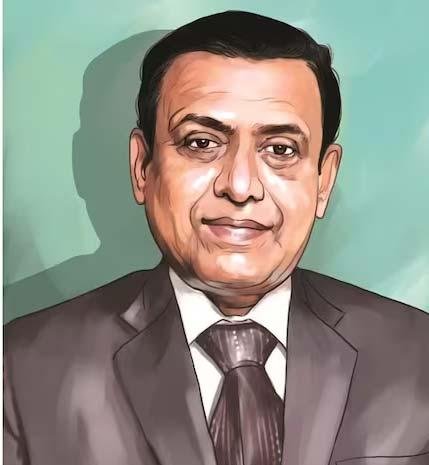
both equity and debt, with the stated objective of creating enhanced value for all its stakeholders. While its total equity portfolio is Rs 10 trillion, its total investment portfolio is Rs 46 trillion, with the majority being in debt, including central and state government securities. This structure gives LIC’s portfolio great stability as well as deep pockets to draw from during any emerging market opportunities.
When it comes to its core business of Life Insurance, LIC’s stature is not just national but global. It is the fifth-largest life insurer in the world in terms of life insurance gross written premiums (GWP). LIC is also the tenth-largest insurance company in the world by total assets.
When compared to the second-largest life insurer in the Indian market, SBI Life, LIC has the largest market share margin among all market leaders in the top 7 markets worldwide. The company has 13.35 lakh agents and services policies worth Rs 27.80 lakh crore, making it the third strongest insurance brand globally. With LIC’s core performance and relative valuations with peers being such, what exactly is preventing LIC from attaining its rightful position in the Indian equity markets? Some market analysts attribute it to LIC’s product mix, and this may be partly true.
Conventionally, LIC's product portfolio has been largely dominated by the socalled participating products, where
SEASONAL MAGAZINE
WITH LIC’S CORE PERFORMANCE AND RELATIVE VALUATIONS WITH PEERS BEING SUCH, WHAT EXACTLY IS PREVENTING LIC FROM ATTAINING ITS RIGHTFUL POSITION IN THE INDIAN EQUITY MARKETS? SOME MARKET ANALYSTS ATTRIBUTE IT TO LIC’S PRODUCT MIX, AND SOME OTHERS TO THE HIGH PROMOTER HOLDING THAT MAY NEED PARING.
rules, the promoter holding needs to be brought down to 75% eventually, which means the supply of LIC shares to the market may surge in the future via an OFS or FPO.
But the Government is highly unlikely to offload such a huge stake in one go due to the insurmountable practical difficulties involved in such a huge share sale, and will approach it in a phased and highly calibrated manner. Meanwhile, LIC continues to be a high return investment for the Government. Recently, LIC Chairman Siddhartha Mohanty and a core team had visited Finance Minister Nirmala Sitharaman to hand over a dividend cheque of Rs. 1831 crore.
LIC’s dividend yield is now only 0.46%, and if LIC improves its dividend payout policy much like some of its peer PSUs, the dividend income itself will be a major source of return for its shareholders including the Government of India. Several PSUs, ranging from Coal India to Oil India to ONGC are known to pay hefty dividends with yields going above 8-6%.
mix and distribution are also eyed.
A comprehensive digital transformation project is underway at LIC, which is aimed at transitioning all processes to a digital mode. A digital customer onboarding project is scheduled to take effect from December this year. Even now, LIC collects 52% of its premiums digitally, but with such a tech overhaul in place, this percentage will move even higher up, resulting in faster growth and better profitability.
LIC will also continue with its often stated objective of matching or even slightly exceeding the overall life insurance industry’s growth rate. In FY'23, it had achieved a growth of 16.47% in New Business Premiums (NBPs), which is one of the overall industry’s best ever performances.
The fact that all of its three major competitors - SBI Life, HDFC Life & ICICI Prudential - are banking majors is not lost on LIC. It has rightly understood the importance of the bancassurance channel, and is now emphasising the promotion of premiums through such tie-ups.
profits are shared as dividends and bonuses with policy holders. But since its public listing, and its newly assumed responsibilities to its public shareholders, LIC is now concentrating more on increasing premium contributions from its non-participating products.
In the first quarter of FY'24, the proportion of non-participating premiums in LIC's total annualised premium equivalent (APE) was 10.22%, as compared to 7.75% for the same period in the previous financial year, and it also marked the first time LIC has gone above a double-digit non-participating APE. This will definitely benefit its margins, which is already at double of its peers.
Another overhang on the stock might be the exceptionally high promoter holding of 96.5% by the Government of India. This must be troubling to the market, as according to market regulator SEBI’s
The Government on its part has been supporting LIC and its commendable work force consisting of employees and its unique agent army. Recently, the Finance Ministry had unveiled a series of welfare measures for the benefit of agents and employees of LIC of India.
The measures are related to the amendments to LIC (Agents) Regulations, 2017, enhancement of the gratuity limit, and uniform rate of family pension among others. More than 13 lakh agents and more than 1 lakh regular employees, who play a pivotal role in the growth of LIC are expected to benefit from these welfare measures.
Under the visionary leadership of Chairman Siddhartha Mohanty, LIC is pursuing a three pronged strategy of fortifying its agents, bancassurance and digital channels, to boost its growth and margins. Towards this, it has already initiated an ambitious project for a technology overhaul, which should boost product sales and enhance the customer experience. Strategic changes in terms of product
Innovative product design is another area where the insurance giant is focusing on.
LIC had recently launched a new product, Jeevan Kiran, the design of which sent competitors scrambling for cover. It has been well received by consumers and not without reason. Jeevan Kiran is an innovative product that provides not only coverage for life risk, but at the policy’s maturity, the total premium is refunded. Thus it offers a risk cover at no cost, as the total amount paid is reimbursed.With such innovations and growth strategies in place, LIC of India’s stock is likely to get re-rated eventually by the market. John Maynard Keynes who wryly commented on the time it may take for markets to do such things, was not just an economist, but an astute investor himself who kept on outperforming the overall market by 8%, for several years. His strategy was simple - picking undervalued stocks like LIC. Decades later, Buffett and several other celebrity investors continue to follow this timeless principle.
SEASONAL MAGAZINE
EVOKING AWE IN EVERYTHING IT DOES
EVOKING AWE IN EVERYTHING IT DOES
Different leaders evoke different emotions in their followers as well as competitors. Some evoke respect, some evoke fear, yet others envy, and so on. But there are a very select group of leaders who evoke awe in everyone else, in everything they do. Jitu Virwani belongs to this select club of leaders. Embassy Group which he founded in 1993 is today one of India’s largest real estate conglomerates with a broad portfolio of over 1700 acres land bank, over 70 million sq. ft. of prime commercial, residential, retail, hospitality, services, and educational spaces across NCRDelhi, Bengaluru, Chennai, Pune, Mumbai, Noida and Trivandrum, as well as Serbia in the international market. Embassy is also the sponsor of India’s first publicly traded REIT and Asia’s largest REIT by area, the Embassy Office Parks REIT with a market capitalization of over Rs. 29,000 crores now.

GROUP
EMBASSY
REALTY
SEASONAL MAGAZINE
Embassy Group is by no means India’s largest real estate developer yet. But those who have observed Jitu Virwani’s moves so far know very well that he will take a shot at it eventually. He may or may not win in that, but the industry knows that either way Embassy Group will evoke further awe, even in a partially successful move.
This kind of strategy dates to Embassy’s very first deal under Jitu Virwani in the office space segment, decades back, in 1993 to be precise.
For this first project in Bengaluru’s Infantry Road, that was mostly taken up by Kirloskar Group companies, instead of paying out and eliminating the landowner from the project as most developers would have done, Virwani made him a partner in the project by giving him 50% of the developed square feet in lieu of getting to keep half of the land cost for completing the project!
And this same win-win model Virwani would follow in many of his later projects, giving him an

JITU VIRWANI, CMD
SEASONAL MAGAZINE
unmistakable edge in the market in both conceiving and executing even large-scale projects faster than most of his peer developers could dream of. Even in some of his larger projects like Embassy GolfLinks Business Park, this same model was followed initially, together with Virwani’s another unique skill in stitching up huge land parcels patiently.
This is one developer who loves land so much that he says the lands that he previews almost talk back to him. Virwani says he instantly imagines what is possible with that land at first sight, and that the land concurs! That is how Embassy GolfLinks grew from an initial plan of 5 acres to over 70 acres when completed.
His passion for land made him one of the earliest and largest landowners in the North Bengaluru region, long before all the developers made a beeline for it. For more than a decade, Jitu Virwani would stitch up and amass a formidable land bank for Embassy in North Bengaluru, and while doing it he almost went down in debt owing to such purchases. But fortunately for him, his bets played out just in time, when North Bengaluru eventually emerged as the most buzzing hotspot in India’s Silicon Valley.
One of the mega projects of Embassy Group that has benefited directly from this farsighted vision of Jitu Virwani is Embassy Springs. Being designed and constructed as Bengaluru’s biggest and best-planned city, Embassy Springs, is the epitome of urban planning, spread across 288 acres.
This self-sustainable township offers residents an exquisite living experience amidst nature, even when situated in the hotbed of North Bengaluru, complete with a worldclass school, retail and commercial spaces, and more. Embassy Springs features 32 community parks and link
SEASONAL MAGAZINE


SEASONAL MAGAZINE
parks, a 55-acre man-made lake, 3.5 lakhs sq. ft. private club house, 22 bus bays, an 18 km internal road network, an 8 km cycling track and 45+ acres of green spaces.
This is, in fact, something that differentiates Jitu Virwani from most other real estate developers operating at this scale. The Embassy Group founder has never been averse to taking on debt but makes sure that he takes it on only if the cash flow can service it. In fact, for the last few years now, Embassy has been on a significant drive to pare its debts, with much of it already neutralized.
Yet another factor that keeps Jitu Virwani and his life’s work, Embassy, in industry’s awe, is his people skills. From his very first customer for office space, Vikram Kirloskar in 1993, Virwani has exhibited a passion for never letting go of a friendship. This has resulted in almost all of Embassy’s Fortune 500 clients to end up as repeat customers, while with some like the Kirloskar family, things have progressed to co-developed projects.
His people skills are so strong even inside the Embassy Group that the loyalty he evokes is legendary. Even amid a corporate culture where spending more than a couple of years in a company is looked down upon as stagnation, many in Virwani’s core team have been with him for more than a decade, some even two.
This includes Narpat Singh Choraria, Director (from inception of Embassy in 1993); S Chandra Das, Independent Director (since 2010); Reeza Sebastian Karimpanal, Executive President - Residential Business (for more than 15 years); Rajesh Bajaj, Executive Director, Corporate Affairs (for last 25 years); Maria Rajesh, Chief Human Resources Officer (since 2006); and Rajesh Kaimal, CFO (for last 6 years).
It also includes Embassy’s heads of subsidiaries or divisions like Pradeep
Lala, MD & CEO, Embassy Services (since 2013); Giulia Baima Bollone, Director, Embassy Interiors (since 2017); and Kahraman Yigit, CoFounder & CEO, Olive by Embassy (since its inception). The mutual loyalty of this team is unique that Jitu Virwani has remarked that in case he is starting anything new, outside of Embassy Group, he would be taking this core team along!
At its heart, Embassy Group is a family business. Also, Jitu Virwani’s elder son, Karan Virwani, who had long shadowed his father as his Executive Assistant at Embassy, has since then been heading the joint venture WeWork India as its CEO. Unlike in the US, the home of the collaborative working space giant WeWork, its Indian JV with Embassy has continued to gain good traction under Karan’s strategic leadership, which has positioned it as a dynamic and fast-growing startup in India. With its leading space-as-a-service platforms and 7 million+ sq. ft. of assets and 84,000+ desks across 50 locations pan-India, WeWork India cultivates creativity, boosts productivity, and reimagines the workplace for everyone, from freelancers to Fortune 500 companies.
Younger son Aditya Virwani has been working as the Chief Operating Officer (COO) of the Embassy Group and is a board member of Embassy Office Parks REIT. Aditya was mentored for this role by Jitu Virwani for 2 years before he took up the role as Group COO. He was also a member of the team that successfully filed India’s first REIT. Aditya holds a bachelor’s degree from the University of San Francisco and is the winner of a bronze Duke of Edinburgh Award.
Embassy Group’s greatest strength remains Founder & Group Chairman Jitu Virwani’s flair for staying ahead of the curve. He has repeatedly demonstrated this, right from his start
KARAN VIRWANI, CEO, weWork India
 SEASONAL MAGAZINE
SEASONAL MAGAZINE

in 1993, by expanding from residential real estate to office spaces, just when the outsourcing wave was gathering momentum in Bengaluru, buoyed by the country’s economic liberalization of the 1990s.
Years later, Jitu Virwani would rightly predict the industry’s major shift to leased office spaces, instead of outright selling, as many US based companies had internal policies that prevented office space purchases in other countries. This switch proved to be the gamechanger for Virwani as suddenly Embassy Group started to have a healthy cash flow unlike most of its peers.
Jitu Virwani’s magnum opus so far is of course how he de-leveraged the Group significantly by tying up with Blackstone for office spaces and taking this company public as India’s first listed Real Estate Investment Trust (REIT). Today, Embassy Office Parks REIT owns and operates a 45 million square feet portfolio of eight large scale office parks and four city centre office buildings in India’s best-performing office markets of Bengaluru, Mumbai, Pune, and NCRDelhi.
Home to 234 of the world’s leading companies, its portfolio also comprises strategic amenities, including four operational business hotels, two under construction hotels, and a 100 MW solar park supplying renewable energy to tenants. Embassy Office Parks REIT is headed by Aravind Maiya as CEO. A Chartered Accountant by training, Aravind has 22 years of experience in real estate, capital markets, audit and consulting, of which 3 years were with Embassy REIT itself earlier as its CFO.
In recent years, Jitu Virwani has again proved his flair for staying ahead of the curve, by expanding its residential offerings, correctly sensing the resurgence in this segment. Embassy’s residential projects are breathtaking in scale and opulence and have taken the market by storm under the towering vision of Jitu Virwani and the execution capabilities of a high achiever like Reeza Sebastian Karimpanal, its Executive President for Residential Business.
Embassy Lake Terraces at Bengaluru exemplifies this momentum in design, execution and sales. Redefining luxury standards in not only Bengaluru, is the Infinite Series at Embassy Lake Terraces. Delivering breathtaking views of Hebbal and Nagavara lakes, these ultra-luxury
MAGAZINE
SEASONAL

condominiums are really mansions once you get inside. Starting from Rs. 5.40 crore, the Infinite Series is ready to move in, with the OC received. As the cherry on the cream, there is a GST benefit too if you decide fast enough.
Located at the epicentre of growth in Hebbal, North Bengaluru, these limited-edition collection of 3bedroom condominiums offer not only expansive indoor spaces but equally impressive balconies, across its 3,913 sq ft and 4,189 sq ft options. Embassy Lake Terraces also offers Sky Blocks that offer a brilliant perspective, Garden Blocks that deliver nature inspired luxury and Signature Residences of bespoke luxury. These options range from 4BHKs of 4440 sq ft to single-orduplex mansions of 9156 sq ft.
In residential real estate, Embassy is active in four segments - Luxe Collection, Premium Residences, Integrated Townships and Senior Living. Some of the Group’s major projects include Embassy Springs,
Four Seasons Private Residences at Embassy One, Embassy Grove, Embassy Edge @ Embassy Springs and Serene Amara by Seattle based Columbia Pacific at Embassy Springs.
With an anticipated continued upcycle in the residential market and to meet the current demand for homeownership, Embassy Group is reinventing its residential portfolio by migrating towards the premium segment. They have a 5 million sq. ft. pipeline and Rs. 3,000 crores of inventory ready to be launched in the current and upcoming financial year. With over Rs. 2,000 crores of OCcompliant projects ready for possession this year, it is targeting unlocking its existing inventories as well as launching new projects and activating their land bank. The Group is also actively looking for jointventure partnerships in other cities and micro markets.
A pioneer in co-working spaces through WeWork India, Embassy has also pioneered the hybrid hospitality segment in India by starting Olive by
Embassy in 2019 itself, targeted at young working professionals and students. Now spanning 1,764 keys, Olive combines short and long stays with vibrant communities and the best of experiences, events, and culture,
 ADITYA VIRWANI, COO, Embassy Group
SEASONAL MAGAZINE
ADITYA VIRWANI, COO, Embassy Group
SEASONAL MAGAZINE


located in India’s top destinations.
Embassy’s hospitality division is a full-fledged operation running hotels, clubs, restaurants, and event management. Embassy’s hotel properties are managed by world leaders in hospitality including Hilton and Four Seasons.
Embassy also runs a renowned Interiors division, as well as Embassy Services Pvt. Ltd., an integrated facility management services company that has outgrown its mandate of serving Embassy’s facilities, by attracting several clients from outside the Group too, thanks to its superior and consistent services. Embassy Services now manages 130+ million square feet of real estate assets across the commercial,
residential, co-working, airport, retail, hospitality, energy, education, industrial, and warehousing segments. In addition to ISO, CII, BSI, and other certifications for globally acceptable standards and benchmarks, they are recipients of the prestigious ‘Sword of Honour’ from the British Safety Council and manage some of the largest business parks carrying LEED, WELL, GRESB, and IGBC Platinum certifications, among others.
Apart from real estate development, Jitu Virwani is also passionate about education and sports, especially equestrian.
Embassy Group’s flagship project in education is the Stonehill International School of North Bengaluru. Italian-born Stefano De
SEASONAL MAGAZINE

Napoli, postgraduate electronics engineer and former corporate sector leader, is presently the Chairperson of the Stonehill International School Governing Council.
Founded in 2008, Stonehill International School is the only school in South India offering all three International Baccalaureate programs - the Primary Years Programme, the Middle Years Programme, and the IB Diploma Programme. With a highly trained international faculty from across 35 nationalities and world-class infrastructure spread across a 34-acre campus, Stonehill is one of the most preferred international institutions in Bangalore.
Embassy Group is also working on establishing the Embassy Academy,
SEASONAL MAGAZINE
a new progressive K-12 co-education day-school offering the CBSE Curriculum to students of the age group 3-18 years, at Embassy Springs, one of the best-planned townships in the North of Bengaluru. Coming up on its own 5.3-acre campus, the school will feature extensive facilities hitherto unseen in city based CBSE schools and will be home to 1350 students in its first phase, with the first batch intake planned for the academic year 2024-25.
The Group also runs the Embassy International Riding School, which is headed by Italian-born Silva Storai, India’s only professional woman jockey and the only woman jockey in the world to have won two Derbies. Under Virwani’s vision, Silva runs Embassy International Riding School with unsurpassed
dedication and attention to detail and has already produced national and international level champions for India.
A firm believer in giving back to the society around its properties, Jitu Virwani has a deep held conviction that education can change the lives of communities and generations to follow, and that giving back to the community is the way forward for this. Sharing this vision with his father, COO Aditya Virwani today directs Embassy’s support for 73 government schools and rural schools, offering holistic education to over 42,000 children. Additionally, Embassy Group also drives positive change by providing several infrastructure-based solutions to uplift basic amenities around Embassy communities.

SEASONAL MAGAZINE
INDIA’S WEALTHIEST JEWELLER JOY ALUKKAS HAS SET UP HIS EMPIRE FOR EXPONENTIAL GROWTH


Over the three decades since branching out on his own from the family business, Joy Alukkas has emerged as India’s wealthiest jeweller as per Forbes’ calculations. Two reasons stand out for this outperformance. One, of course, is the meticulous way in which he has grown the Joyalukkas network of jewellery showrooms geographically as well as financially. Over 160 Joyalukkas showrooms are spread across the world in 11 countries, with over 100 in India alone. The second reason, however, is also equally impressive. Despite numerous offers to dilute his stake in this sprawling empire, Joy Alukkas has so far stood his ground, and continues to own 100% of his companies’ equity. Mind you, these offers have not been easy to refuse as it has been from celebrity investors like India’s Big Bull Rakesh Jhunjhunwala as well as noted international funds like Arcapita. These intriguing episodes have been detailed in Joy Alukkas’ recent autobiography, ‘Spreading Joy’, which is published by HarperCollins and has gone on to become the bestseller in its category on Amazon. Joy Alukkas had also recently presented a copy of his autobiography to India’s Prime Minister Narendra Modi.

According to this legendary entrepreneur, the group has always placed a strong emphasis on building a solid foundation for the Joyalukkas brand. The brand was set apart from competitors by way of its highest quality products, superior service levels, innovative promotions, celebrity endorsements, loyalty programs and many more. Joyalukkas is also credited with introducing many of these strategies for the first time in the industry. As its hands-on leader from day one until now, Joy Alukkas also implemented professional operating procedures including world-class retailoriented ERP systems. He proactively engaged his evergrowing team in all aspects of this challenging jewellery retailing business by offering competitive salaries, implementing staff welfare measures, professional training, and even in often overlooked aspects like perfect grooming and impeccable staff uniforms. Joy Alukkas is also credited in the industry with professionalising back office operations, and
highly qualified and experienced professionals were also brought on board. Such strategies steadily translated into growth on both the revenue and profit fronts, with the brand having an impressive track record in financial performance. Its Indian operations alone clocked Rs. 14,513 crore in revenue in FY’23 and is expecting to grow over 20% this fiscal to reach Rs. 17,500 crore by FY’24 end. Joyalukkas Group usually achieves 70% of its business from its Indian showrooms and the rest 30% from its overseas

MAGAZINE
SEASONAL

showrooms. For FY’23, the group’s overseas turnover was Rs. 7000 crore. A profitable player for all its existence, its Indian operations had clocked a net profit of nearly Rs. 900 crore in FY’23 and is now gunning for a 22% rise this year to achieve Rs. 1100 crore by FY’24 end. While same store growth will drive much of this revenue and profit rise, the group under Joy Alukkas’ watchful eyes is also in the process of opening 40 new showrooms, 30 of them in India, mainly in North India, and the rest 10 across the world in countries with surging Indian populations like Australia and Canada. His visionary leadership had earlier succeeded in creating the world’s largest retail jewellery showroom in Chennai. Taking its financial transparency to the next level, Joyalukkas recently published its Q2 numbers, much like a listed entity. During the Q2 of this fiscal, the Indian operations achieved a net profit of almost Rs 300 crore on a revenue of over Rs 3,775 crore. The ambitious plan to add 40 showrooms - 30 of
them in India - during this fiscal and the next is a formidable one, as the group has so far shunned the franchising route followed by some of its peers, and owns all its showrooms. With an average investment of Rs. 60 crore for a new showroom, this means the Group will invest around Rs. 2400 crore across these two fiscals, to keep its high growth with high profitability, intact. Led by a phenomenal entrepreneur, who is not just a top ranking billionaire, but a philanthropist who operates at an impactful scale, the Group is gaining mindshare among the masses too. Joy Alukkas who is already noted for constructing several homes for the flood affected, recently launched a novel scholarship program for 350 children who lost their parents to the Covid pandemic. Along with Mrs. Jolly Joy, his wife and Director of the Group’s CSR arm, the Joyalukkas Foundation, this philanthropist with a heart of gold also announced the Foundation’s plans to open an Old Age Home and a Palliative Care Center at Thrissur, the Group’s Indian headquarters.
SEASONAL MAGAZINE
BRIGADE ENTERPRISES
EYEING EXPONENTIAL GROWTH NOW
On October 11 this year, Brigade Enterprises completed its first full year of operations under its new leaders - Managing Director Pavitra Shankar and Joint Managing Director Nirupa Shankar. While taking over the reins of the Rs. 14,000 crore Brigade empire from her father and legendary real estate developer, MR Jaishankar, there was something that the new MD Pavitra Shankar said that caught the market’s attention. Among other objectives like pursuing Brigade Group’s unique set of values, Pavitra Shankar said that the firm will now be working towards achieving exponential

SEASONAL MAGAZINE
M.R. JAISHANKAR Executive Chairman


growth. Though one year is too little a period for assessing whether this objective has been met, Managing Directors and sisters Pavitra and Nirupa have definitely progressed along this path, first by achieving a positive turnaround to profits after two years when Brigade Enterprises achieved Rs. 218 crore in net profit for FY’23, as against a loss of Rs. 67 crore in FY’22 and a loss of Rs. 98 crore in FY’21. The markets were quick to cheer Brigade’s rapid change in fundamentals, and the stock has appreciated by 51% during these past 12 months. Two things had obviously helped Pavitra and Nirupa achieve this remarkable turnaround. Firstly, despite resigning as Managing Director, MR Jaishankar has continued to be available for Brigade’s new leadership by continuing as its Executive Chairman and Director. Secondly, despite their relatively young age, Pavitra and Nirupa have been old hands at Brigade, having led many of its key initiatives for many years now. They also bring a wealth of knowledge and experience from their professional higher education and previous stints. Pavitra holds a Bachelor’s Degree in Economics & Mathematics from the University Of Virginia, USA,
SEASONAL MAGAZINE
and a Masters In Business Administration in Real Estate & Finance from Columbia Business School, USA. Before joining Brigade, Pavitra established and oversaw Legion Real Estate in Menlo Park, California. Currently, she is responsible for Brigade’s residential business strategy and growth, with a strong focus on customer experience and data analytics. Nirupa holds a Bachelor’s Degree in Economics from the University Of Virginia, USA and has done her Masters of Management In Hospitality from Cornell University. She currently oversees Brigade’s Hospitality, Office & Retail Ventures, Human Resources (HR), Public Relations (PR) and Innovation Functions. Going forward, however, pursuing exponential growth will prove to be challenging for the real estate sector including Brigade, as its Q1 results show, when revenue fell by over 27% and net profit shrunk by over 56%, both on a YoY basis. Pavitra and Nirupa are however game for a challenge, and have chalked out an impressive growth plan that has rightly identified premium land acquisitions as the game changing strategy for Brigade that can usher in exponential growth. In recent quarters and months, under their watchful eyes, Brigade has executed a few major land deals that will strengthen its position in the market. Recently, it acquired a 5 acre land
PAVITRA SHANKAR Managing Director

 SEASONAL MAGAZINE
SEASONAL MAGAZINE

 NIRUPA
Joint Managing Director
NIRUPA
Joint Managing Director
parcel in Yelahanka, in the buzzing hub of North Bengaluru, for Rs 123.50 crore from Bangalore Ceramics, where they plan to construct a residential project of nearly 1 million sq. ft. with a revenue potential of around Rs. 800 crore. Earlier, in Q2 itself, Brigade had acquired a 6.54-acre land parcel in Chennai from Pfizer Healthcare India for Rs. 139 crore. This land parcel is located on Rajiv Gandhi Salai (Old Mahabalipuram Road) in the booming Sholinganallur area, and will also feature a residential development of over 1 million sq. ft. With these latest two acquisitions, Brigade Group now has 455 acres in its land bank, of which Bengaluru accounts for the highest share at 340 acres, followed by Chennai at 85 acres, and the rest divided between Mysuru, Hyderabad & Kochi. While Brigade has already lined up 7.87 million sq. ft of residential launches across all these markets already for the next 3 to 4 quarters, the vision of Pavitra and Nirupa is to achieve 10 million sq ft of new launches every year, as soon as possible, which will drive the exponential growth they aim for. There are already strong indications that the market believes that the duo can eventually pull this off, with multiple brokerages and analysts preferring Brigade as a choice pick from the realty sector. Here is a detailed look at the Brigade projects and initiatives under Pavitra & Nirupa that will make this vision a reality.
SEASONAL MAGAZINE
SHANKAR
KVB
EMERGES AS A SUCCESSFUL BLEND OF TRADITION & INNOVATION

KARUR VYSYA BANK
SEASONAL MAGAZINE
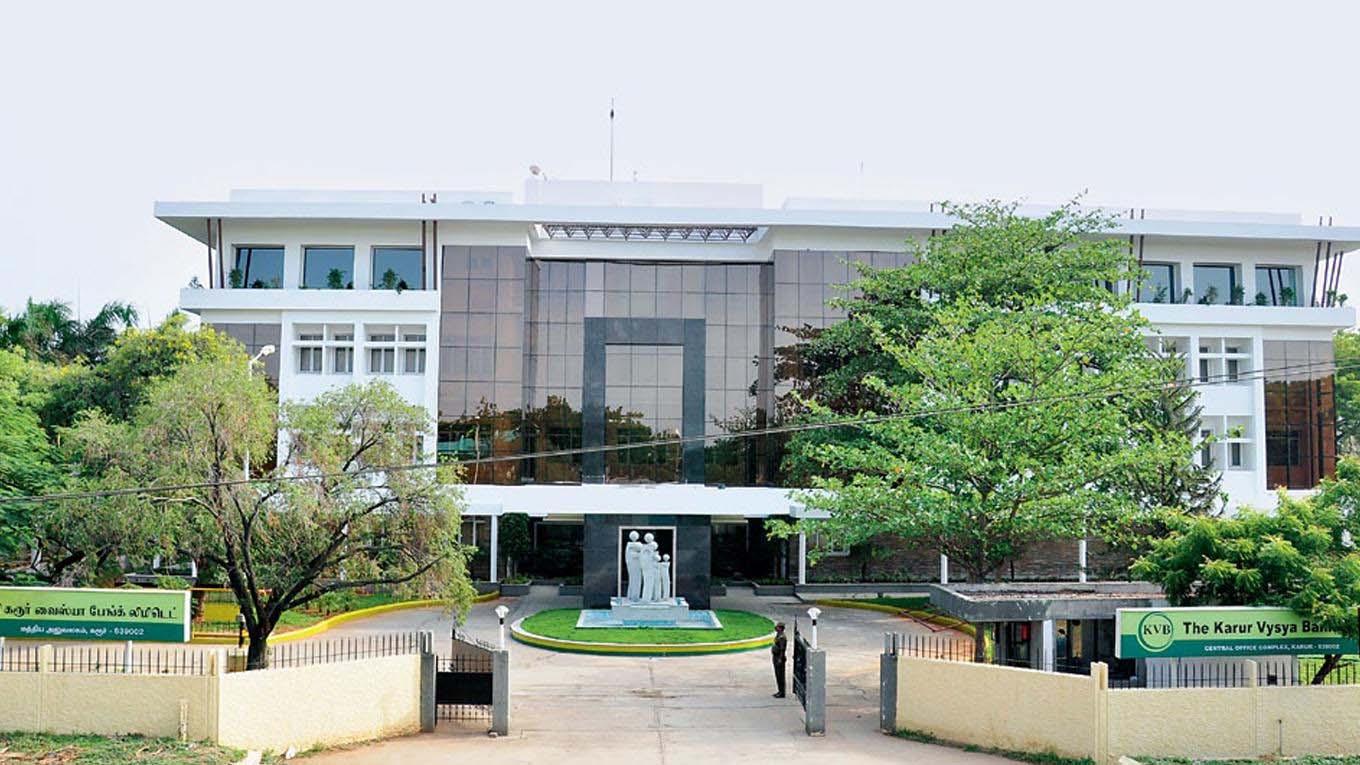
When it comes to banking stocks, the ongoing result season which coincided with a sharp correction in the markets, has been a telling time. Before the correction set in, almost all banking stocks were on an upward spiral. And the banking sector results too were almost all good, propelling the stocks further up. But when the swift and painful correction set in, the stocks of even many of the well performing banks in Q2 tumbled down sharply. That led analysts to look more deeply into the numbers, beyond what the headline figures suggested. And the truth was there in the fine print for all to see. One of the best performing stocks even during the overall correction was Karur Vysya Bank (KVB). Under the proactive leadership of its MD & CEO, Ramesh Babu, the bank’s net profit grew a robust 51% to Rs.378 crore for the quarter ended September 30, compared with Rs.250 crore in the corresponding year-ago period. The bottomline was also up sequentially, over Q1. The bank’s Net Interest Income (NII) grew by 11% to Rs. 915 crore from the Rs. 821 crore it was in the corresponding year-ago quarter. The Non Interest Income or the Fee Income for the September 2023 quarter rose even faster at 40% to Rs.339 crore as against Rs.242 crore. While all these growth numbers were quite good, the reasons why Karur Vysya Bank could put up an impressive price performance during the market rout were something else - including its asset quality, its overall business momentum and its attractive valuations. KVB’s Gross NPA ratio declined sharply to 1.73% during the September 2023 quarter compared with 4.02% a
year ago and 1.99% in the June 2023 quarter. Net NPA too fell impressively to 0.47% compared with 1.38% in the year-ago quarter and 0.59% in the preceding quarter. This kind of performance on the asset quality front was missing in most of the banks that fell sharply during the recent correction. One reason why KVB has been able to perform this well on the asset quality front, is its cautious stance on the booming segment of unsecured loans. As a 107-year old private sector bank, KVB is quite conservative when it comes to diversifying into such new age products that come with high growth prospects but immense risks. But that doesn’t mean that KVB won’t bite the bullet ever when it comes to unsecured loans, but it will do so only at its own terms and timing. The bank, which has become increasingly tech savvy over the past decade, has acquired the capabilities to analyze digital surrogate data on customers, based on which better decisions can be taken in products like unsecured loans. Secondly, it is planning to test the waters with its existing customers, like its current account customers who still don’t have a loan product with KVB. And thirdly, the bank is planning a careful and well planned foray into the domain of unsecured business loans in the MSME segment, where the bank already has tremendous expertise. With this Q2, the bank has crossed Rs.1,50,000 crore in total business, which may not come across as a big number when compared to new gen private banks, but for a prudent and high quality bank like KVB, it is remarkable to say the least. And all these achievements still come at attractive valuations, with KVB still available at a TTM P/E multiple of 8.84 times and a P/B of just 1.41 times, which is way more safer than most comparable private sector banks now.
SEASONAL MAGAZINE
UP’s UNSTOPPABLE UPW 2024 AND BEYOND

IS 2024 DESTINED TO BE THE YEAR OF INDIA OR THE YEAR OF UTTAR PRADESH? MOST PROBABLY BOTH, AND MORE IMPORTANTLY, IT IS LIKELY TO BE INDIA’S YEAR BECAUSE IT IS UP’S YEAR.
SEASONAL MAGAZINE
WARD MARCH IN

SEASONAL MAGAZINE

Many factors confluence to make this a reality in the new year. Firstly, under Chief Minister Yogi Adityanath’s unparalleled leadership, the state could close 2023 on a high note, with some estimates showing that it has edged past Tamil Nadu to become the second largest economy in the country, second only to Maharashtra now. Not so long back regarded as one among the country’s economically backward and sick states of Bihar, Madhya Pradesh, Rajasthan & Uttar Pradesh (BIMARU which also means sick in Hindi), the state has staged a stunning turnaround under CM Yogi Adityanath to surge to the second spot in Gross State Domestic Product (GSDP) in the whole of India. Secondly, Uttar Pradesh’s success in this regard is more inclusive and sustainable, as it has achieved this without relying too much on any mega-city economy. For example, most of the states it outpaced like Tamil Nadu, West Bengal, Karnataka & Telangana, rely too much on the economies of their mega cities like Chennai, Kolkata, Bengaluru & Hyderabad respectively. GSDP leader Maharashtra also relies too much on the performance of its mega city, Mumbai.
While Uttar Pradesh too is home to mega cities like Lucknow & Kanpur as well as modern urban centers like Noida, the state doesn’t rely only on them for economic development. Rather, UP’s development is more spread out across cities including Ghaziabad, Agra, Meerut, Varanasi, Prayagraj, and many more cities and districts

 SEASONAL MAGAZINE
SEASONAL MAGAZINE

of similar stature. Thirdly, 2024 is all set to unveil one of the most promising aces up UP’s sleeve, Ayodhya. The city is attracting national and international eyeballs, as the Ram Temple inauguration on January 22 will unleash a mega economic boom in the city, its suburbs and surrounding areas, as companies of all hues are vying to set shop in

this newest happening destination of the country. While the initial rush is being dominated by travel and tourism majors, as is seen in the rush to launch five-star hotels and resort projects, it will soon make way for all kinds of service, logistics and light manufacturing companies to set shop in the city’s vicinity. Still, yet another factor is likely to boost UP’s fortunes than all these factors combined. Under CM Yogi Adityanth’s visionary leadership, the state had conducted one of India’s most successful Global Investor Meets in 2023, attracting investment proposals to the tune of over Rs. 40 lakh crore. And 2024 and beyond are going to be the years in which these mega investment projects fructify, as companies complete their DPRs, identify lands, hand out the construction contracts and thus start the ball rolling. And last but not least, Uttar Pradesh and its Chief Minister enjoys the wholehearted support and guarantee of Prime Minister Narendra Modi in their quest for executing on a double-engined model of growth and governance to make the state into a $1 trillion economy and the largest in the country.
SEASONAL MAGAZINE

KEEPING PROMISES, WHATEVER IT TAKES
KEEPING PROMISES, WHATEVER IT TAKES
SIDDARAMAIAH HAD SURPRISED ALMOST EVERYONE BY ACHIEVING A SURPRISE WIN IN THE ASSEMBLY POLLS. NOW, THIS SECOND-TIME CHIEF MINISTER IS SURPRISING EVEN HIS DETRACTORS BY BEING EQUALLY DEFT AT EXECUTING HIS SOCIAL HANDHOLDING PROMISES AND THE ECONOMIC DEVELOPMENT OF THE STATE.
SEASONAL MAGAZINE STATE

SEASONAL MAGAZINE

oliticians are good at making promises, but not so good at keeping them. And when it comes to poll promises, the promisekeeping rate is even more dismal, as often the moon itself would have been offered, to come to power. Things had come to such a situation that people had started taking poll promises with a generous amount of salt. Siddaramaiah’s poll promises in Karnataka this time were also not much different. They were too good to be true that many didn’t take it seriously. But as the election results showed, many more took it seriously indeed, as the person promising it was Siddaramaiah, a man of the masses. And the unique leader that he is, the new Karnataka Chief Minister is hellbent on keeping his promises to the electorate. Key among the Congress Party’s promises in Karnataka this time was the Five Guarantees, which are all targeted towards economically deserving segments of the population like the poor, the women, and the educated unemployed. Among these five social guarantees, the first two schemes to get implemented were the 'Uchita Prayana' and the 'Gruha Jyoti' guarantees. 'Uchita Prayana' came into force on June 1, and guarantees free travel for women in public transport buses other than AC and luxury buses in Karnataka. The 'Gruha Jyoti' program came into force on July 1, and guarantees 200 units of free electricity for the poorer households that consume only less than 200 units per month. Another social guarantee that came into effect on July 1, but in a slightly different way than was originally intended, was the 'Anna

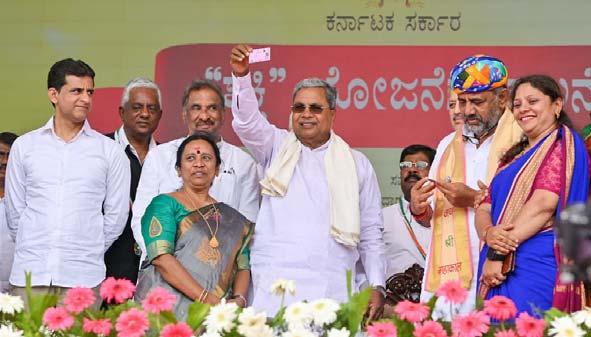

Bhagya' scheme. Under this, 10 kg of food grains were to be given free to all in the BPL households and Antyodaya card holders. But since the rice procurement ran into trouble with the Central Government expressing its difficulty to allot the necessary quantity of rice, Siddaramaiah went ahead and paid a cash compensation of Rs 170 to every member of the BPL households, numbering about 1.19 crore people, who were eligible for the free rice scheme. The next social guarantee that came into force on August 15, India’s Independence Day, was the 'Gruha Lakshmi' program under which the Karnataka Government provides Rs. 2,000 as monthly aid for the women head of families that earn less than Rs. 2 lakh per year. Now, the only promised guarantee that
Under the revolutionary ‘Yuva Nidhi’ scheme, the government will provide Rs. 3,000 per month for unemployed graduates, and Rs. 1,500 per month for unemployed diploma holders, for two years or until they get a job, whichever is earlier.
 SEASONAL MAGAZINE
SEASONAL MAGAZINE
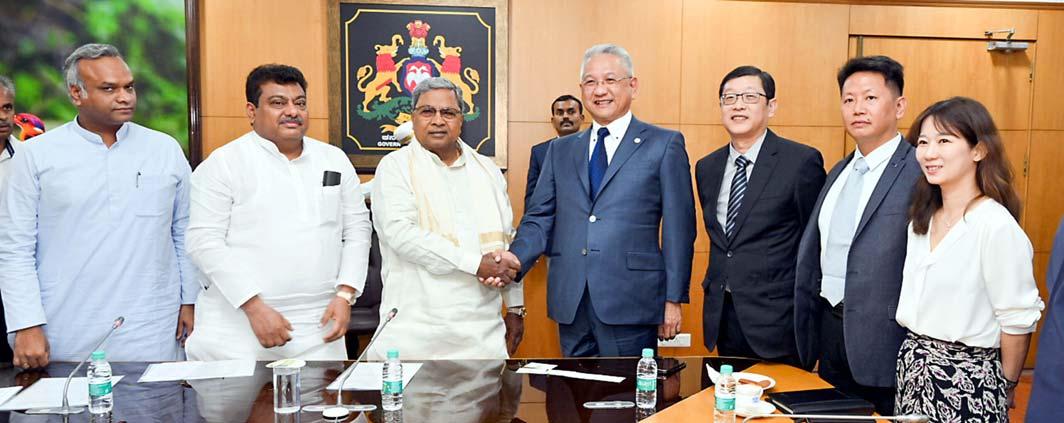
remains to be implemented is the revolutionary ‘Yuva Nidhi’ scheme under which the government will provide Rs. 3,000 per month for unemployed graduates and Rs. 1,500 per month for unemployed diploma holders for two years, or until they get a job, whichever is earlier. ‘Yuva Nidhi’ is one of the most eagerly awaited schemes in the state, especially among the educated unemployed, and the government has recently announced that it will soon launch the applications for this scheme’. While there are many detractors for such subsidy or freebie schemes, arguing they are anti-development, the new Karnataka Chief Minister can silence them all with his firm conviction that the economically underprivileged classes should be handheld for as long as it is necessary, for truly inclusive economic development to happen. And at the same time, focus on such social guarantee schemes has not come at the cost of ignoring industrialisation. Under CM Siddaramaiah’s vision, the state is soon to have a brand new Industrial Policy. But even without such competitive updates to the policy coming into effect on paper, it is there in the spirit, as the new iPhone

Close on heels of Foxconn’s plans for a Rs. 13,600 crore project with potential for 50,000 jobs, it has come up with a supplementary investment proposal in which its subsidiary Foxconn Industrial Internet (FII) will invest Rs 8,800 crore and create 14,000 jobs in an ancillary plant for iPhone components.
manufacturing plant by Foxconn shows. Foxconn will be given possession of 300 acres of land at the Information Technology Investment Region (ITIR) in Devanahalli where Apple iPhones will be made. The project promises to create 50,000 jobs with an investment of Rs 13,600 crore. Recently, this Taiwanese manufacturing giant has come up with a supplementary investment proposal in which its subsidiary Foxconn Industrial Internet (FII) will invest Rs 8,800 crore and create 14,000 jobs in an ancillary plant that will manufacture screens, outer coverings and mechanical components needed for IPhones. Since this requires another 100 acres of land, and in keeping with the government’s policy of developing hubs other than Bengaluru too, the Foxconn delegation was taken to the Japan Industrial Township at Tumakuru where such suitable land is available. As per the recently released Export Preparedness Index (EPI) ranking by NITI Aayog, Karnataka is the No.1 State in the country on two parameters namely Policy Pillar and Business EcoSystem Pillar. The state has also secured the status of 'Achiever' in the 'Leads Ranking' of the NITI Aayog for the logistics sector, thanks to its rapidly developing infrastructure, connectivity network and transparent ecosystem.
SEASONAL MAGAZINE

AROUND THE WORLD ONROADAND
AROUND THE WORLD ONROADAND
RAIL
RAIL
MEET THE MAN WHO VISITED EVERY COUNTRY IN THE WORLD WITHOUT BOARDING A PLANE. AT 34, TORBJØRN PEDERSEN EMBARKED ON A SEEMINGLY IMPOSSIBLE JOURNEY THAT WOULD TAKE 10 YEARS – AND INVOLVE CEREBRAL MALARIA AND BEING HELD UP AT GUNPOINT. HE REFLECTS ON THE HIGHS, THE LOWS AND THE JOY OF GETTING MARRIED EN ROUTE

orbjørn Pedersen has always dreamed of being a famous adventurer. He spent his childhood building dens in the woods, pretending to be his hero, Indiana Jones. Even as an adult, he couldn’t shake the sense that he was destined for greatness.
There was just one problem. “I was born at least 100 years too late,” he tells me over video call from his home in Copenhagen. “I had a profound feeling that everything had been done. The great adventures took place in the past. It was all over.”
Things reached a tipping point in 2013. He was 34 and had a successful career in shipping and logistics. He had just bought a flat and started a serious relationship. It was time to give up his childish dreams. Then his dad sent him an article about people who had travelled to every country in the world. “I didn’t know you could do that,” he says. “Certainly you would have to be a millionaire.”
But here were ordinary people walking, cycling and hitchhiking around the globe on shoestring budgets. Then came his eureka moment: “I discovered that no one had ever gone to every country
in the world completely without flying [in one unbroken trip].” (A British man, Graham Hughes, has set foot in every country without flying, but took two breaks from the journey for personal reasons.)
Pedersen was already obsessed with world firsts: “The first to go to the north pole, the south pole, the deepest sea, the highest mountain, the longest river.” Now he had a chance to set a world record himself. “It was right in front of me,” he says, eyes gleaming. “It could be Ibn Battuta, Marco Polo … Thor Pedersen! I could do something of significance with my life, something worth putting in a book, something worth remembering. And it would be a great adventure!”
Pedersen spent the next 10 months planning the journey – the route, budget, what to pack – without ever making a conscious decision to go. It was only

TRAVEL
MAGAZINE
SEASONAL
when he turned down an opportunity to work in South America that he realised he was fully invested in the project, as he had started to call it. He set himself three rules: at least 24 hours in each country; no visits home; and absolutely no flying. His list of countries included the 195 states recognised by the UN, plus extras such as Kosovo and Taiwan – 203 in total. He figured the journey would take him about four years. His budget was $20 a day, funded by savings, supporter donations and sponsorship. He would be acting as a goodwill ambassador for the Danish Red Cross, raising awareness of its work in 199 countries and encouraging people to give blood. He also aimed to share something positive about every single country – “even the ones we hear horrible things about” – on social media. What made him think he had even a hope of completing such an epic task?
“I was born to do this.” Pedersen had lived in three countries by the age of seven – Denmark, Canada and the US – and spent holidays in a fourth, Finland (his father is Danish, his mother Finnish). “I was uprooted a lot as a child,” he says.
After school and business school, he completed military service and became a UN peacekeeper, stationed in Ethiopia, Eritrea and Djibouti. But he says it was his first overseas logistics job after leaving the army that really shaped him. He went to Libya, then still under Muammar Gaddafi’s rule. “I can barely recognise the person who was sent to Libya and the one who came back,” he says. “I was green, lacking in self-


confidence. I came back after two years with proper life experience.”
He started to work all over the world: in Bangladesh, Greenland, the Arctic Circle, Kazakhstan and Azerbaijan, as well as Florida and a number of European countries. He also trained in humanitarian aid and volunteered at a homeless shelter.
His parents, who had divorced when he was 15, each reacted differently to his project. His dad was convinced he was throwing away a glittering career. Pedersen had to explain to him that this wasn’t an extended gap year; he would not be “sitting on a beach with long hair, playing a guitar and smoking something I shouldn’t”. His mum, who had taken a young Thor mushroom hunting and told him tales about trolls, accepted the idea. “I also like to travel,” was all she said. It was a lot harder breaking the news to his girlfriend, Le. They had been together less than a year, and now he was going into self-imposed exile. “I have had previous experience with long-distance relationships and it’s hard. I was trying to warn her against it while wanting her
AFTER SCHOOL AND BUSINESS SCHOOL, HE COMPLETED MILITARY SERVICE AND BECAME A UN PEACEKEEPER, STATIONED IN ETHIOPIA, ERITREA AND DJIBOUTI.
to stay,” he says. They agreed to give things a go.
Pedersen left Denmark on 10 October 2013, heading first to Europe and then North America. “These continents were very easy in terms of logistics and bureaucracy,” he says. The difficulty in Europe was sticking to the budget. He got a rail pass that allowed him unlimited travel for a month, and travelled as quickly as possible within the 24-hoursper-country rule. “I lost about 10 kilos in the first month. I was skipping meals, I didn’t get a lot of sleep. I was so exhausted.” He realised that moving on so quickly was impossible and he settled on a minimum of three days in a country.
As he ticked off countries, moving into Central and South America and to the Caribbean, his “no flying home” rule began to bite. “My grandmother died and I couldn’t come back for her funeral,” he says. A close family friend also died. “He was on his bicycle and his heart stopped. That was someone I wasn’t expecting to lose.” Then there were friends who were struggling. “I have had people really close to me who experienced depression, and I wasn’t there. I had to weigh out: do they have enough support without me? Can I support them from a distance? Or should I be there with them?”
His relationship with Le wasn’t plain sailing either. “We had some rough patches and came pretty close to breaking up,” he says. “But we found a way to fix it. We paid more attention and she came to visit me more frequently.
SEASONAL MAGAZINE

Things got a lot better.” So much so that on her 10th visit Pedersen proposed, on top of Mount Kenya, in a snowstorm. “I was so nervous and scared – what if she said no? But she said yes.”
That was one of the happiest moments of the entire journey. He also has a fond memory of being on top of a truck in the Republic of the Congo. “I was on this truck for two days, with 40 or 50 people. It was slow, super-dusty, really hot and unbelievably uncomfortable,” he says. “As the sun was setting, the woman next to me started banging her water bottle rhythmically. Then she started singing. Another woman joined her, and then a man, and suddenly the whole truck was singing. It was beautiful, powerful, emotional – one of those moments where you realise: you could not buy a ticket for this.”
It was also incredibly satisfying when he crossed a border that had felt impossible. “I genuinely felt pleasure every time I entered a new country. That high was the best feeling in the world.”
But if the highs were dizzying, the lows were devastating. “I was living a
PEDERSEN HAD BEEN TRAVELLING FOR MORE THAN SIX YEARS WHEN HE AND LE SET A DATE TO MARRY IN NEW ZEALAND. HE WAS ON HIS WAY TO THEIR WEDDING, VIA FOUR DAYS’ TRANSIT IN HONG KONG, IN MARCH 2020. YOU CAN GUESS THE REST:
nightmare at times. There were hundreds of difficult checkpoints; I had to recover from cerebral malaria; I was held up at gunpoint many times,” he says. “I should have been dead. I should’ve quit even more times.”
There is one incident which haunts him, when he was stopped by drunk, armed, hostile men in military uniform in the jungle near the Cameroon/Republic of the Congo border at 3am. He recently relived the experience when filming a documentary. “Suddenly, I was back in that situation; my heart started racing and I had tears in my eyes. I feel it coming back again now,” he says. “I have trauma in my body that is buried so deep, I know I’m going to have issues with it at a later point. I need to find a way to deal with it.”
Did he come close to giving up? “Oh yeah. I realised that I had imprisoned myself. I was in physical pain, emotional pain, I had no motivation and it felt like the world couldn’t care less about what I was doing.” How did he find the strength to carry on? “I didn’t want to be a person who quits.”
Pedersen had been travelling for more than six years when he and Le set a date to marry in New Zealand. He was on his way to their wedding, via four days’ transit in Hong Kong, in March 2020. You can guess the rest: Covid hit, the territory locked down and he didn’t leave Hong Kong for two years. She was back home in Denmark, but after they married online she managed to get a spousal visa and visit for 100 days, after restrictions had eased. The couple later had a ceremony on a beach in Vanuatu in the South Pacific.
Le visited him 27 times, but they still spent nine-tenths of their time apart. He puts the survival of their relationship down to trust and honesty. “I trust her and that gives me peace. And she knows she can trust me. If that trust isn’t there, it will poison the relationship,” he says.
Pedersen in Fiji in 2023. Pedersen in Fiji 2023. He kept fit on the road by doing 30 pushups and a one minute plank every day, and running when he could. Where did he most enjoy the food? “I had laksa for the first time when I got to the Malay area and it blew my mind. I had some really good food in Peru as well. In central Africa, you would get grilled fish on the roadside with some manioc (cassava), onion and a secret sauce … It was fantastic.”
And the worst? “Take your pick. I had snake, dog, horse, camel, a variety of different insects, cow’s skin, which was really gelatinous. The worst could be goat’s brain in Nigeria; I didn’t care much for that. Nigeria had amazing food too, though, such as suya – they cut meat into small strips, barbecue it, pour chilli on, add small pieces of onion, and serve it like fish and chips on newspaper with a toothpick.”
It’s unusual for someone completing a
 SEASONAL MAGAZINE
SEASONAL MAGAZINE
flight-free challenge to talk so little about the environment. Was he conscious of travelling sustainably? “The environment wasn’t a motivation, but I am very proud to look back at a project like this and say my carbon footprint was at a minimum,” he says. “In 2013, the climate debate wasn’t at all what it is today. I think people should definitely limit flying when they can.” Pedersen is open about his willingness to fly in the future – and, of course, he benefited from family and friends flying to visit him.
But overland travel has become more difficult, he says, thanks to increased border security, stricter rules on container ships and disappearing ferries. He gives Iran as an example. “They were perplexed that I wanted to enter overland when they have international airports where you can get a visa on arrival. It took me a good three weeks to get one.”
Travel has changed in other ways, too. “Twenty years ago, when I travelled in south-east Asia, you would wave down a tuk-tuk auto rickshaw and negotiate a price. These days, you use an app. The world is super-super-connected.”
As the end of his journey approached, he struggled. It had taken far longer than planned – nearly 10 years – and, he

says, he experienced “burnout and had seen what is on the other side. I felt nothing when I reached the last two countries. Nothing at all. The smiles that I posted online were fake.” He chose a slow, 33-day voyage home from the Maldives to prepare himself. “The last three days, coming towards the port of Aarhus, I have never had more doubt in my life:
He walked down the gangway on 23 May 2023 to find his wife, father, two sisters, assorted journalists and 150 wellwishers. “People had come from abroad to be there because they wanted to witness history. There was so much love and support.” He says his reception was “ace”, but perhaps after a decade away, it could never be enough. “It could have been tens of thousands of people, you know, but it was 150 people and it was nice and positive and good.” He pauses. “And then my doubts came back. But I’m starting to figure things out now.”
What big lessons did he learn on his travels? “We are far more similar than anyone would ever believe. But we are so quick to see the differences.” Most people, he thinks, are good. “Chances are if you need help, and it is not too costly to them, people will help you. There are very few people who actively want to harm you. I can definitely say that I had help and support from someone in every country in the world.”
Still, he was more optimistic about the future of humanity before the pandemic. “And then I saw rich people buying up all the vaccines. There are still a lot of countries that are just getting their Covid vaccines now. That breaks my heart.” Power and money can corrupt anyone, he believes.
If anything, his quest to become a heroic explorer has taught him to rely on others. “The solution is not necessarily in you. A lot of solutions in life are found through other people. If you feel you have reached the end of the line, you just haven’t met the right person yet,” he says. “You might have to try 1,000 closed doors, but there is always an open door somewhere. Never, ever give up.”
(Credit: Rachel Dixon)
‘PLACATING RUSSIA’: ELON MUSK TOLD PENTAGON HE SPOKE TO VLADIMIR PUTIN DIRECTLY
Elon Musk told Pentagon’s top policy official during an October conversation about Ukrainian forces losing connection to Starlink service.
SpaceX’s chief executive officer Elon Musk told Pentagon officials that he had spoken personally to Russian president Vladimir Putin about the satellite-based internet SpaceX supplies to Ukraine’s military, the New Yorker reported. Elon Musk told Colin Kahl, then the Pentagon’s top policy official, during an October conversation about Ukrainian forces losing connection to Space Exploration Technologies Corp.’s Starlink service as they entered territory contested by Russia, the report claimed.

NORTH KOREA'S KIM BLASTS 'IRRESPONSIBLE' TOP OFFICIALS FOR FLOOD DAMAGE
SEOUL, Aug 22 (Reuters) - North Korean leader Kim Jong Un has lashed out at top officials for their "irresponsible" response to flood damage, saying they had "spoiled" the national economy, state media reported on Tuesday. Kim inspected a tideland on the west coast on Monday after seawater recently destroyed an embankment with inadequate drainage system, flooding more than 560 hectares of land, including over 270 hectares of rice paddies, news agency KCNA said.

SEASONAL MAGAZINE
INDIAN BANK CONTINU TO OUTPERFORM ON HIGHER GROWTH AND BETTER ASSET QUALITY
INDIAN BANK CONTINUE TO OUTPERFORM ON HIGHER GROWTH AND BETTER ASSET QUALITY

EES S

DURING THE PAST FIVE YEARS, IT IS DOUBTFUL WHETHER ANY OTHER PSU BANK HAS IMPROVED ITS PERFORMANCE AS SYSTEMATICALLY AS INDIAN BANK. UNDER THE VISIONARY LEADERSHIP OF ITS MD & CEO SHANTI LAL JAIN AND ITS FOUR EXECUTIVE DIRECTORS, THE CHENNAI HEADQUARTERED LENDER IS CONTINUING ITS OUTPERFORMANCE IN FY’24 AND IN THE LATEST PUBLISHED Q3.

or sure, almost all PSU banks have improved in their fundamental performance over the FY’19-FY’24 period, but for most of them the progress has been far from linear. But Indian Bank’s performance during this crucial period - that witnessed the recovery from demonetization and the plunge to Covid despair and then the recovery from the pandemicis almost like a textbook case of steadily improving performance.
Barring a slight dip in FY’22, there hasn’t been any dip in revenues at Indian Bank, whereas in profits, there hasn’t been any dip during these five tumultuous years. While annual revenue more than doubled from Rs. 19,182 crore in FY’19 to Rs. 44,985 crore in FY’23, annual net profit went over the roof - up by 17 times - during these five years from just Rs. 321 crore in FY’19 to Rs. 5330 crore in FY’23!
The profit growth rate has been especially remarkable in FY’22 & FY’23, as despite the low base effect waning off, the bank outperformed itself under the visionary leadership of its MD & CEO Shanti Lal Jain who had assumed the responsibility during the second quarter of FY’22, amid the peak of pandemic woes.
A commerce postgraduate, a chartered accountant and a company secretary by training, SL Jain was earlier a veteran of Allahabad Bank where he rose to be a General Manager, and was later appointed as an Executive Director at Bank of Baroda.
Among his many unique strengths is his direct experience working in
various industrial sectors for several years before he commenced on his banking career. At Allahabad Bank he handled crucial responsibilities including that of Chief Financial Officer, Chief Risk Officer and Head of IT Department, and at Bank of Baroda as its ED, he handled the challenging amalgamation of Vijaya Bank and Dena Bank into BoB, apart from heading its Large Corporate Credit, Stressed Assets & International Banking.
Interestingly, Allahabad Bank where SL Jain began his banking career, was amalgamated to Indian Bank in 2020. All these diverse experiences of SL Jain are benefitting Indian Bank immensely, as these all are the very crucial departments & responsibilities that should perform perfectly for a bank to outperform.
He is ably assisted in this role by the four Executive Directors of Indian Bank, of which three are veterans of Indian Bank itself. They are former Chief General Managers Imran Amin Siddiqui who became ED in March 2021, Mahesh Kumar Bajaj who became ED in March 2022, and Shiv Bajrang Singh who assumed ED’s office in October 2023.
INDIAN BANK’S ANNUAL NET PROFIT HAS WENT UP BY 17 TIMES - DURING THE LAST FIVE YEARS FROM JUST RS. 321 CRORE IN FY’19 TO RS. 5330 CRORE IN FY’23!
Shanti Lal Jain MD & CEO

Ashutosh Choudhury who became ED in May 2023 also brings in a rich experience to the bank as he was the Chief General Manager & Group Chief Risk Officer of India’s second largest PSU lender, Punjab National Bank. Among them, this close knit team of veteran bankers
led by MD & CEO SL Jain is continuing to guide Indian Bank to outperform in calendar years 2023 and 2024.
During the past five quarters, the Chennai headquartered lender’s revenue and profit have continued to soar. In the latest published
quarter of Q3, Indian Bank’s standalone net profit rose 52% to Rs. 2119 crore from the corresponding year-ago period. Net Interest Income (NII) grew 6% to Rs. 5,815 crore and fee based income went up by 21% to Rs. 852 crore.

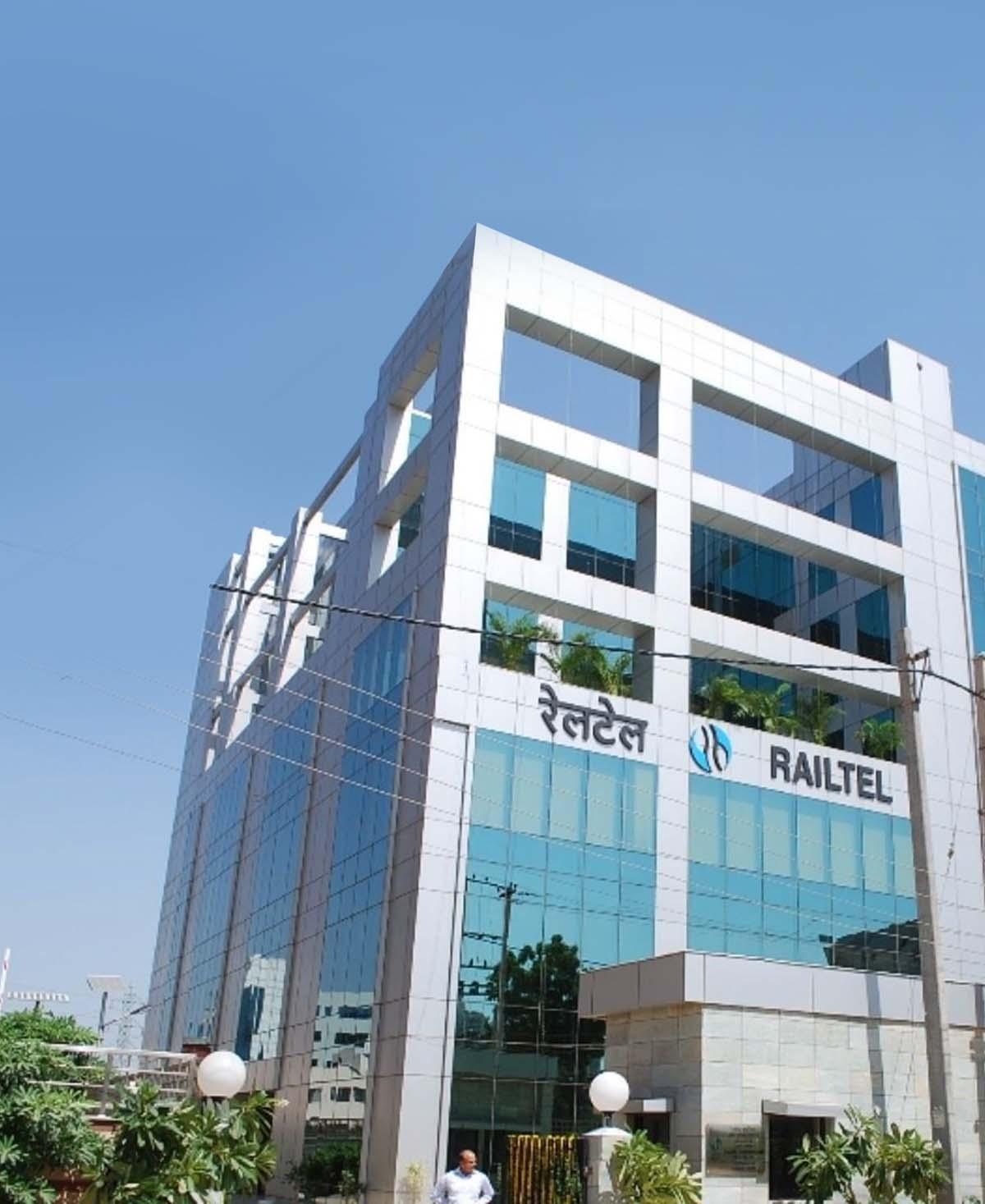
RAILTEL IS UP BY NEARLY 5 TIMES ITS TWIN ENGINES OF TELECOM & RAILTEL IS UP BY NEARLY 5 TIMES ITS TWIN ENGINES OF TELECOM &
S ON & PROJECTS S ON & PROJECTS

RailTel stock is up by nearly 5 times from its 2021 IPO levels, as this unique ICT company in the public sector is firing on its twin cylinders of B2B & B2C telecom broadband services as well as project implementations like the LTE and Kavach projects it is working on for Indian Railways. This model gives it a steady recurring revenue from telecom as well as a healthy order book of projects. The outperformance continued in Q3 with revenue up by 47% and profit up by 94%.
RailTel had gone for its IPO when the market was not in the best of health. The year was 2021 and the month was February, and the market had not yet recovered fully from the Covid shock, nor had the country fully come out from the second wave lockdown.
RailTel’s core business sector of Telecom had already fallen out of favour among investors due to lacklustre performance by most listed telecom players, not to mention the crisis PSU players like BSNL & MTNL were in. RailTel was growing steadily, but slowly, back then.
Hence, this PSU telecom company’s IPO - primarily to meet its promoter GoI’s disinvestment target - through a pure OFS route should have faced daunting prospects in its pursuit to raise nearly Rs. 820 crore. Quite a few prominent analysts gave it only a lethargic ‘May Apply’ tag as the issue seemed fully priced at an annualised P/E of over 33 times on its latest earnings back then, and a P/ BV of over 2.15 times.
Yet, the RailTel IPO was oversubscribed by over 42 times! The one line reason was simple enough to understand - all said and done, RailTel had an impregnable moat
around it, as being Indian Railways’ own ICT Provider its core business was a monopoly! To just drop a hint about the scope of this moat, RailTel has an exclusive ‘Right of Way’ along railway tracks to lay its optical fibre network.
Discerning investors across the QIB, NII, Retail & Employee categories made a beeline for the stock, with the most knowledgeable QIB and NII categories witnessing over 65 times and over 73 times oversubscription respectively. The IPO also had a robust listing with the RailTel stock closing its first day up by 29%.




What has happened since then should be food for thought for everyone interested in the potential of India, India Inc and the Indian PSU sector. RailTel did some very typical and predictable things during the last 3 fiscals, and then some unpredictable and extraordinary things too!
On the predictable side, its consolidated annual revenue went up by nearly 75% from the Rs 1128 crore it was in FY’20 to the Rs 1965 crore it touched in FY’23. With one more quarter to go in FY’24, RailTel already looks like it will double its revenue in this 4-year period.
This revenue growth was steady as steady can be, in a text-bookish kind of way, and investors can continue to look upon this stock for its revenue compounding feature. On the slightly more unpredictable side, RailTel’s consolidated profit went up by as much as 47% by FY’22 itself, before dipping slightly in FY’23.
But coming to the current fiscal of FY’24, the profit run rate has already recovered, and it looks like RailTel will close FY’24 at its highest ever profit level. For the latest published quarter of Q3, RailTel has posted a standalone net profit of Rs 62 crore as against Rs 32 crore in the corresponding period of the previous year registering a YoY growth of 94%. Its revenue grew by 47% year-on-year to Rs. 668 crore.

Now to the extraordinary feat the RailTel stock has achieved during the 3 years since its listing. It has soared from the Rs. 94 it was during its IPO to its all time high of Rs 459 recently - a spectacular rise of 388% or 4.88 times! IPO time analysts who thought its 33 P/E and 2.15 P/BV were expensive or fully priced, can only watch helplessly as the stock today trades with a bullish momentum at 49 P/E and 7.3 P/BV.
While it is true that RailTel has benefitted from the rerating accorded by the market to the railway stocks, in RailTel’s case it is not the complete picture. RailTel has benefited more from the extraordinary things it has been doing under the visionary leadership of its Chairman & Managing Director Sanjai Kumar, a veteran of both Indian Railways and RailTel.
A graduate engineer in Electronics & Telecommunications from the University of Allahabad and a PGDM holder from the prestigious MDI Gurugram, Sanjai Kumar joined the Indian Railway Service of Signal Engineers (IRSSE) in 1992, and had significant achievements to his credit in the challenging North Eastern Railway network.
In 2002, he switched over to the then young RailTel (started only in 2000) on deputation and was absorbed into
V Rama Manohara Rao Director/Finance Manoj Tandon Director/ Project, Operations & Maintenance
Yashpal Singh Tomar Director / Network Planning & Marketing

RailTel ranks in 2008, enabling him to contribute from RailTel’s formative years onward. During the IPO time, Sanjai Kumar was the Director in charge of Network Planning & Marketing as well as Project, Operations & Maintenance.
Since taking over as CMD in September 2022, Sanjai Kumar is ably assisted in leading RailTel by a top team of Functional Directors including V Rama Manohara Rao who heads Finance, Manoj Tandon who heads Projects, Operations & Maintenance, and Yashpal Singh Tomar who leads Network Planning & Marketing, besides the Government Nominee Directors and Independent Directors.
Apart from being Indian Railways’ primary ICT Provider, RailTel, a Mini Ratna (Category-I) Central Public Sector Enterprise (CPSE) has emerged as one of the largest neutral telecom infrastructure providers in the country. It owns a pan-India optic fiber network that serves both the Indian Railways as well as consumers and all kinds of public and private organizations across India.
Thus RailTel is both a B2B and B2C brand, apart from being a captive provider of network services to its
parent, Indian Railways. On the railways side, the optic fiber network of RailTel covers over 61,000 route kilometers and over 6,108 railway stations across India. And on the consumer & non-railway B2B side, RalilTel’s city wide access across the country is over 21000 kilometres. Thus its network covers almost all important cities, towns and several rural areas as well.
And that is not all either. Based on this massive infrastructure that it has painstakingly built up over the 24 years of its existence, RailTel also undertakes a wide variety of projects including provision of mission critical connectivity services like LTE, Kavach anti train collision system, IP based video surveillance systems at railway stations, e-Office services and implementing short haul connectivity between stations as well as long haul connectivity supporting various captive organisations within the Indian Railways.
In this segment of value added services also, RailTel has a B2C activity as it also provides various passenger services including content on demand services and Wi-Fi across major railway stations in India. Based on RailTel’s deep experience and
expertise in handling and undertaking telecom and ICT projects, RailTel has also been selected for the implementation of various missioncritical projects for the Government of India, that goes beyond railway or consumer services, including rolling out the National Knowledge Network, Bharat Net and an optical fibre based connectivity project in North East India which is funded by the Universal Service Obligation Fund (USOF).
RailTel’s various operations are internationally benchmarked and ISO certified for Tier-III (Design & Facility), Certified for Information Security Management System, Certified for Service Management System, Certified for Quality Management System, Certified for Cloud Security, Certified for Data Privacy in Cloud Service, Certified for Network Security, and CMMI Maturity Level-4 Certified for Process Improvement.
RailTel has a twin engine revenue model for growth - from recurring telecom revenues and a healthy order book of projects that give extra revenue visibility. RailTel is now also making definitive plans to offer its deep technological expertise in international markets.

WHAT NEXT FOR SOUTH AFTER NET PROFIT TRIPL

HINDIAN BANK LES IN Q3?

AMONG ALL THE PRIVATE SECTOR BANKS IN THE COUNTRY, IT WAS PERHAPS SOUTH INDIAN BANK (SIB) THAT LED IN Q3 PROFIT GROWTH. THE KERALA BASED LENDER’S NET PROFIT NEARLY TRIPLED IN THE THIRD QUARTER ON A YEAR-ON-YEAR BASIS TO RS 305 CRORE, EVEN WHILE IT WITNESSED REASONABLE GROWTH ON MOST OTHER METRICS AS WELL, INCLUDING ADVANCES, DEPOSITS, CASA, INTEREST INCOME AND ASSET QUALITY.
With this performance, the bank has underlined that its stunning positive turnaround in fortunes first seen in FY’23, especially in Q4 of that last fiscal, is here to stay. The South Indian Bank stock has been one of the best performing private sector banking stocks during the last 12 months, nearly tripling in value.
The Q3 numbers have also come as a vote of confidence in the bank’s new MD & CEO PR Seshadri, as this was the first full quarter under the leadership of this young yet veteran banker from the Citigroup and Karur Vysya Bank stables. The bank grew its revenue and profit on a sequential or QoQ basis too in Q3, showing a continuation of its well proven strategies under the new leader. Being an electrical engineer as well as a PGDM from IIM Bangalore, and having handled with elan a similar top leadership role in KVB, which is on many counts a bank very similar to SIB, Seshadri has enough expertise and experience to crack crucial segments like retail and MSME at the Thrissur headquartered lender.
Like all great leaders, Seshadri himself was full praise for the systematic turnaround SIB had undergone during the past 3 years under his predecessor, crediting it more for the spectacular performance in Q3. Indeed, in a longhaul sector like banking the trees leaders plant today will yield fruits only many quarters or even a few years after.
The big question before South Indian Bank however is whether it can continue its outperformance going

forward, as the revenue and profit bases have expanded much in FY’23 and FY’24. The key to crack this challenge will be those areas where the bank is already performing reasonably well, but still has much room for improvement.
One such front is further optimizing its deposit and lending strategies. While SIB’s interest income rose 15% in Q3, its interest expenses also rose 29% during the quarter, making its core Net Interest Income (NII) fall marginally by 0.7% to Rs. 819 crore. Thankfully for the bank, it performed well in this quarter on the Other Income or Non Interest Income side, which surged from a loss of Rs 34 crore during last Q3 to a stunning Rs 452 crore in this Q3. As non-interest or fee-based income can vary more, the bank would be in a better position overall if it further optimizes its deposit and lending strategies to stabilize its NII growth.
The bank’s Net Interest Margin (NIM) which remains reasonably high for a traditional private sector bank, however dipped in Q3 to 3.19% from the 3.52% it was in Q3 of FY’23. The bank needs to work on this core profitability metric to continue its outperformance.
On the asset quality front, the bank continued its steady improvement in Q3 with its Gross Non Performing Assets (GNPAs) decreasing by 74 basis points YoY, to reach 4.74%, and Net NPAs also falling by 65 basis


points YoY to 1.61%. However, these are figures that still leave much room for further improvement if SIB wants to continue its outperformance relative to its peers.
Coming to deposits and advances, the bank performed better on the asset side with gross advances growing by nearly 11%, which is quite healthy.
The bank performed better in wellrated corporate borrower accounts with a nearly 35% rise in such advances. It performed even better in personal loans with a nearly 36%
surge, but this is a segment that needs much caution and monitoring to avoid any potential delinquency waves.
More room for improvement at SIB is seen on its liability side with retail deposits growing only by 7.25%, NRI deposits by only 4.55% and CASA deposits by only 2.83%. While the bank can’t be faulted for this modest performance, taking into account the tough deposit situation prevailing in the country, it is equally true that SIB needs to tackle this challenge creatively, especially on the CASA
front, to provide itself cheap fuel for future credit growth opportunities.
As a traditional lender, the bank continued its conservative stance in managing its asset quality with its Provision Coverage Ratio (PCR) improving by 346 basis points YoY to nearly 78% in Q3.
Investors too had reasons to cheer as SIB’s Return on Equity (RoE) for the quarter improved by 996 basis points to 16.38% and its Return on Assets (RoA) for the quarter too improved by 68 basis points to 1.07%.
With undemanding valuations by way of 6.5 TTM P/E and 1.1 P/BV, and with the stock recently scaling its all time high, if South Indian Bank continues its fundamental improvements the stock is destined to go northward.
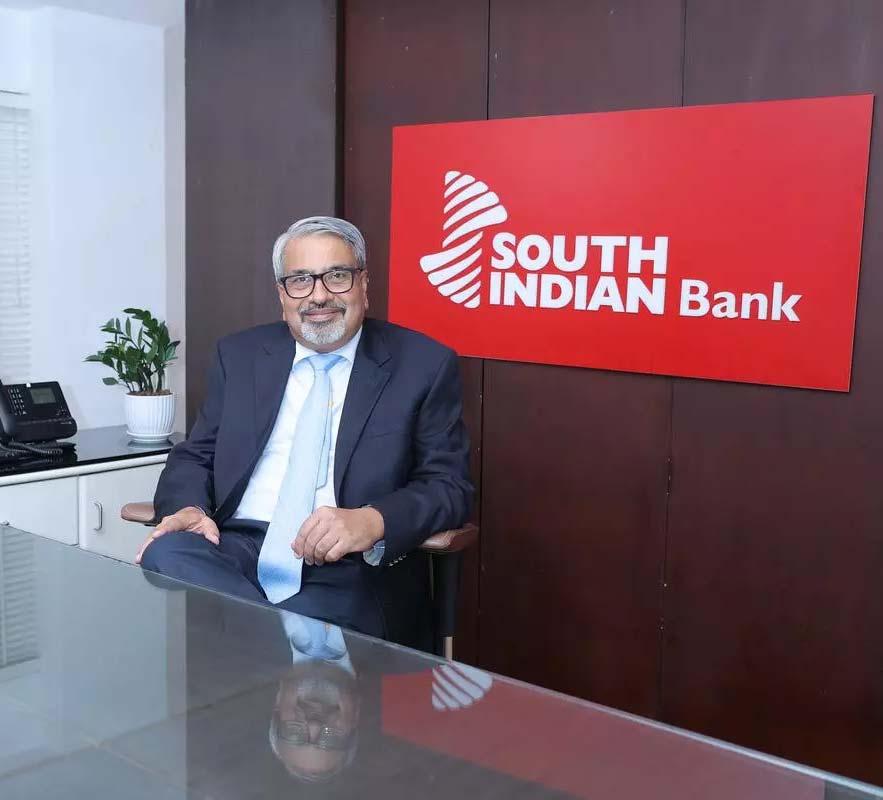



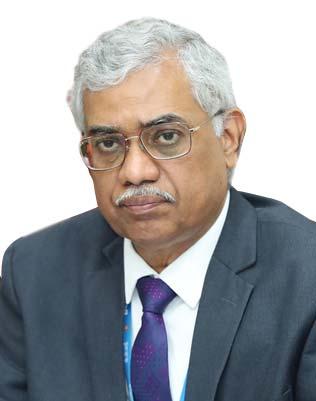
The key profitability metric of Net Interest Margin (NIM) also edged up to 3.49% from 3.47% in the year ago period. Steady increase in asset quality has been a major factor in Indian Bank’s steady performance in profits, and it continued in Q3 too with Gross Non Performing Assets (GNPA) Ratio decreasing by 206 bps to 4.47%, while Net NPA Ratio reduced by 47 bps to 0.53%.
The bank is destined to continue its superior profit growth in the coming quarters and years as it
continues to be a leader among its peers in Provision Coverage Ratio (PCR), with it increasing by a further 231 bps to 95.90%.
THE INDIAN BANK STOCK HAS RIGHTLY REFLECTED THE BANK’S FUNDAMENTAL PERFORMANCE AND HAS MULTIPLIED IN VALUE BY NEARLY 13 TIMES SINCE 2020.
Indian Bank is also a leader in provisioning for standard assets, which shows its conservative stance. A high PCR gives adequate comfort to new investors as the bank’s profit levels will jump if and when these high provisions get reversed in the coming quarters or years.
Gross deposits rose 10% in Q3 despite the tough environment for deposits to reach Rs. 6,54,154 crore. The lower-cost CASA deposits grew by 8%, with savings deposits growing by 7% and current deposits jumping by 12%.
Gross advances of the bank increased by 13% to Rs. 5,09,800 crore, with the better positioned Retail, Agri & MSME (RAM) sector accounting for 63% of the domestic advances. It grew 13% year-onyear to reach Rs. 2,96,845 crore. While retail grew at 14%, agriculture grew at 16% and MSME at 7%. Other key lending sectors too performed well for the bank with auto loans growing by 46%, personal loans growing by 30%, and home loans growing by 7%.
According to MD & CEO SL Jain, the bank’s immediate goals include optimizing its CASA deposit growth and providing even better quality of customer service to both its deposit and credit customers. With such a vision in place, there is no doubt that Indian Bank is destined to deliver not only for its customers but for its shareholders.
Indian Bank’s valuations too remain undemanding - at a TTM P/E of 9.37 times and P/BV of 1.71 times - despite the stock more than doubling during the past 12 months, and multiplying in value by nearly 13 times since 2020.
Imran Amin Siddiqui Executive Director
Mahesh Kumar Bajaj Executive Director
Ashutosh Choudhury Executive Director
Shiv Bajrang Singh Executive Director

UNION BANK 3RD BEST IN PROFIT GROWTH ON RISING REVENUE, IMPROVING ASSET QUALITY
Under the visionary leadership of its MD & CEO, A Manimekhalai, Union Bank of India has delivered its sixth consecutive quarter of steadily rising revenues and profits, as she leads the bank on her stated mission to transform it to the third largest public sector bank by 2025. During this Q3, the bank became the 3rd best in profit growth among all PSBs.


ublic sector bank, Union Bank of India (UBI) has emerged as the third best bank by profit growth among 12 peer PSBs in the third quarter. The Mumbai headquartered lender’s Q3 profit surged by almost 60% year-on-year to reach Rs 3590 crore as against Rs 2245 crore in the Q3 of last fiscal. While its overall performance contributed to this bottomline surge, the key factors were growth in total income, and significant improvement in asset quality that resulted in a sharp decline in provisions against NPAs. The bank’s third rank in net profit growth was despite its core
profitability metric of Net Interest Margin (NIM) dipping slightly to 3.08% from the 3.21% it was, a year ago. Driving this performance was Union Bank’s Total Income growth, with both its core Net Interest Income (NII) and Non-Interest Income growing healthily. Union Bank’s NII was up by about 6% year-on-year, reaching Rs 9,168 crore as against Rs 8,628 crore in the corresponding quarter of last fiscal. An even better performance was witnessed in the Non-Interest Income, as its various components like Fee Income, Treasury Income and Recovery in Written-Off Accounts, surged together by around 15% YoY
 A. Manimekhalai, MD & CEO
A. Manimekhalai, MD & CEO
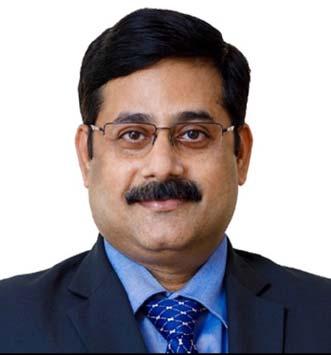


to touch Rs 3,774 crore as against the Rs. 3,271 crore it was last year. But the best improvement across various metrics in Union Bank’s Q3 was seen in its asset quality. Its Gross Non Performing Assets (GNPA) Ratio improved significantly from the 7.93% it was last year to 4.83% now. The Net NPA (NNPA) Ratio also witnessed a major improvement as it halved from the 2.14% it was during last fiscal’s Q3 to just 1.08% now. The main drivers of the NPA improvement were Recoveries of Rs 9318 crore, Cash Recovery of Rs. 2725 crore and Upgradation of Rs 1388 crore, amounting to a total of Rs 13,431 crore. In the year-ago quarter the reduction in NPAs was around Rs
4,188 crore. Consequently, Provisions toward NPAs and some Non Performing Investments, improved to Rs. 1320 crore as against the Rs 3304 crore it was during Q3 of FY’23. Even amid a tough environment for attracting deposits, and against a relatively high base, Union Bank displayed an impressive resilience with Total Deposits growing healthily by over 10% YoY to reach Rs 11,72,455 crore, even though the share of Current Accounts & Savings Accounts (CASA) deposits dipped marginally to 34.40% from the 35.35% it was in last Q3. By percentage points, the bank’s asset side growth was even better with Gross Advances increasing by 11.44% YoY to Rs 8,95,974 crore in Q3. While
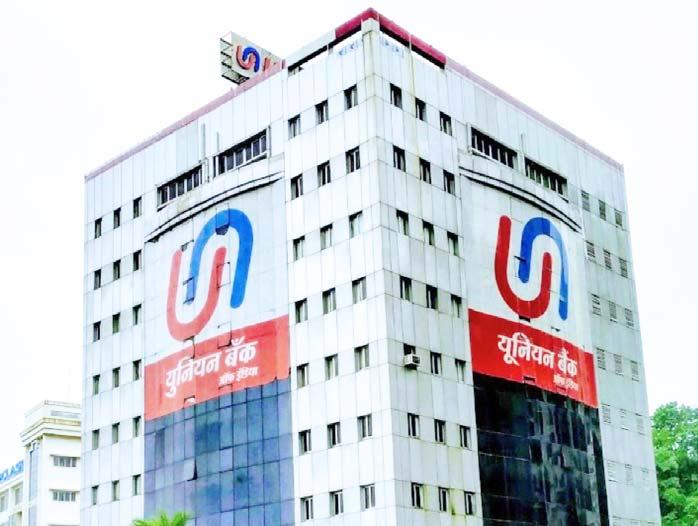

Domestic Advances grew by 10.69%, the smaller component of Overseas Advances soared by 39.41%. Union Bank has also come a long way from the primarily corporate lender it once was to a more diversified lender with Agricultural Advances growing by 17.88%, Retail Loans by 12.60% and MSME Loans growing by 10.51% as against its mainstay of Corporate Advances growing by 8.68%. Union Bank also brought cheer to its investors, with its stock price surging by 2.5 times during the last 12 months, and over 5 times during MD & CEO A Manimekhalai’s tenure so far. During August last year, Union Bank of India under her leadership had paid its highest ever dividend of Rs 1,712 crore to its promoter and majority shareholder, Government of India, which holds nearly 77% of its stock.
Nitesh Ranjan, Executive Director
Nidhu Saxena, Executive Director
Ramasubramanian S, Executive Director
Sanjay Rudra, Executive Director

THERE ARE RAILWAY STO AND THEN THERE IS IRCO

OCKS, ON
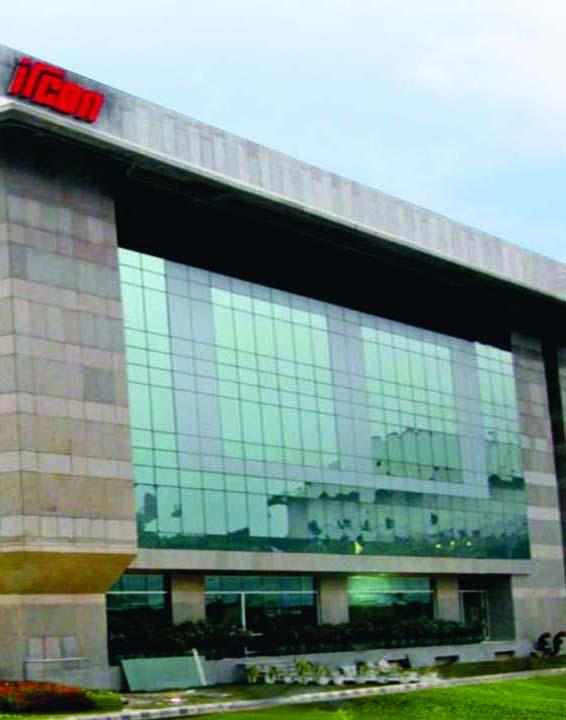
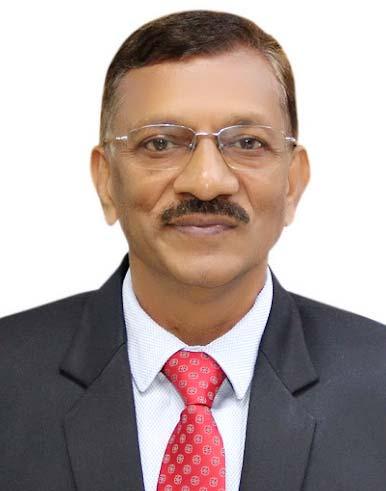
As railway PSU stocks correct and stabilise after a dream run, a high quality company like IRCON is naturally in focus, despite soaring 5.6 times from last Q3 to this Q3, as this engineering and construction major has the performance to match its valuations.
Brijesh Kumar Guptha CMD

FY’24 will go down in the Indian capital market history as the fiscal where Central Public Sector Enterprises (CPSEs) assumed their rightful share of the limelight with a dramatic rerating. And among the CPSEs, the pack that really went over the roof were the PSU railway stocks, long back ago incubated in their giant of a parent, Indian Railways. While much of this capital market rerating and outperformance was driven by the Central Government’s enlarged capex in the railway infrastructure of the country, there has also been the factor of the market searching for safe havens, given the relentless run up in small caps, mid caps and generally in private listed firms. The railway stocks were the perfect safe havens back then, that is around a year back, when they were available for single digit P/Es and almost at their book values. But the situation has dramatically changed since then, with many of them trading way above even their private sector peers, in P/Es that have crossed 30s, 40 and even 50s, and with matching and soaring P/ BV multiples. While most of them are great companies, such a too steep run up too soon has also resulted in some merciless corrections in recent weeks in several railway stocks. Now, the market has turned more discerning


about the real underlying quality behind each of these PSU stocks, and this is where IRCON really shines through. Before its IPO in September 2018, IRCON was a hidden treasure. But ever since then, the high quality financial performance of this engineering and construction firm was evident to the market. IRCON’s consolidated annual revenue has steadily grown by over 2.16 times between FY’19 to FY’23 from Rs 4,798 crores to Rs. Rs 10,367 crores. And its consolidated annual net profit has grown during this same period by over 1.71 times from Rs. 428 crore to Rs. 733 crore. But it is not just in growth terms that IRCON has displayed its superior financial performance. Its core quality metric of Return on Equity (RoE) has inched up steadily from 11.35 in FY’19 to 14.68 in FY’23, while its Debt-to-Equity Ratio has moderated from 0.65 to just 0.29 now, during the same period. During all these years, and for all these growth and quality metrics, IRCON has dipped only marginally during the Covid period, but soon after that this Navaratna PSU bounced back to even higher levels under the leadership of its highly capable Director Board. This is one reason why this high quality PSU rail stock soared by 5.6 times from last
Q3 to this Q3, as the sector got rerated. The Board is currently led by its visionary Chairman & Managing Director Brijesh Kumar Gupta, who is an MTech from IIT Delhi, apart from being trained at Carnegie Mellon University, USA and SDA Bocconi Business School, Milan, Italy. Brijesh Kumar Gupta is an multiple times award winning civil engineer and also a member of the apex Railway Board. And the Q3 numbers continue IRCON’s robust yet steady performance for yet another quarter. Its consolidated revenue in the third quarter of the current fiscal rose 23% to Rs 2,884 crore, from Rs 2,346 crore in the same period last year. And IRCON reported a rise of 29% in its consolidated net profit at Rs 244 crore, as against Rs 190 crore in the year-ago period. Showing strong operational performance, The PSU major’s EBITDA rose 63.2% with its EBITDA margin at 12.6%. IRCON order book remains strong at Rs 29,436.1 crore in the December quarter with railway orders making up 72.3% and highway projects making up 20.7%, with other segments contributing around 7%. IRCON also declared an interim dividend of Rs.1.80 per equity share on the face value of Rs 2 each for the financial year 2023-24.
Ragini Advani, Director (Finance)
Parag Verma, Director (Works)
Anand Kumar Singh, Director (Projects)

Is TMB a Hidden Treasure?
With a steady growth in revenue and profit over the past five years including the two pandemic years, as well as during the past five consecutive quarters, and steadily improving asset quality, not to mention innovative products like TMB RERA and TMB GST, this 103 year old traditional private sector bank, led by veteran banker S Krishnan, is worth watching for both discerning customers as well as discerning investors.
S Krishnan MD & CEO

In an overheated market, where almost all good shares have run up even beyond the expectations of its promoters or diehard fans, the focus naturally shifts to relatively lesser known and under owned stocks. But in financials, especially banking, such stocks are difficult to come by.
Even if there is indeed such a bank, it will be riddled with too many issues like high NPAs or stagnant growth which makes it unattractive. This is where Thoothukudi headquartered Tamilnad Mercantile Bank (TMB) deserves a closer look.
TMB may not be the fastest horse out there, but it is surely a very stable one that runs pretty fast too. For the last four full fiscal years of this decade, that is from FY’20 to FY’23, TMB’s revenue has only grown and grown steadily, and not dipped even once.
And this includes the unprecedented Covid fiscals of FY’21 and FY’22. Coming to the bottomline, the story is even better with TMB nearly quadrupling its profit during this period, from Rs. 259 crore to Rs. 1029 crore.
Again, there is no dip, but only

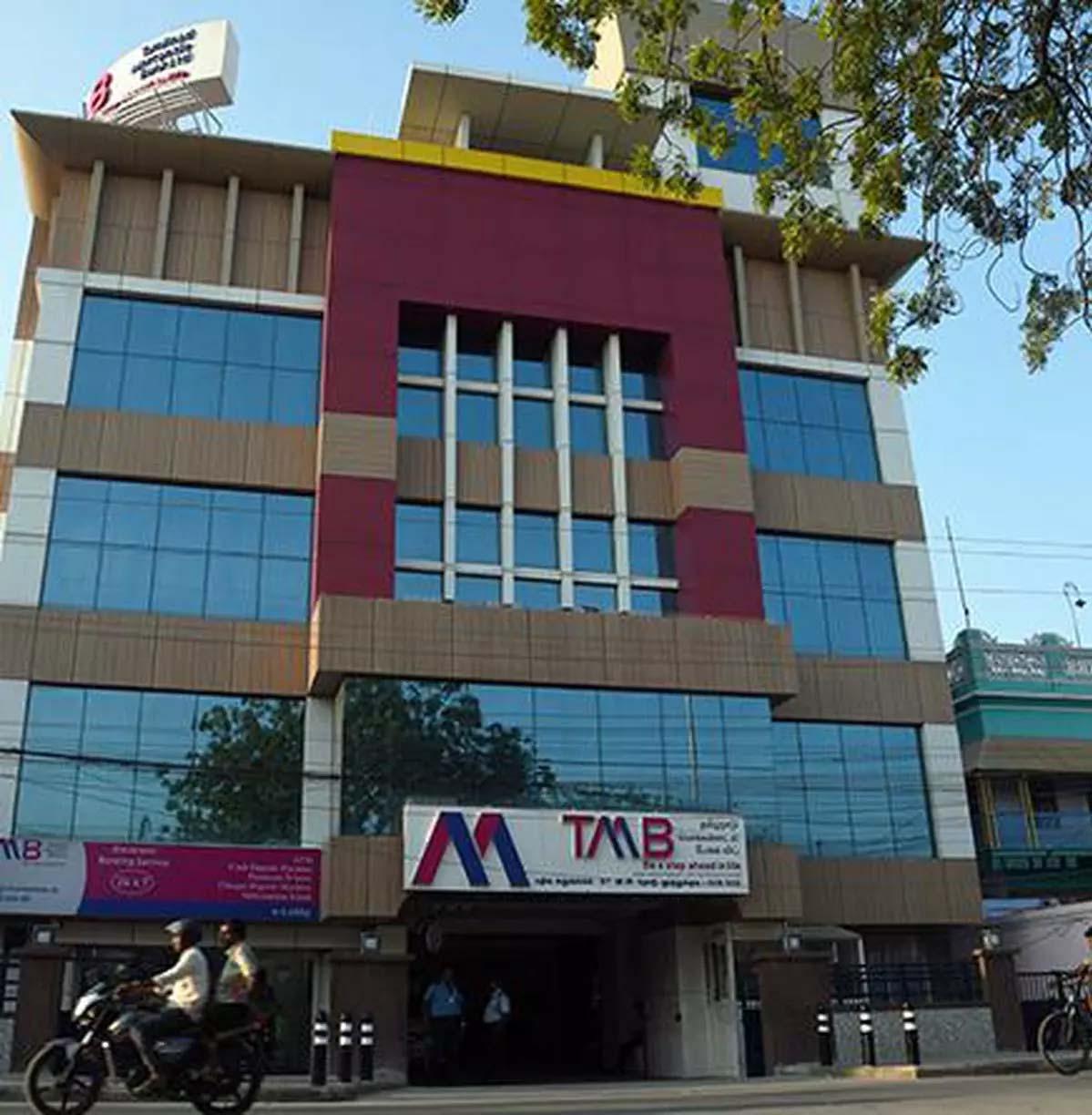
extra strong growth during the two pandemic years, which is a feat not many banks have achieved whatever be their size.
In September 2022, the traditional private sector bank got a shot in its arm, when veteran banker S Krishnan was appointed as its MD

& CEO. Krishnan, a veteran of Chennai headquartered public sector lender, Indian Bank, later worked as an Executive Director at Syndicate Bank and Canara Bank, and spearheaded their smooth and successful merger.
Soon Krishnan moved on to head
 P.Suriaraj, General ManagerD.Inbamani, General ManagerD.Ramesh, General Manager
P.Suriaraj, General ManagerD.Inbamani, General ManagerD.Ramesh, General Manager



the PSU lender Punjab & Sind Bank as its MD & CEO, where he effected a positive turnaround of the embattled bank within a period of two years. At TMB, Krishnan had to hit the ground running, as on the second day of his tenure, the 103-year old bank’s IPO opened.
While the public issue was well received, with nearly 3 times oversubscription, it started trading rather flat on September 15 2022 and soon dipped in sync with the Bank Nifty. But within months, discerning investors understood the steady performance of TMB and the stock soared by over 50% within the six months from April to October 2023.
Meanwhile the bank continued its steady fundamental performance in FY’23 and beyond. However, a string of unfortunate incidents again played spoilsport for TMB and it is now trading just below its IPO levels with a reasonable valuation of 7.24 P/E and 1.13 P/ BV and with a healthy dividend yield of over 2%.
While the bank has since then cleared all the unfortunate issues promptly, it is also to its credit that
during the five consecutive quarters since its IPO, its revenue and profit have continued to grow steadily. During this recent Q3 too, this steady performance continues at TMB with total income growing by over 18% to Rs 1387 crore.
Other highlights of this quarter include steadily improving asset quality with NPAs at 1.69% and reasonable growth across both deposits and advances, with most loan segments including retail, MSME & agriculture witnessing good to strong growth.
Under MD & CEO S Krishnan’s able leadership, Tamilnad Mercantile Bank is now having a pan-India presence with 547 branches and 12 regional offices across 17 states and 4 Union Territories and serves more than 5 million customers.
He is ably assisted in leadership duties by a team of 7 General Managers, P Suriaraj, D Inbamani, D Ramesh, V Jayaraman, S Narayanan, PA Krishnan and J Sundaresh Kumar. Under this team’s exemplary leadership, TMB has also become a technologically state-of-the-art bank with net

banking, mobile banking, UPI bill payments etc.
Tamilnad Mercantile Bank is also proving itself to be an innovative and value added bank for both its retail and corporate customers with tailor made products like TMB RERA for developers, TMB GST for corporates, TMB MSME Easy Credit, TMB Green Energy, TMB Home Loans, TMB Mini LAP, and more.
V.Jayaraman General Manager
S.Narayanan General Manager
P.A.Krishnan General Manager - CFO (Chief Financial Officer)
J.Sundaresh Kumar General Manager - CCO (Chief Compliance Officer)



















































 SEASONAL MAGAZINE
SEASONAL MAGAZINE









 SEASONAL MAGAZINE
SEASONAL MAGAZINE



 Dr.B.Suresh, Pro Chancellor JSS Academy of Higher Education & Research
SEASONAL MAGAZINE
Dr.B.Suresh, Pro Chancellor JSS Academy of Higher Education & Research
SEASONAL MAGAZINE








 Vishal Hegde Pro Chancellor
Prof. Dr. Shantharam Shetty Pro Chancellor
SEASONAL MAGAZINE
Vishal Hegde Pro Chancellor
Prof. Dr. Shantharam Shetty Pro Chancellor
SEASONAL MAGAZINE











































 MAZAGON DOCK SHIPBUILDERS
MAZAGON DOCK SHIPBUILDERS


 SEASONAL MAGAZINE
SEASONAL MAGAZINE




 Cdr. Jasbir Singh, Director (Submarine & Heavy Engineering)
Shri Biju George Director (Shipbuilding)
Cdr. Jasbir Singh, Director (Submarine & Heavy Engineering)
Shri Biju George Director (Shipbuilding)







 SEASONAL MAGAZINE
SEASONAL MAGAZINE


 ADITYA VIRWANI, COO, Embassy Group
SEASONAL MAGAZINE
ADITYA VIRWANI, COO, Embassy Group
SEASONAL MAGAZINE













 SEASONAL MAGAZINE
SEASONAL MAGAZINE

 NIRUPA
Joint Managing Director
NIRUPA
Joint Managing Director






 SEASONAL MAGAZINE
SEASONAL MAGAZINE








 SEASONAL MAGAZINE
SEASONAL MAGAZINE








 SEASONAL MAGAZINE
SEASONAL MAGAZINE






























 A. Manimekhalai, MD & CEO
A. Manimekhalai, MD & CEO

















 P.Suriaraj, General ManagerD.Inbamani, General ManagerD.Ramesh, General Manager
P.Suriaraj, General ManagerD.Inbamani, General ManagerD.Ramesh, General Manager



